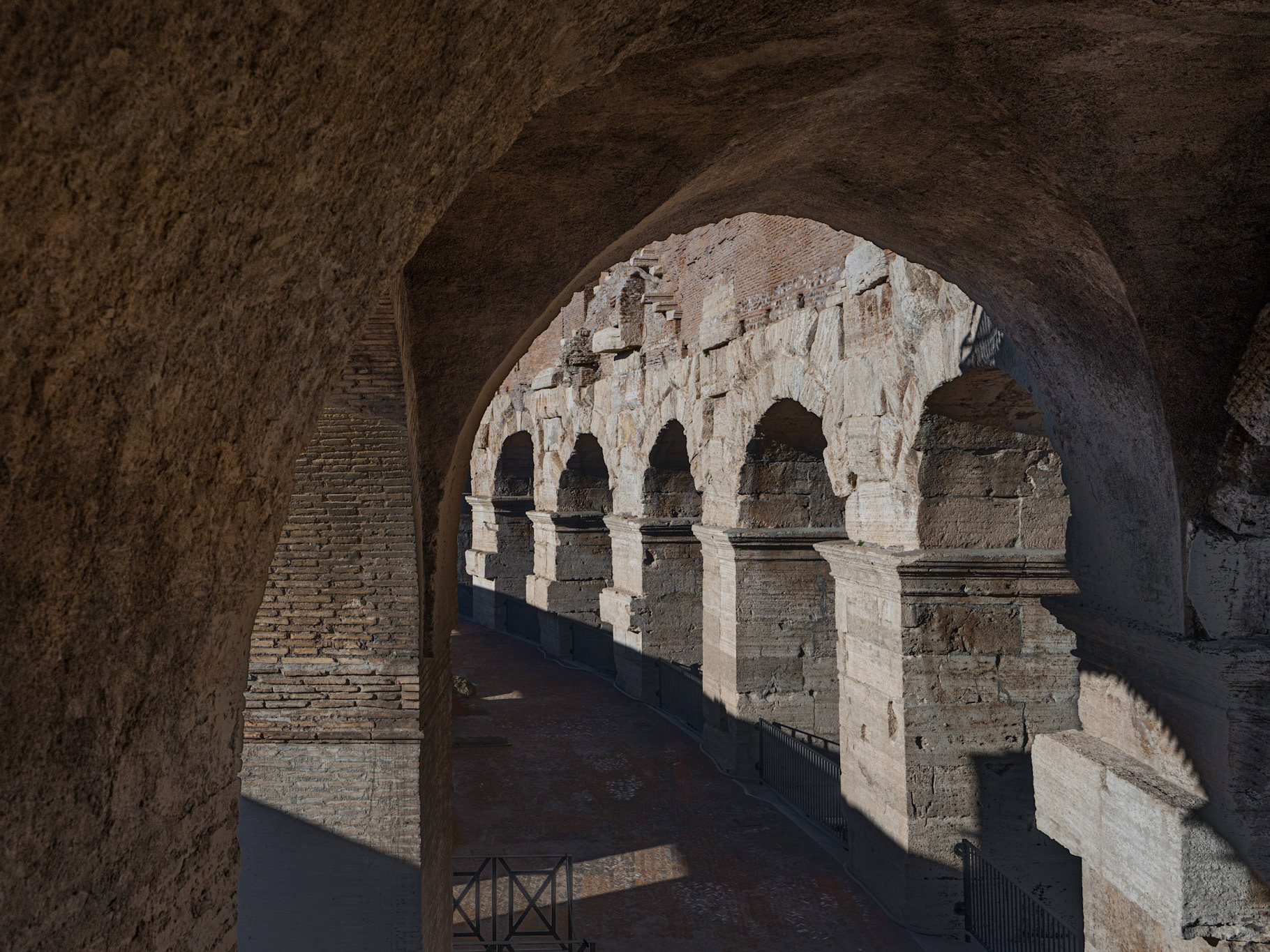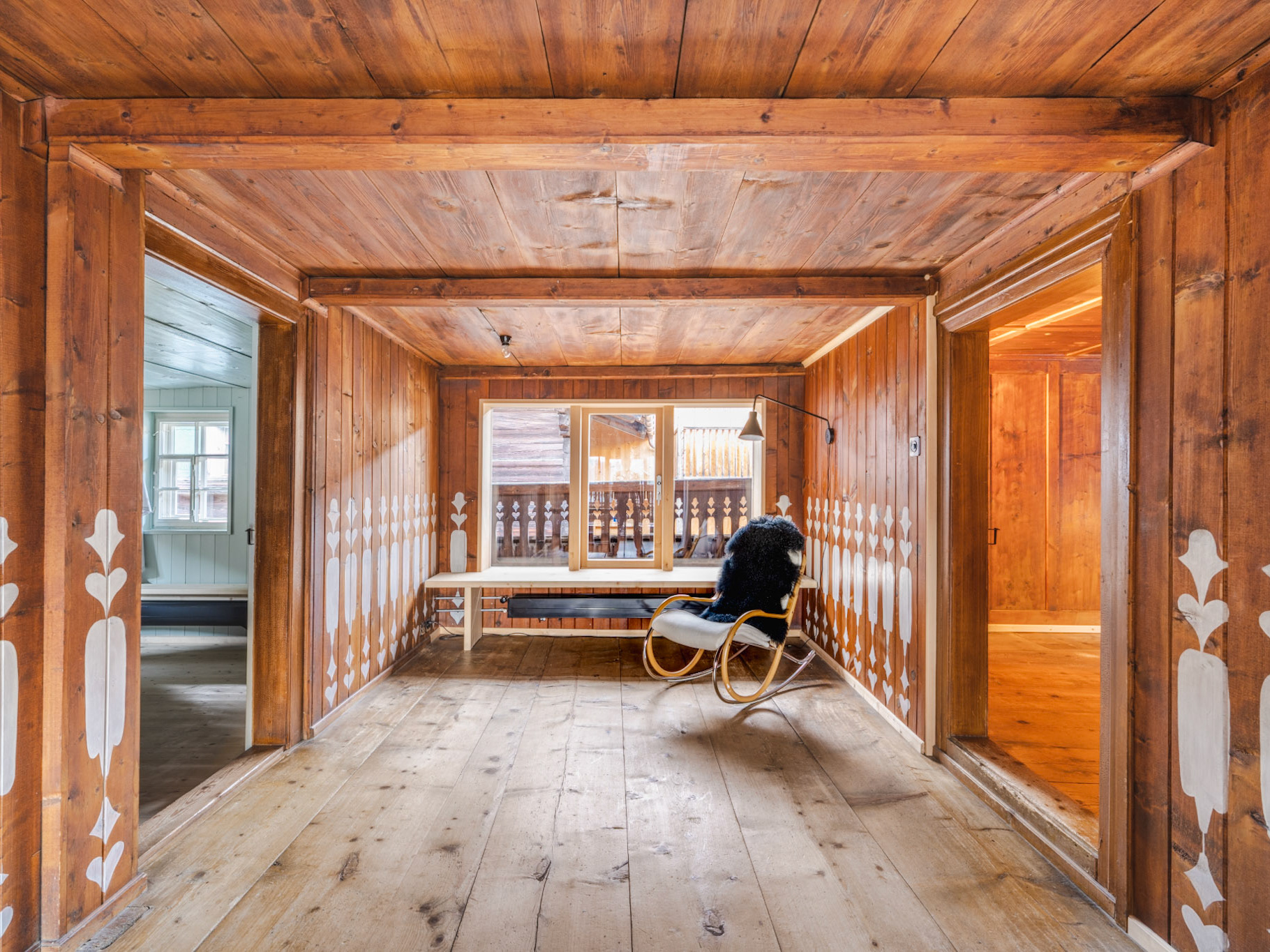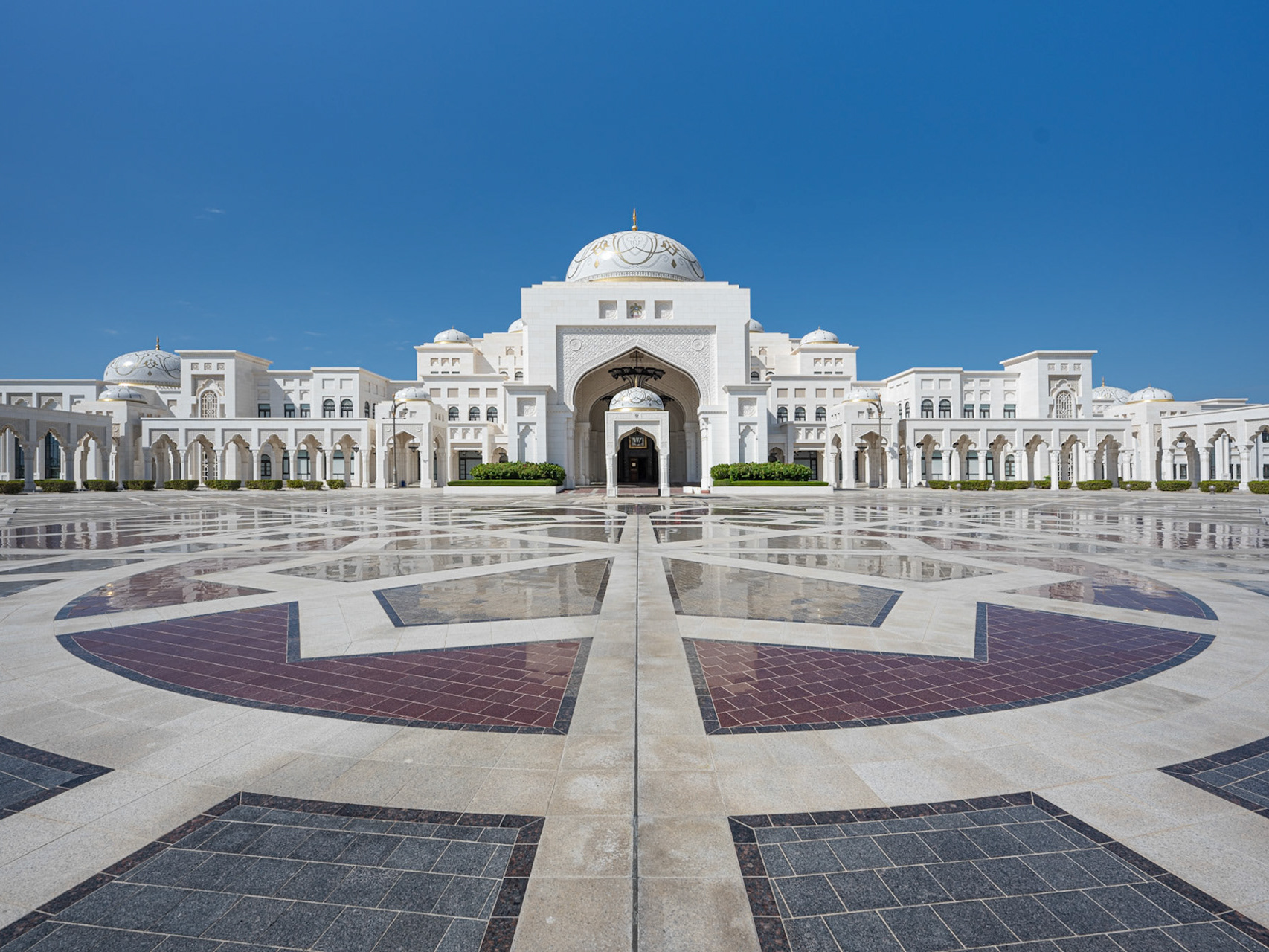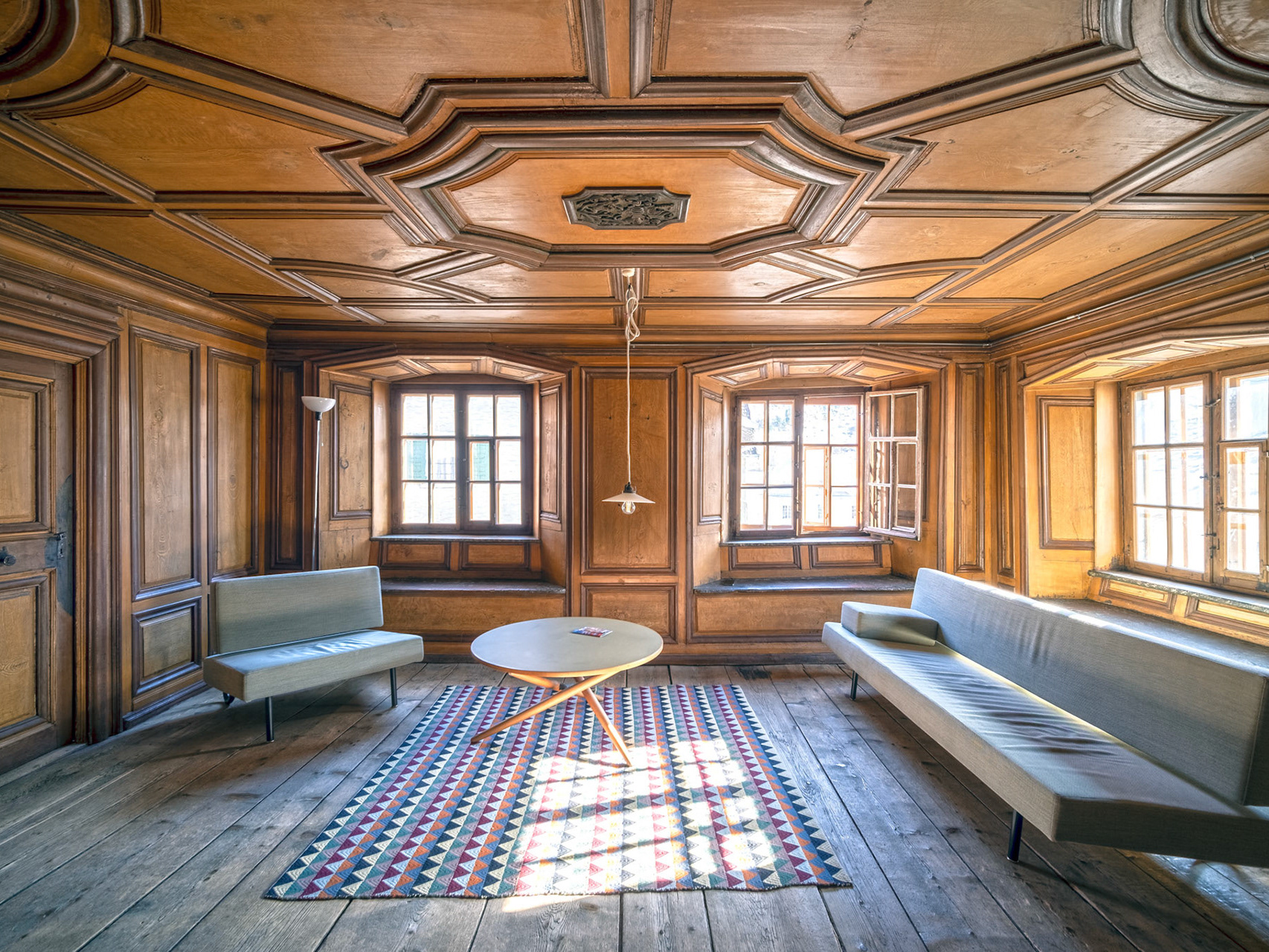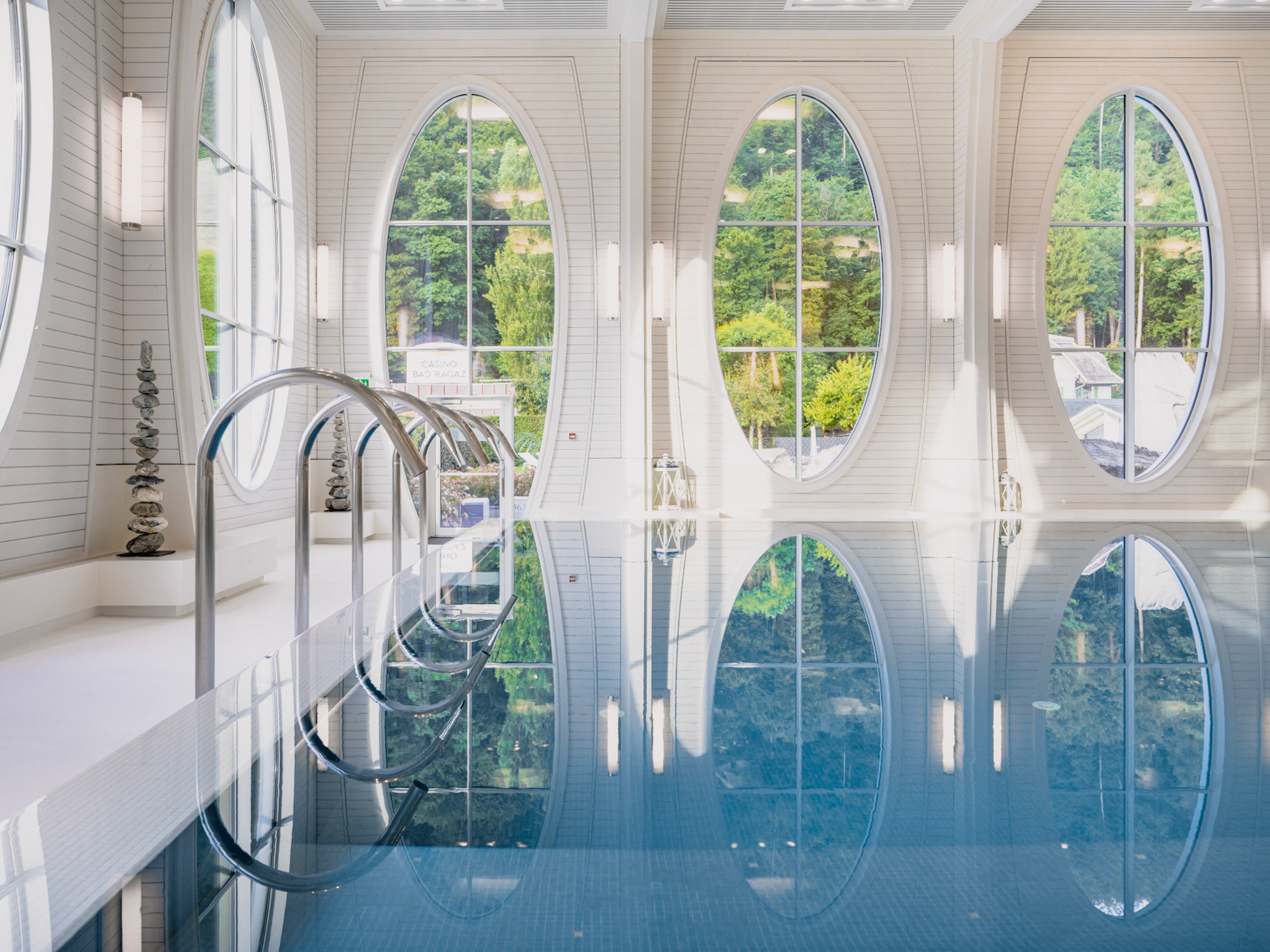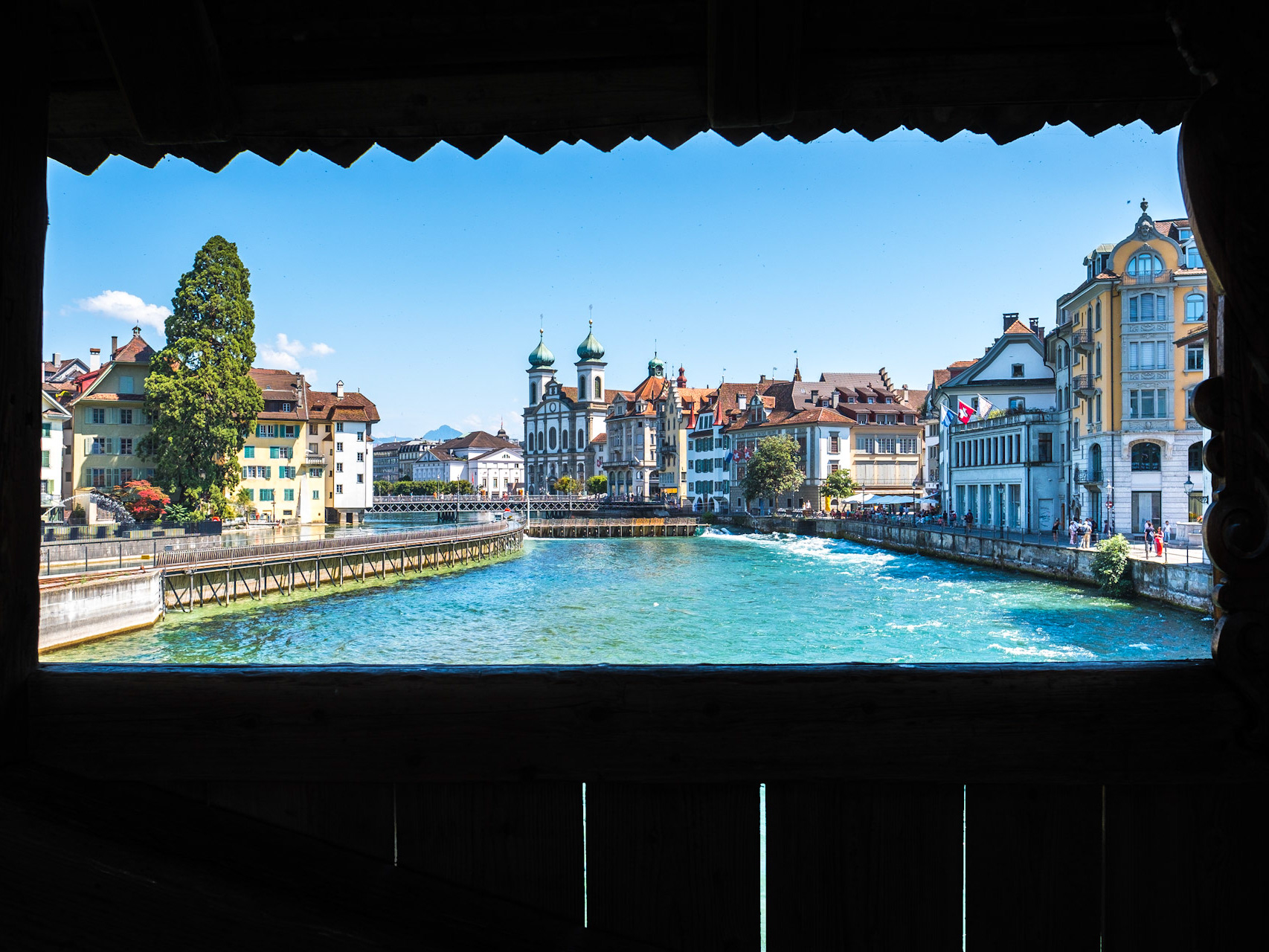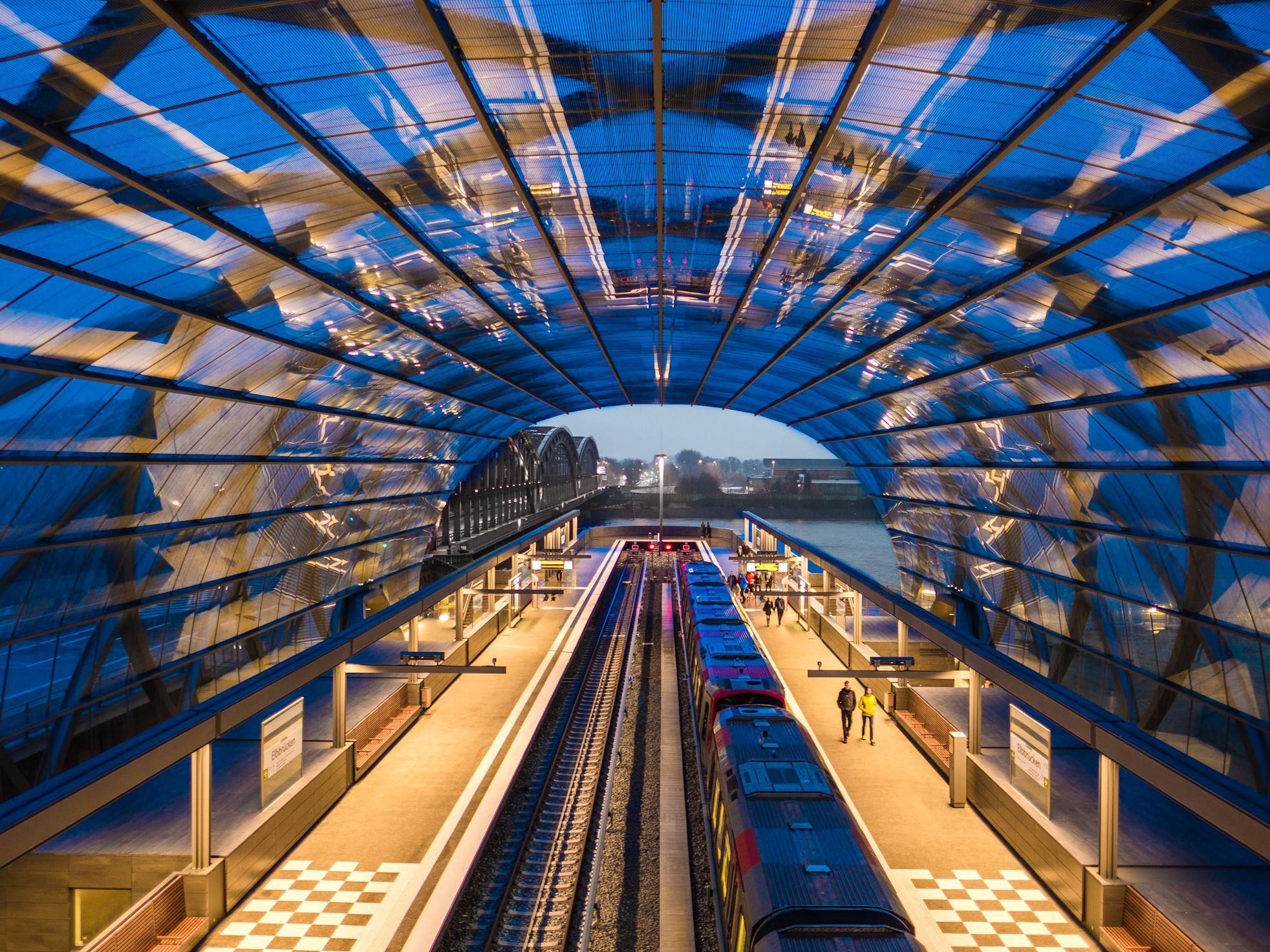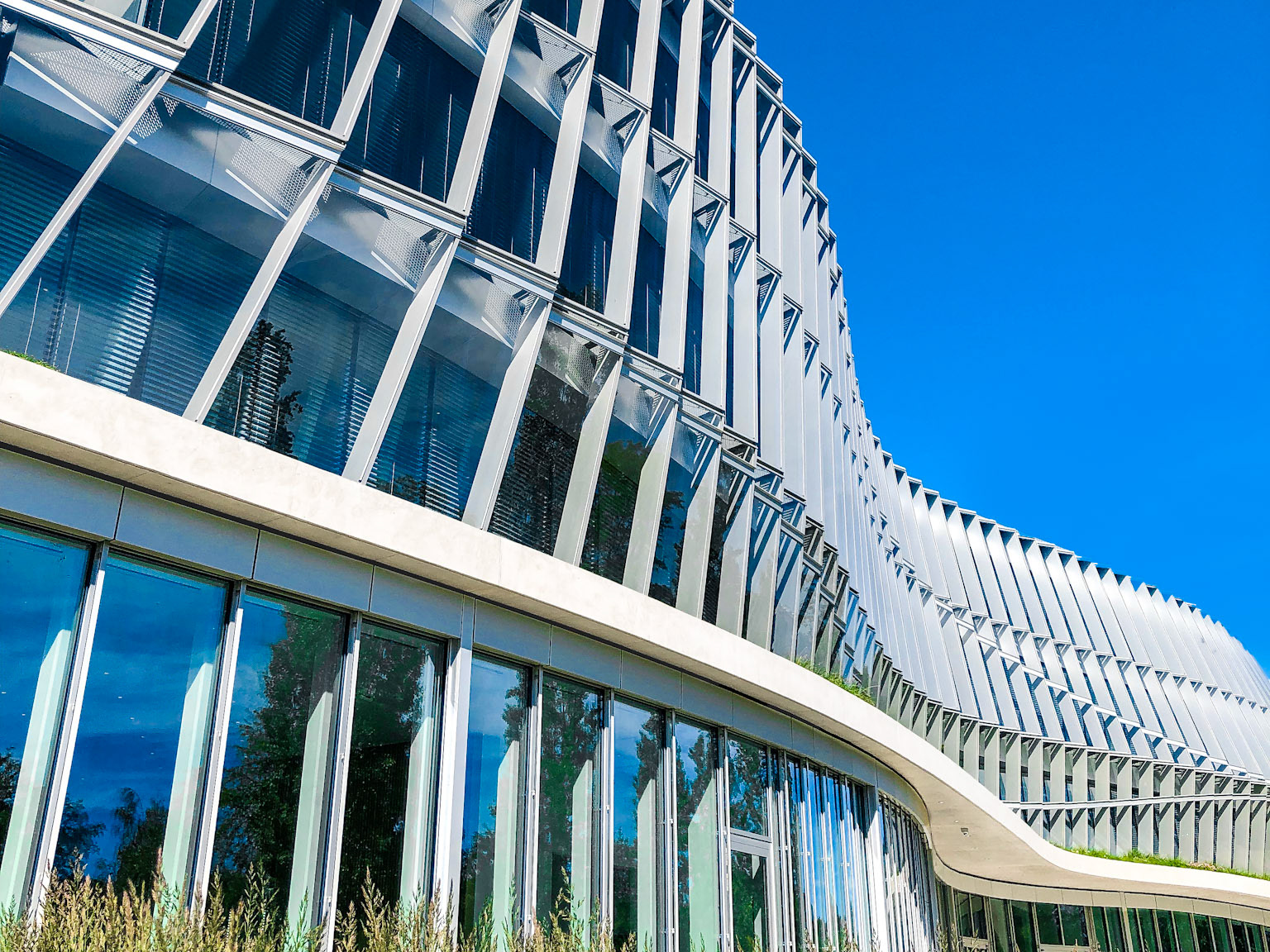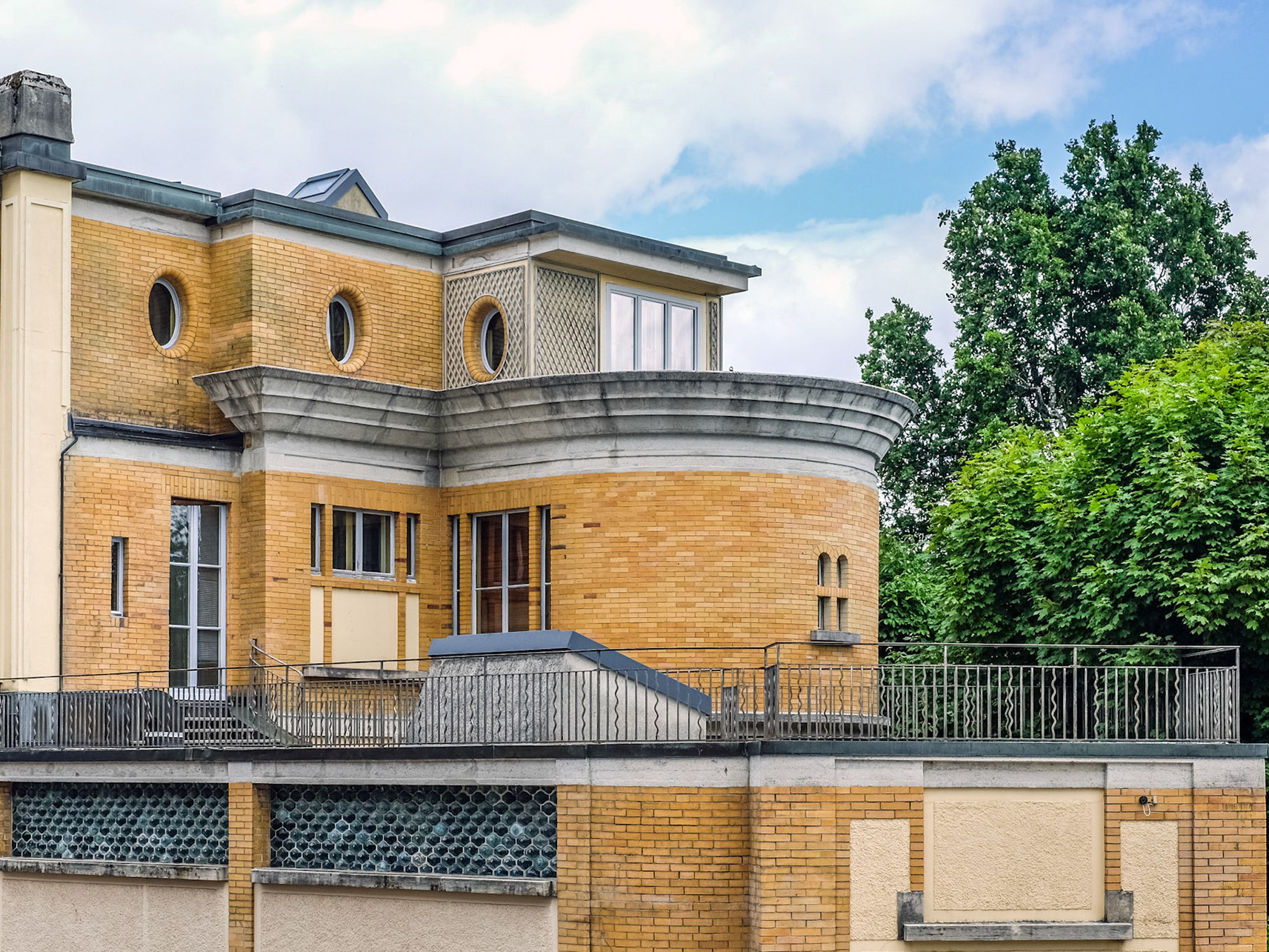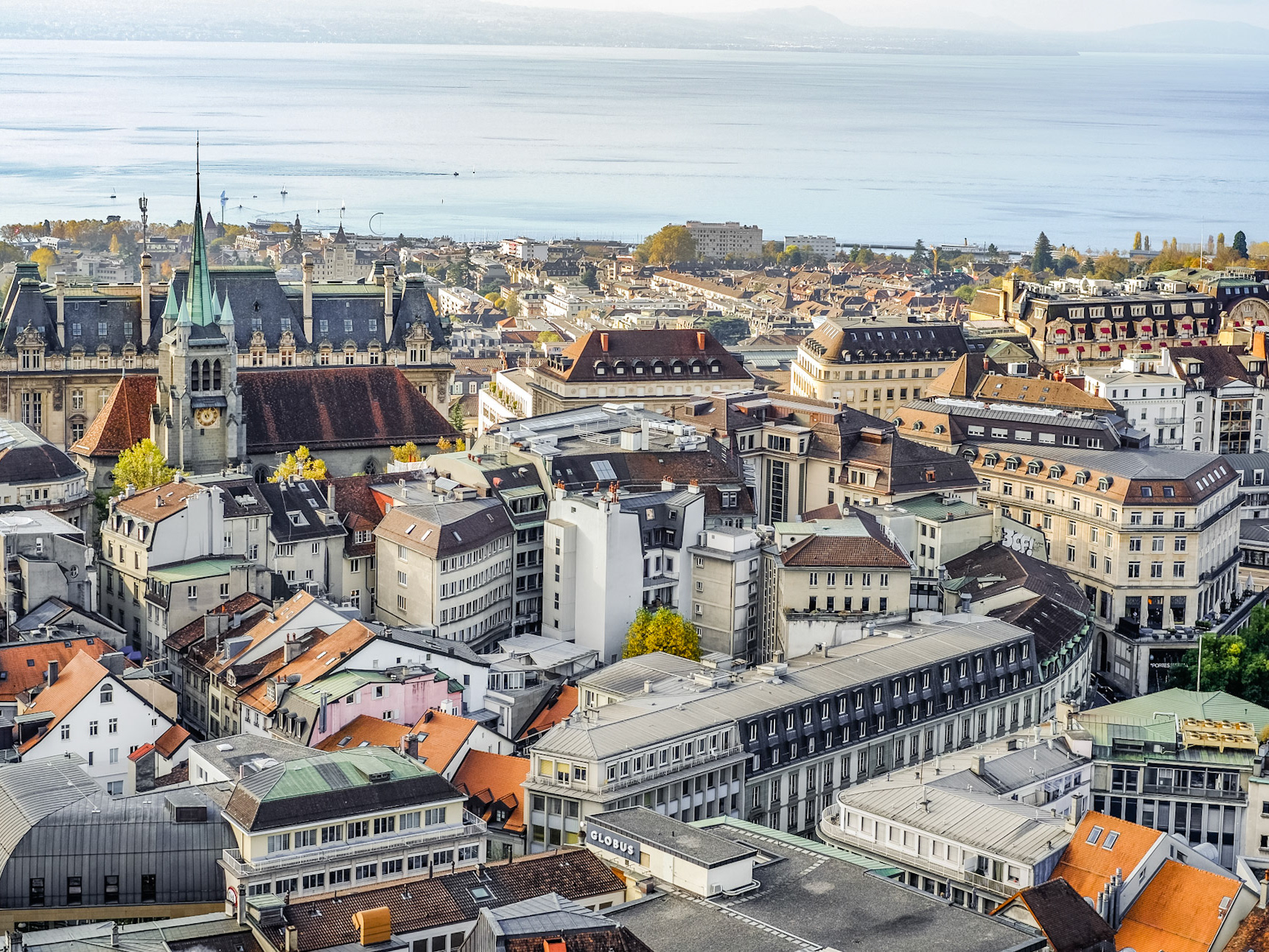As its twentieth canton, Valais joined the Swiss confederation relatively late in 1815. This breathtaking region for outdoor enthusiasts boasts Switzerland's highest peak, the Dufourspitze, nestled in the Monte Rosa massif, alongside the iconic Matterhorn.
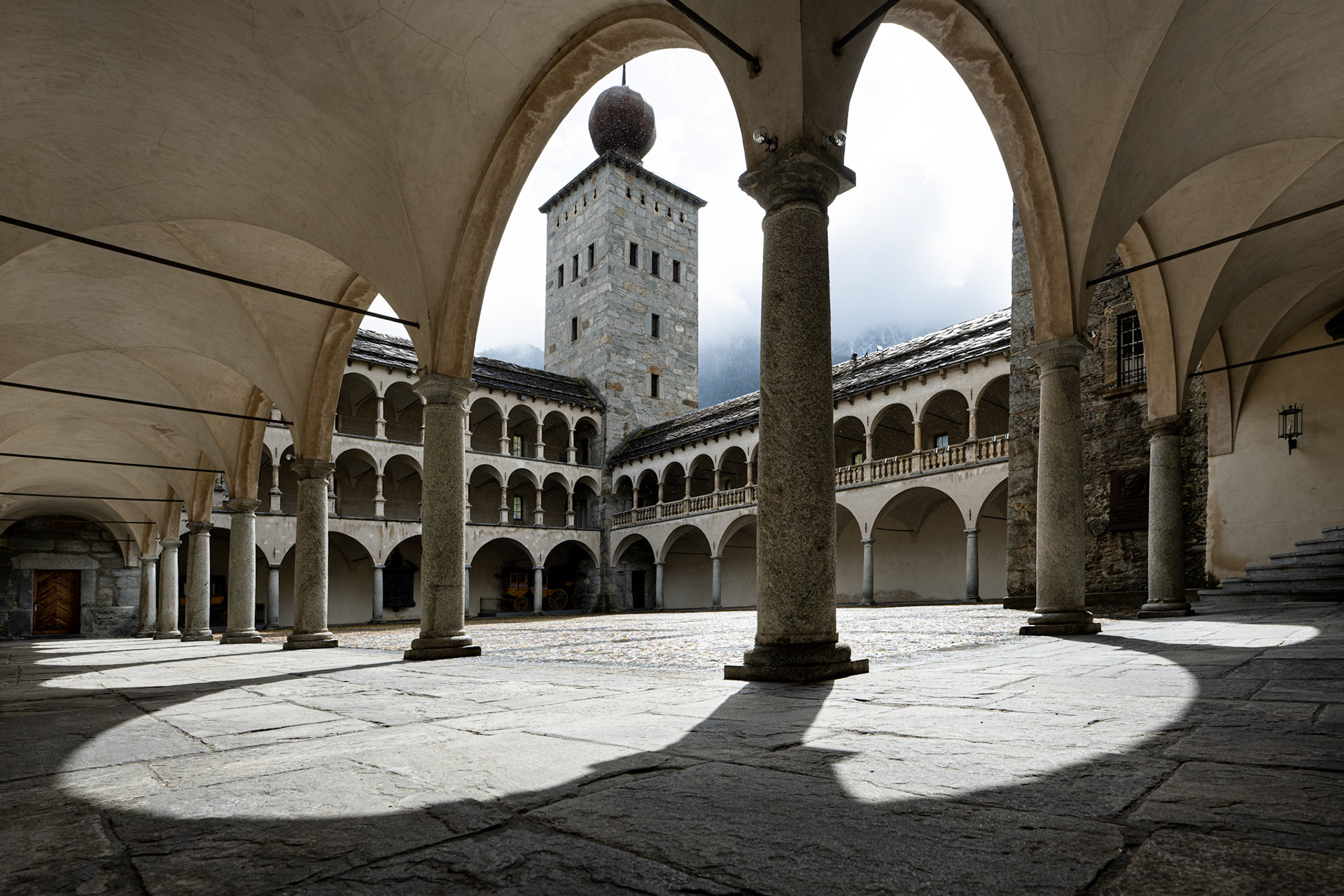
Stockalperschloss
Renowned for its culinary delights, Valais has Switzerland's largest wine-producing area and is celebrated for its raclette. Architecturally, Valais impresses with its picturesque mountain retreats, some of which are car free and accessible only by cable cars or mountain railways. It is also home to the world's tallest gravity dam and allows its visitors to cross some awe-inspiring suspension bridges.
Exploring Valais in late spring offered us a captivating journey through its multifaceted landscape and bilingual culture.
On the way from Lausanne to Ernen, we made a first stop in Sion.
Culture in Sion
Sion, the capital of Valais, boasts a rich variety of architecture, from medieval castles and ancient churches to charming cobblestone streets lined with cafes and boutiques. Its Rue du Grand-Pont offered lots of options for our lunch.
Sion's Cathedral was built between the end of the 15th century and the beginning of the 16th century. Its Romanesque bell tower from the 12th century was preserved. Rising proudly, its five floors culminate in an elegant octagonal brick spire.

Cathédrale de Sion - facade
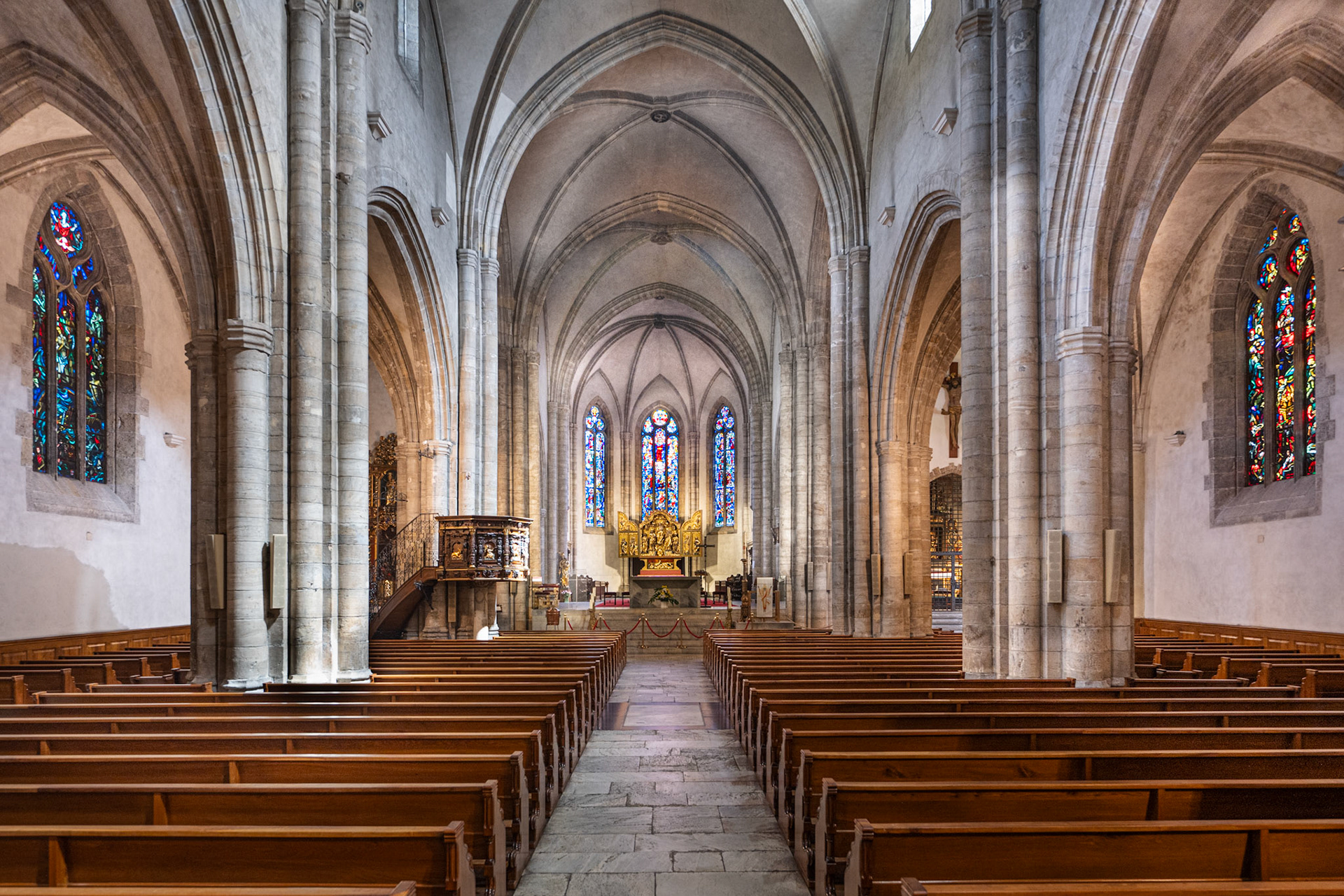
Cathédrale de Sion - nave
Among the highlights of the cathedral's interior are its stained glass windows. In 1949, the ones in the apse were created by Auguste Wanner. The stained glass windows in the nave were created by Paul Monnier between 1951 and 1952.
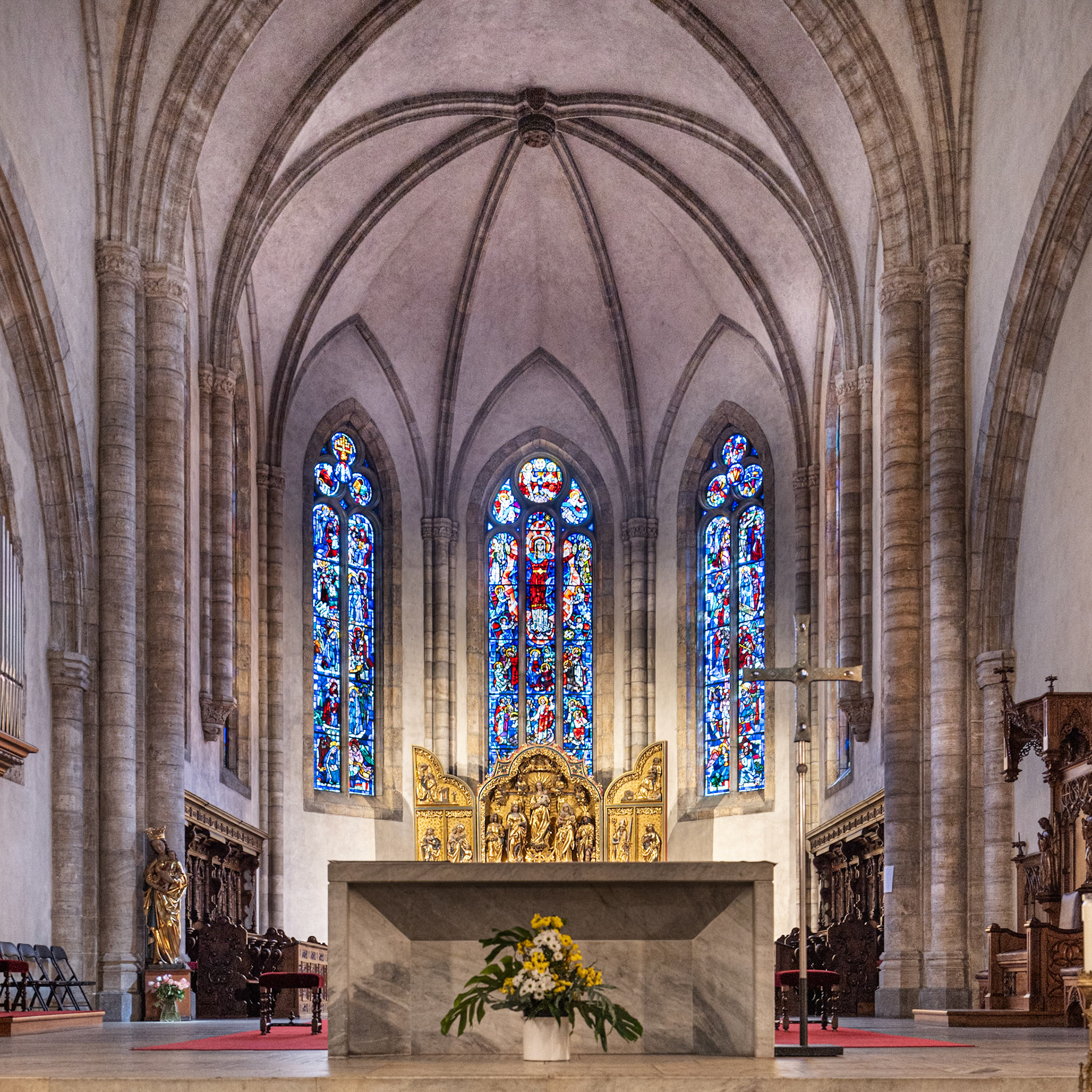
stained glass windows in the apse by Auguste Wanner
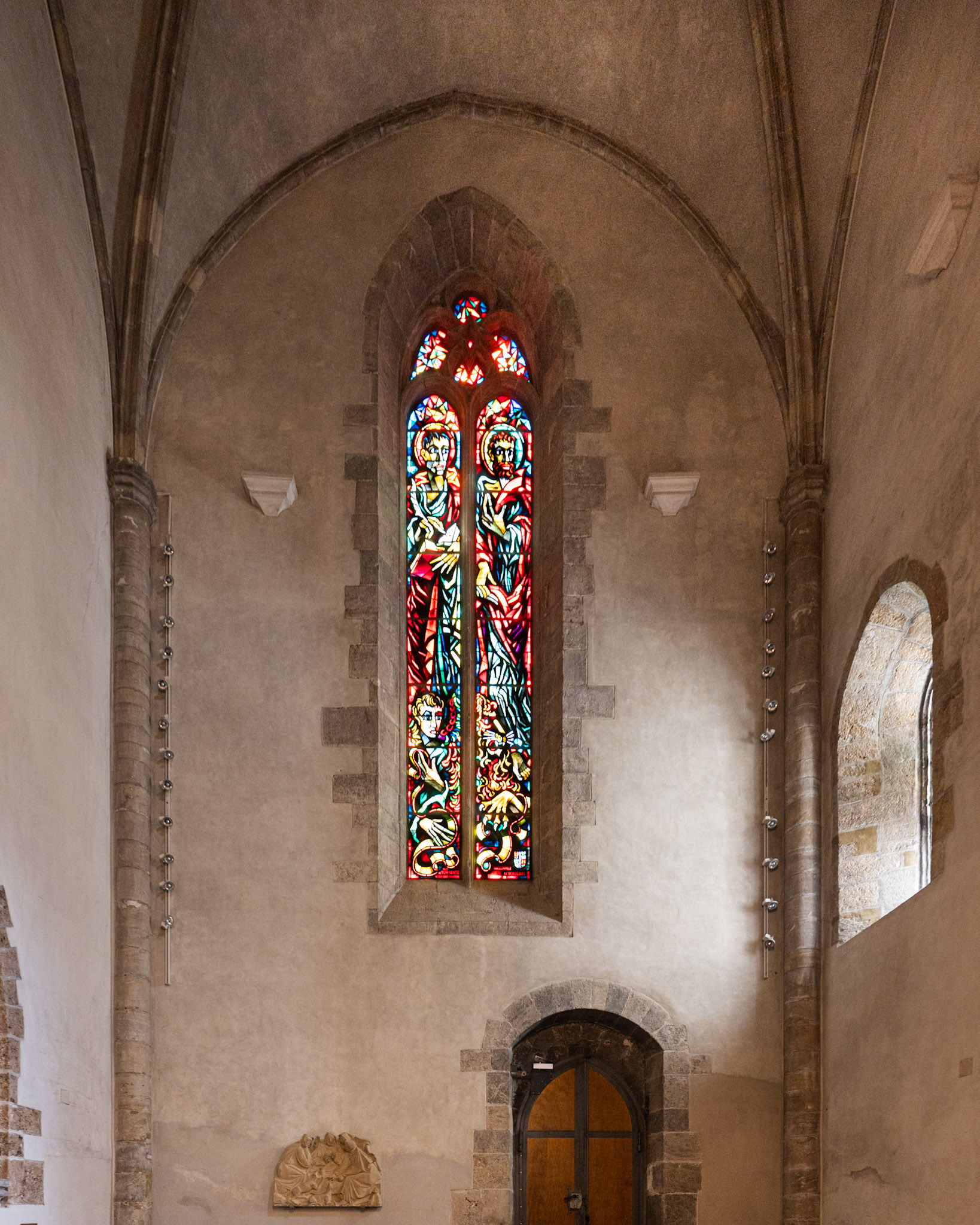
stained glass windows in the nave by Paul Monnier
A five minute walk away, the Valais art museum is located inside the Vidomnat and Majorie castles.
Owning an extensive collection of over 6,000 works of art, the museum showcases a diverse array of 150 in the permanent exhibition. The terrace offers stunning views over the Tourbillon castle and the Basilique de Valère.
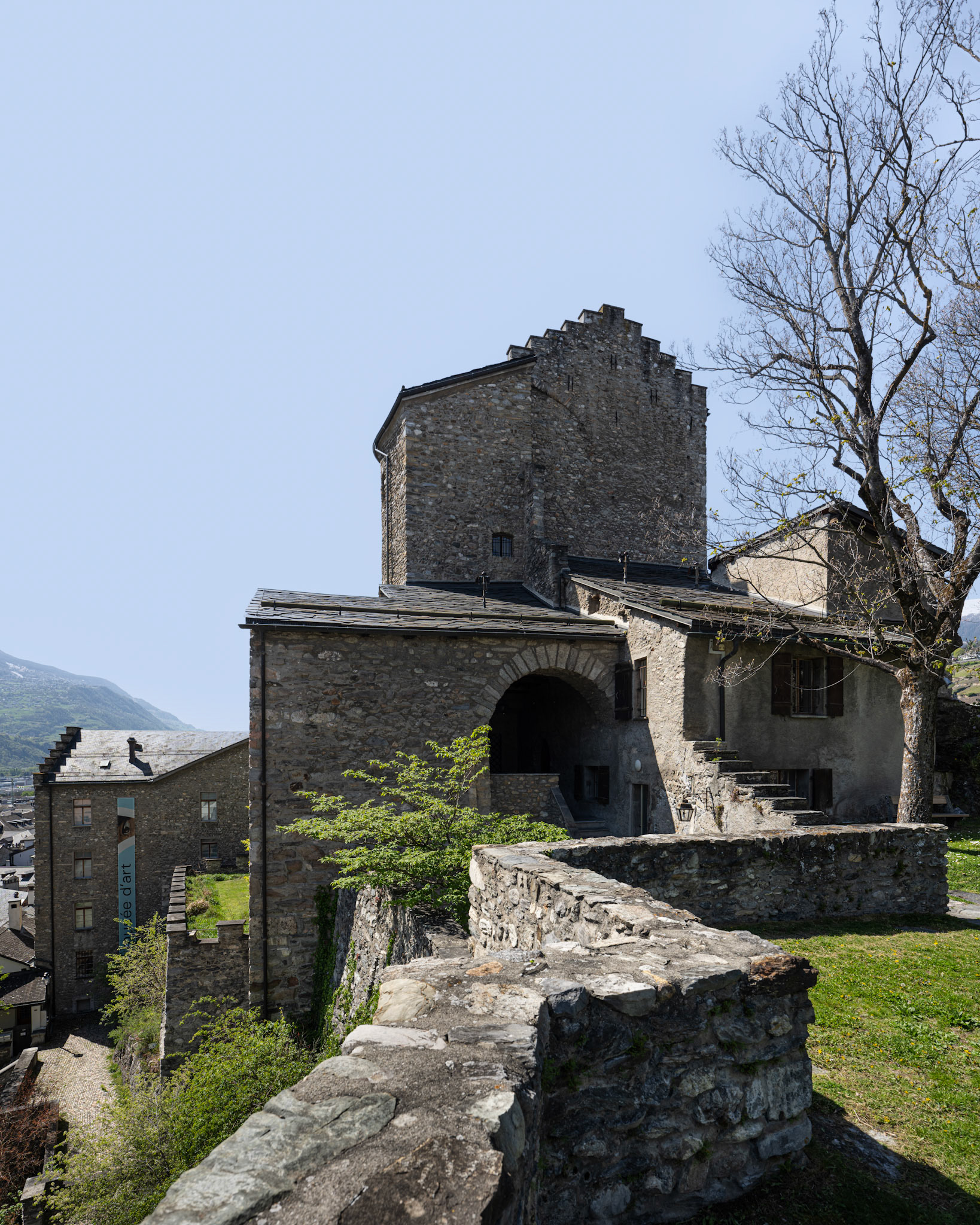
Valais Art Museum
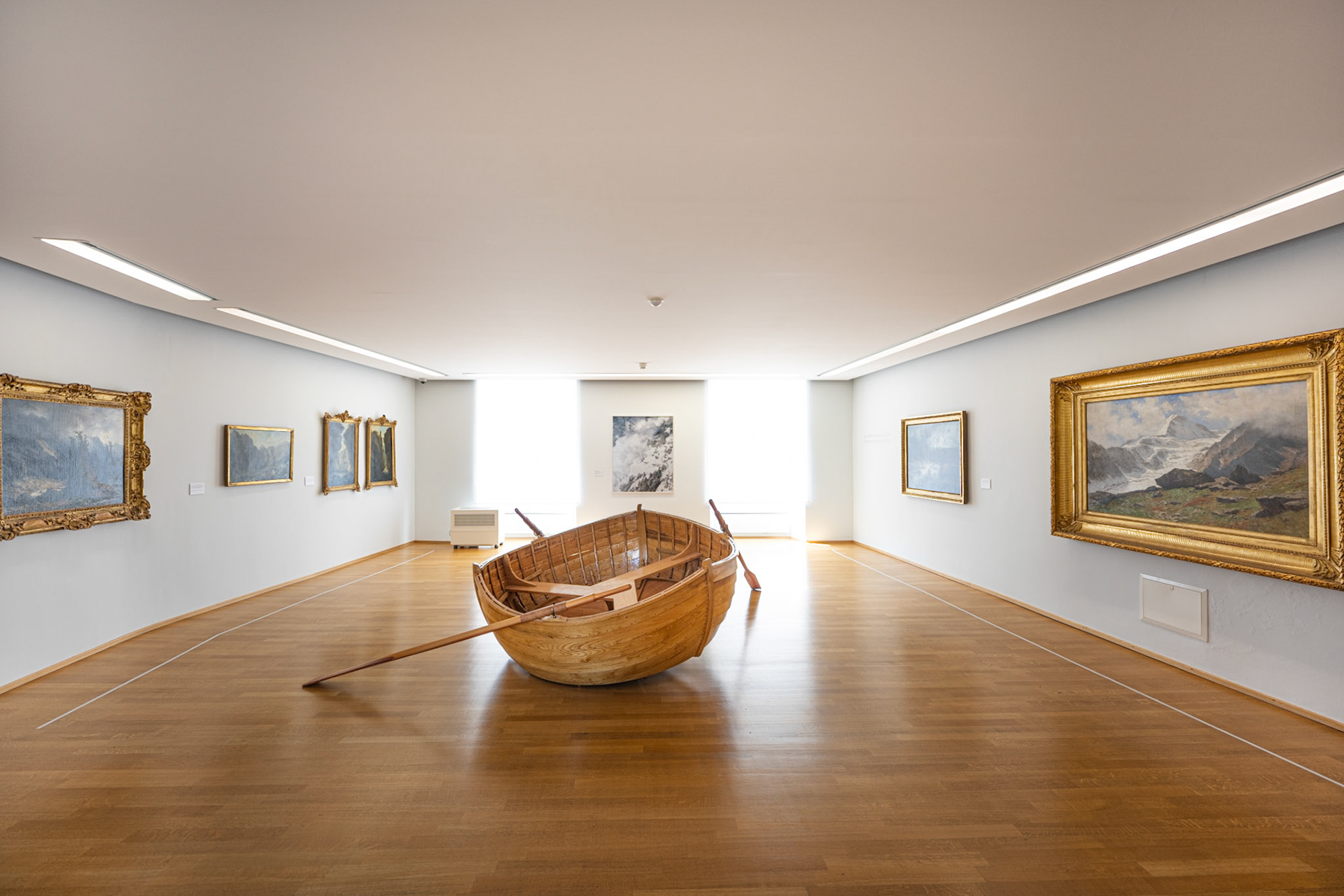
exhibition
Just outside of the city center, Les celliers de Sion were built to plans by local architect Pascal Varone and opened in 2017.
The building is self-sufficient in energy. The stainless steel cladding reminds the stainless steel tanks used during winemaking. Located right next to the vineyards, it’s an excellent location to taste and buy some wines.
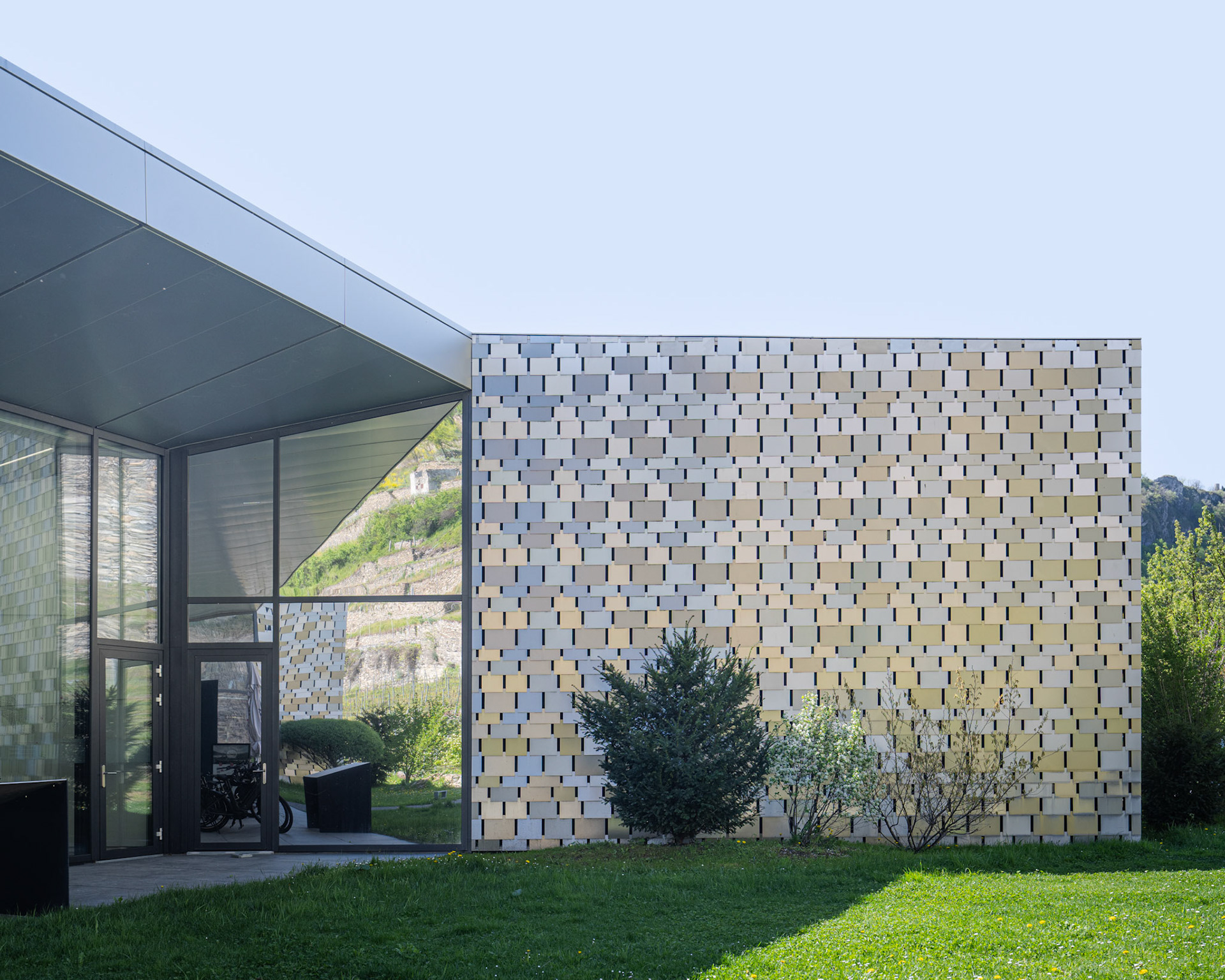
Celliers de Sion
We continued our road, which now alternated between the already finished new highway and the regional road. Close to Ernen, we stopped at the Walker shop after Brig to buy some local raclette cheese. Walker is a producer of many award winning cheeses.
Kaplanei
We chose the Kaplanei in Ernen as our home for the week. Perched at an elevation of 1200 meters above sea level, this charming building, constructed in 1776 as the residence and workplace of the local chaplain, offers beautiful views of the Rhone Valley from its windows.
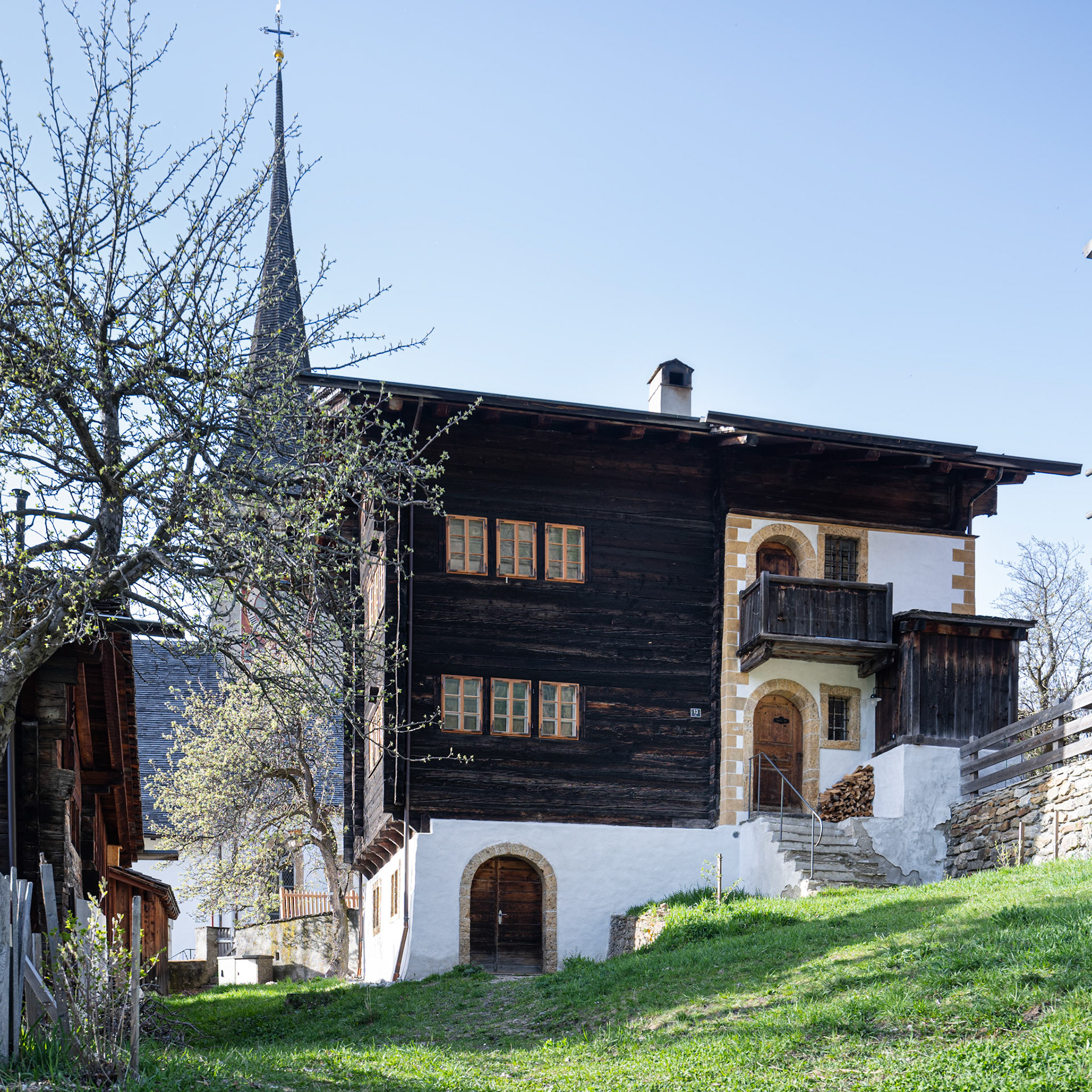
Kaplanei
The Kaplanei underwent a transition in 2018 when the Catholic parish of Ernen entrusted the property to the Foundation Ferien im Baudenkmal. Following extensive renovations completed in 2023, the building now welcomes guests as a vacation retreat.
The heart of the Kaplanei lies on the second floor, where the kitchen, dining room and living room are located.
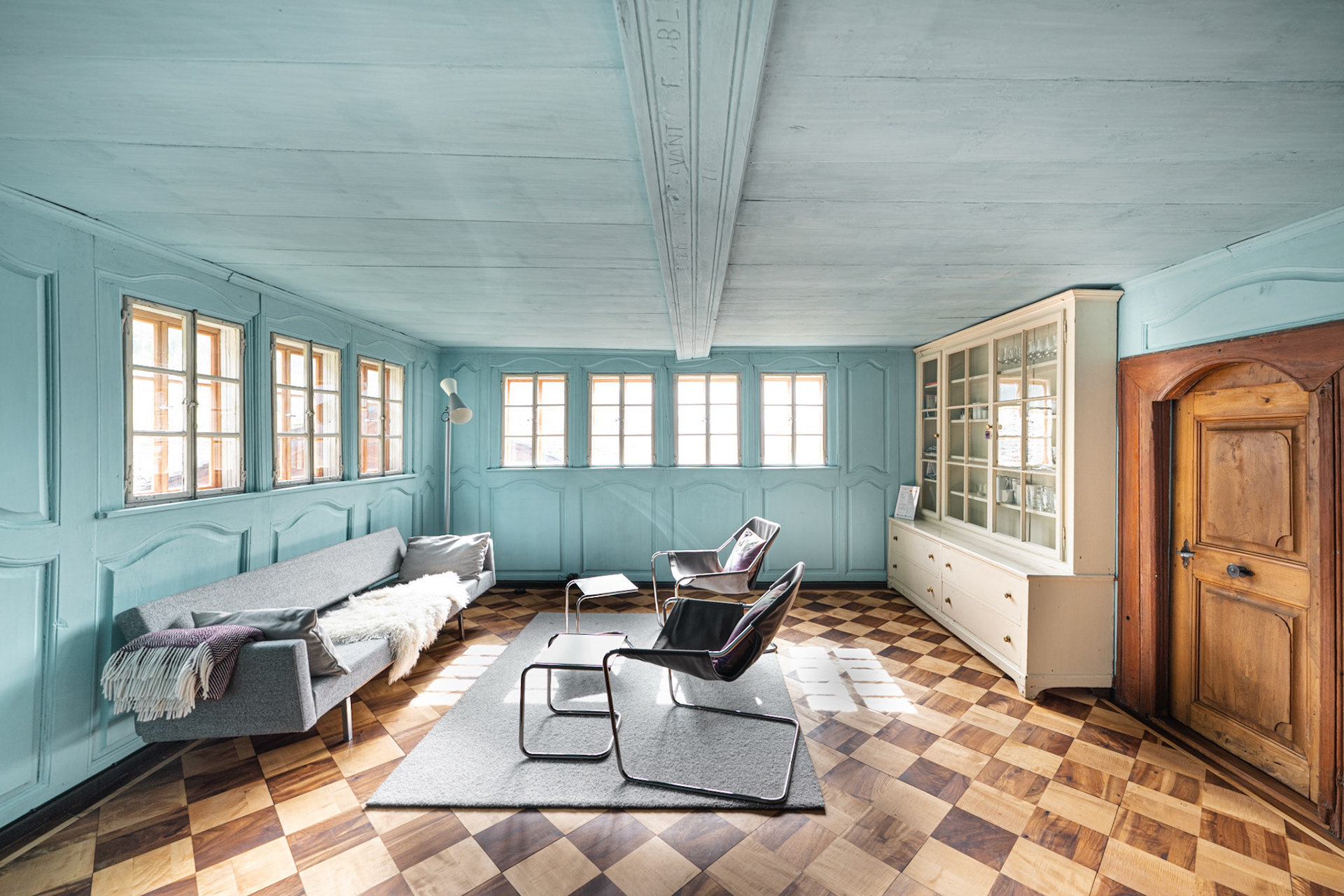
living room
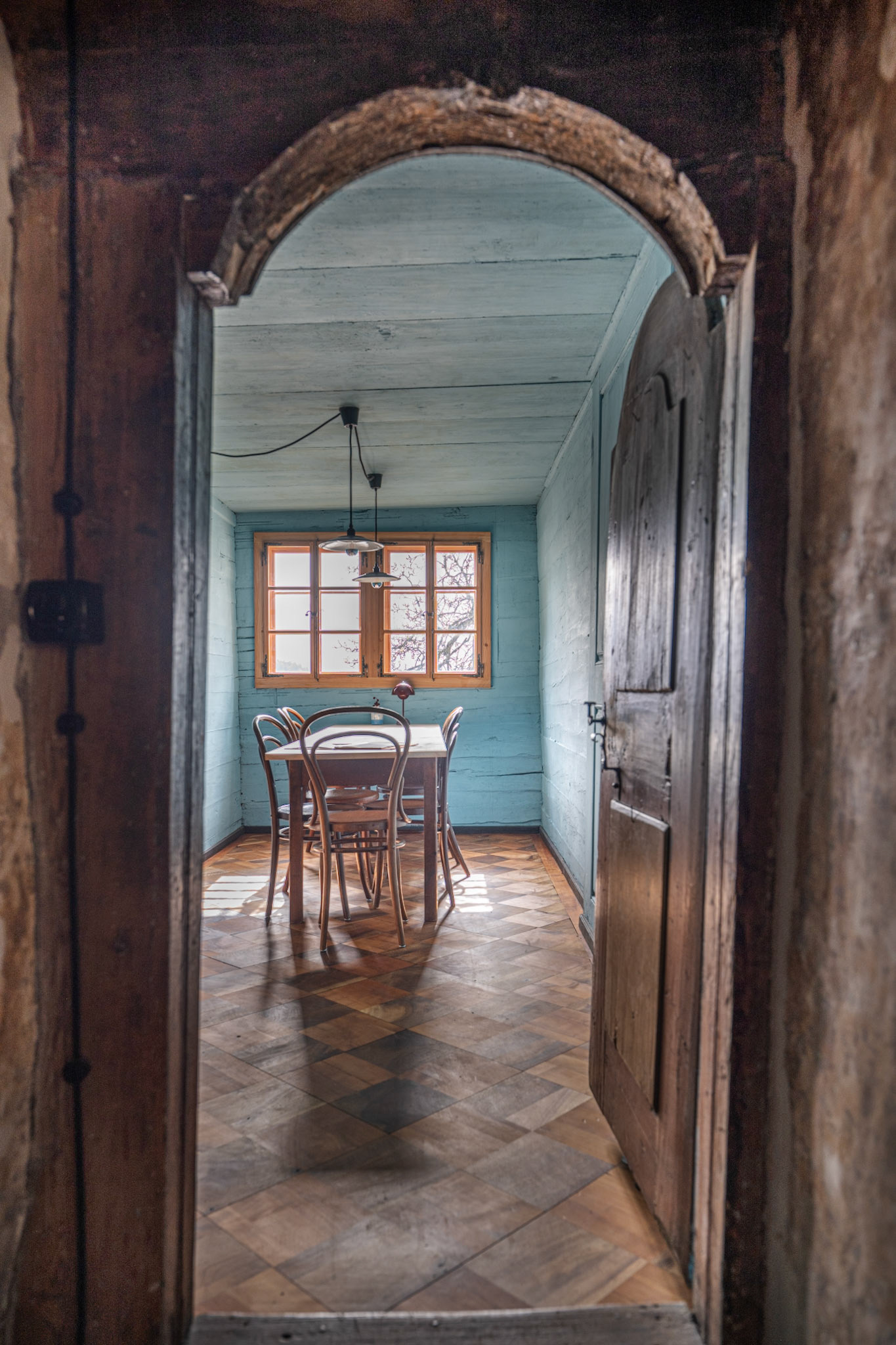
dining room
The restoration of the living room's color was meticulously undertaken to reflect its original hue. Adorning the cube-shaped oven are depictions of Saint George, the church's patron saint, and Saint Catherine with the Wheel, the chaplaincy's patron saint. Adding a touch of modernity, the floor lamps are based on a design created by Le Corbusier.
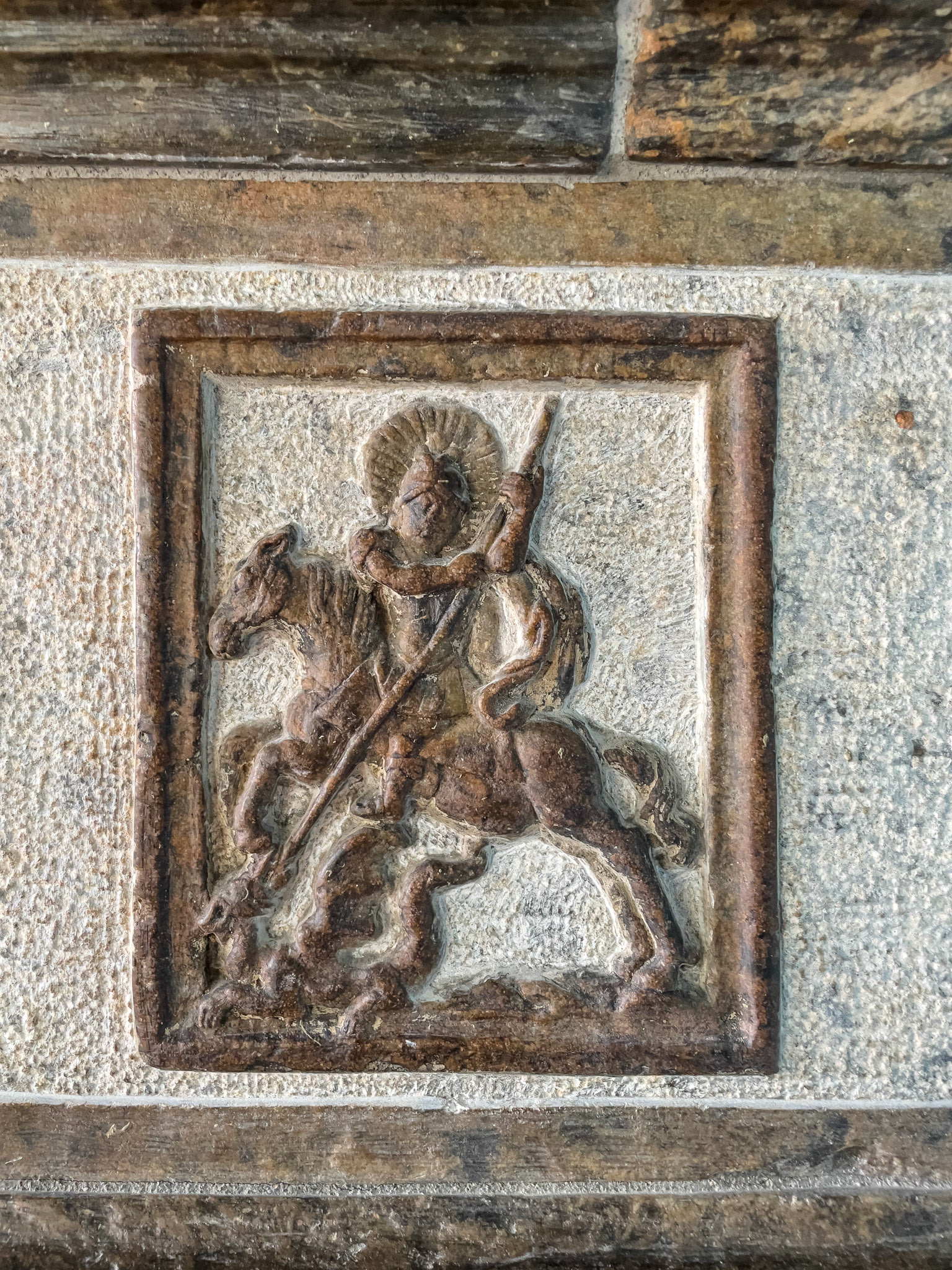
depiction of Saint George
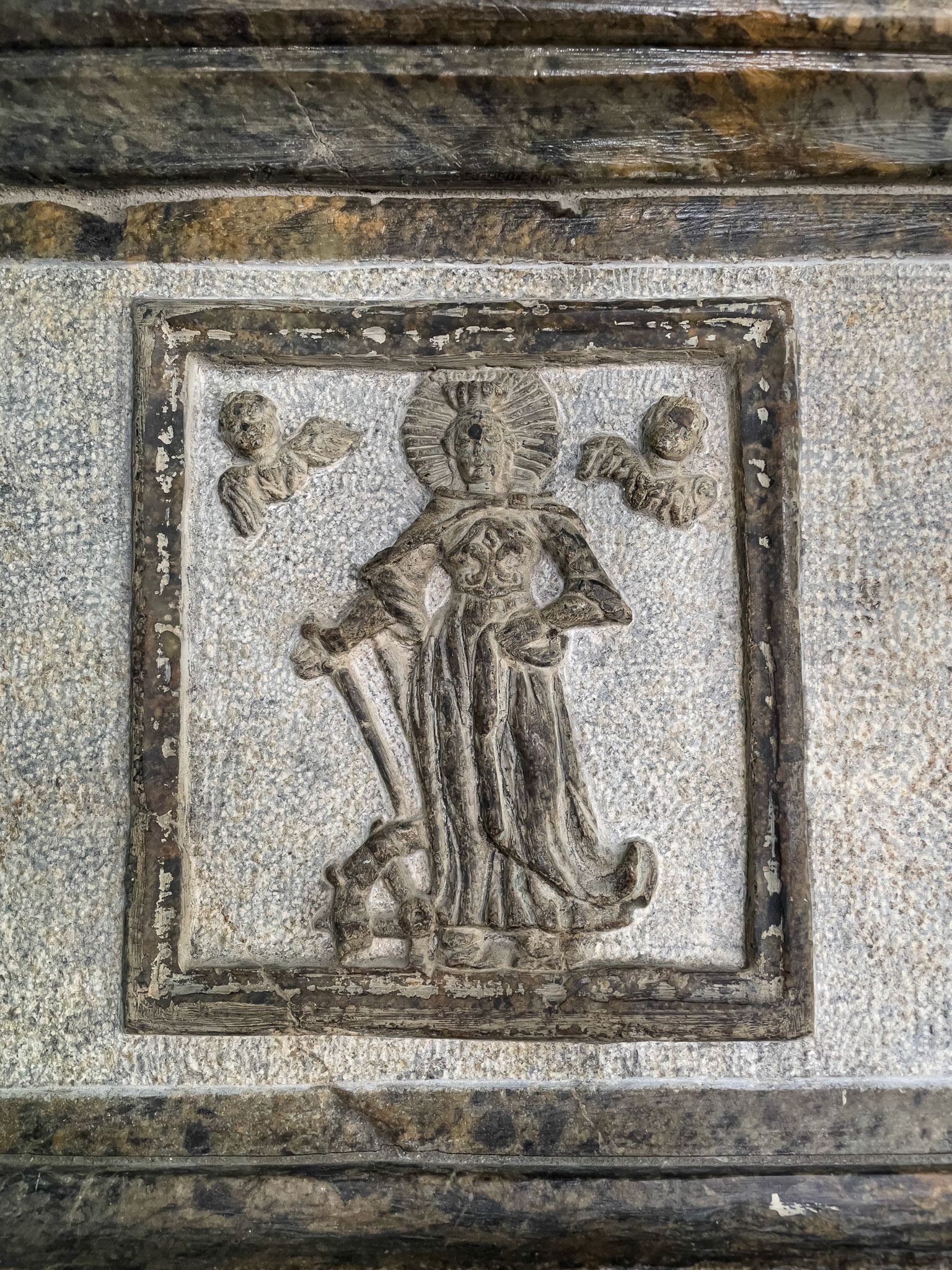
depiction of Saint Catherine
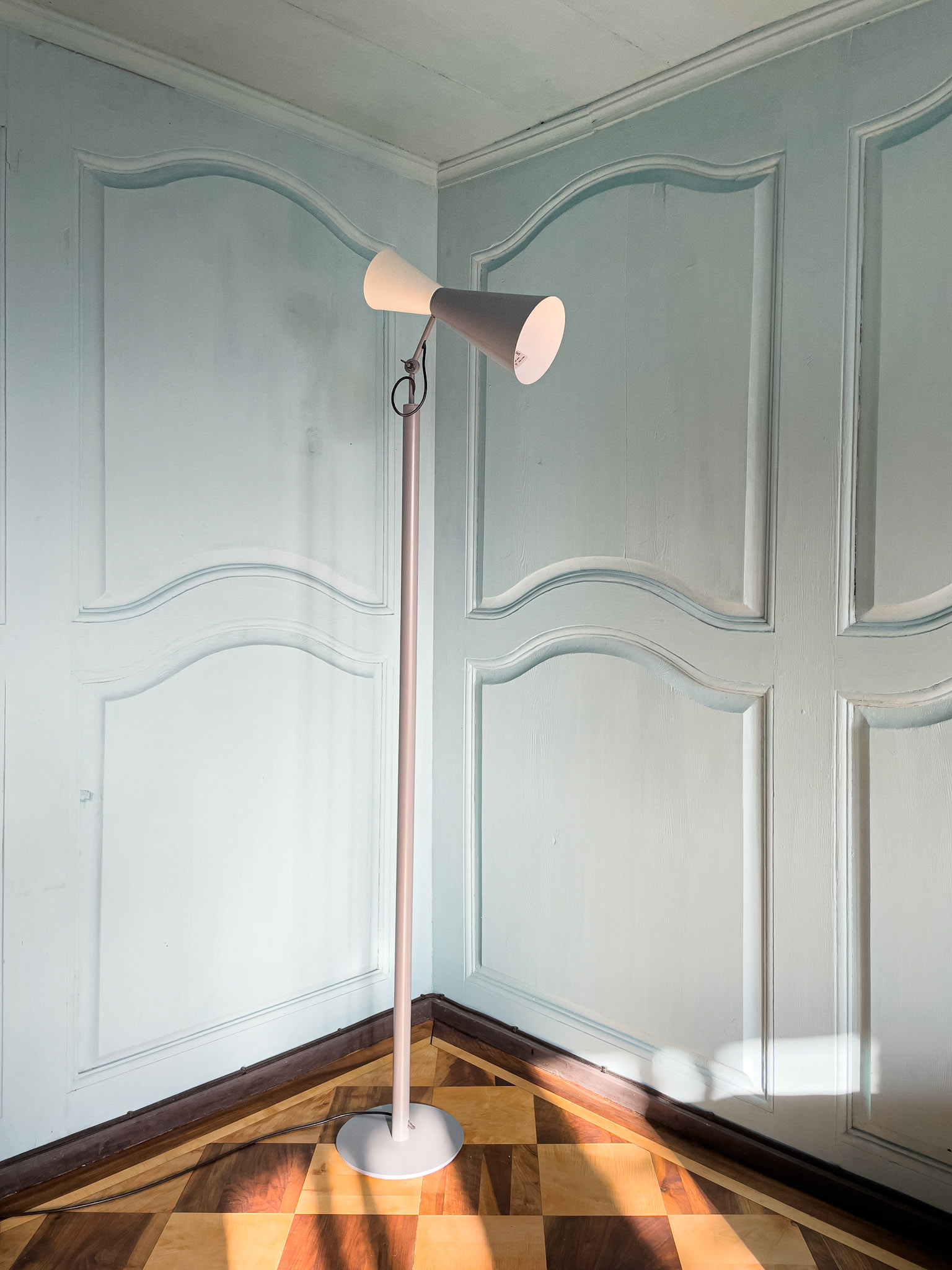
floor lamp designed by Le Corbusier
Ascending to the third floor, we discovered the former private chapel, complete with a ceiling adorned by allegorical paintings, attributed to Johann Georg Pfefferle.
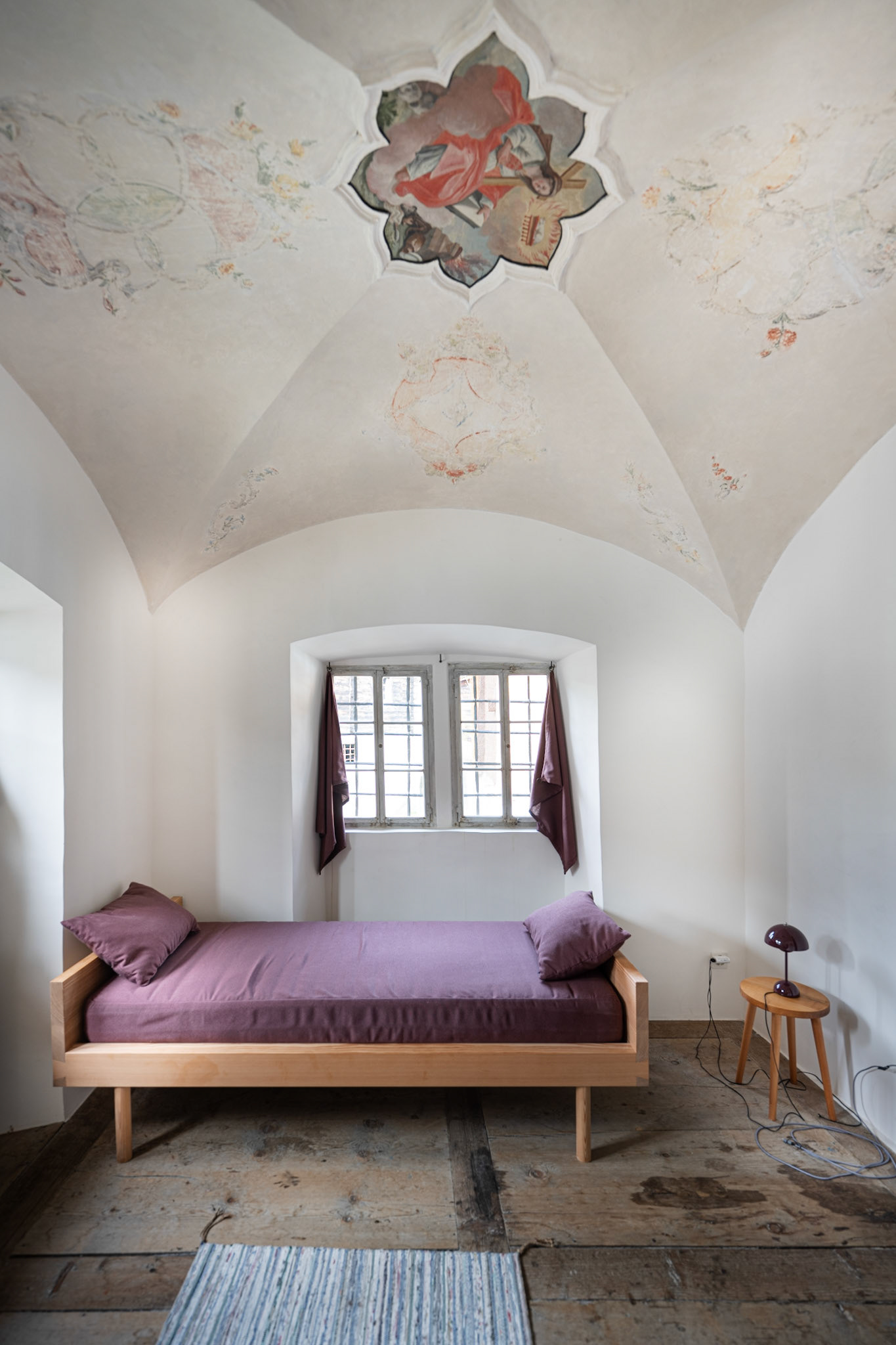
former private chapel
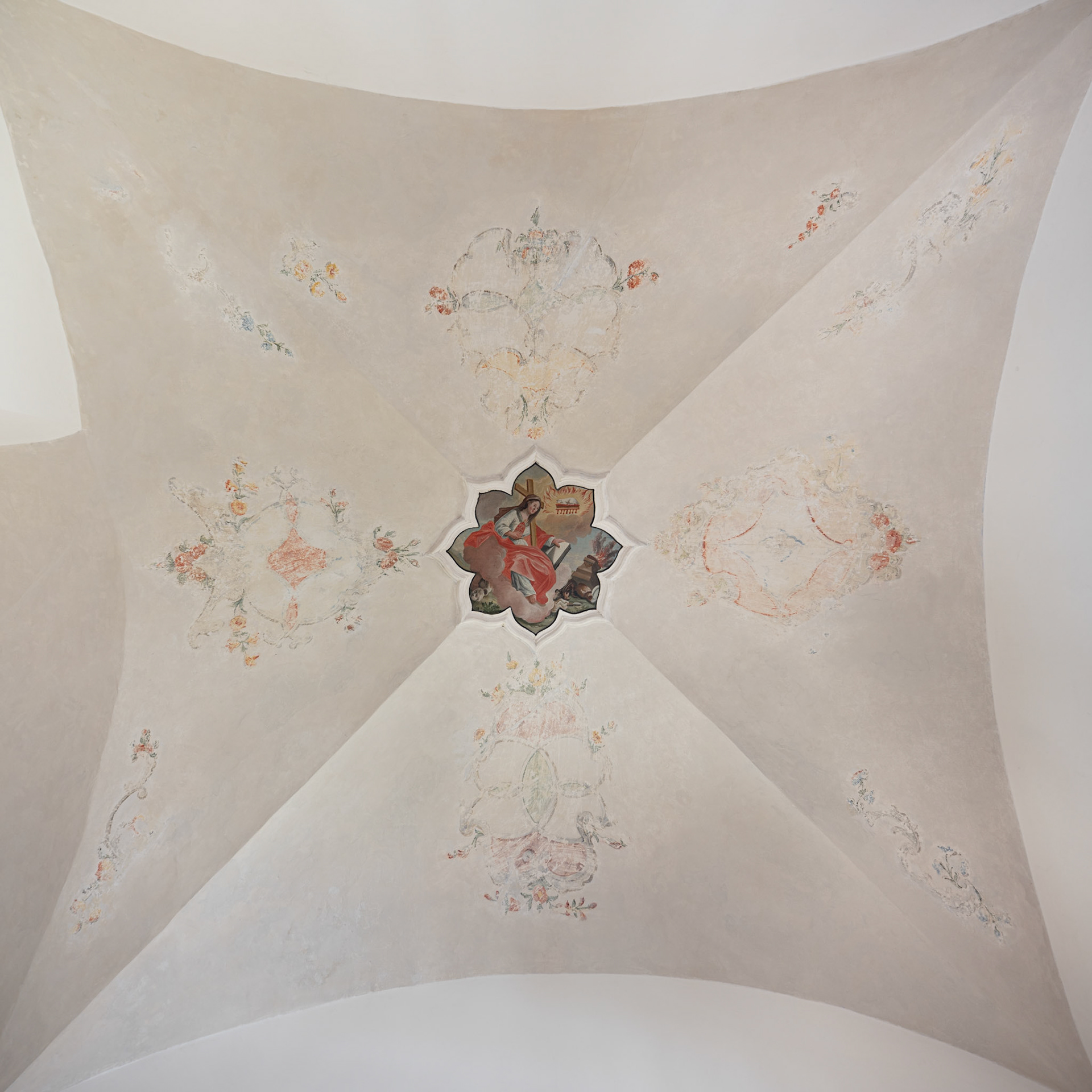
allegorical paintings
The bedrooms, also situated on this level, are heated by a wood-burning stove.
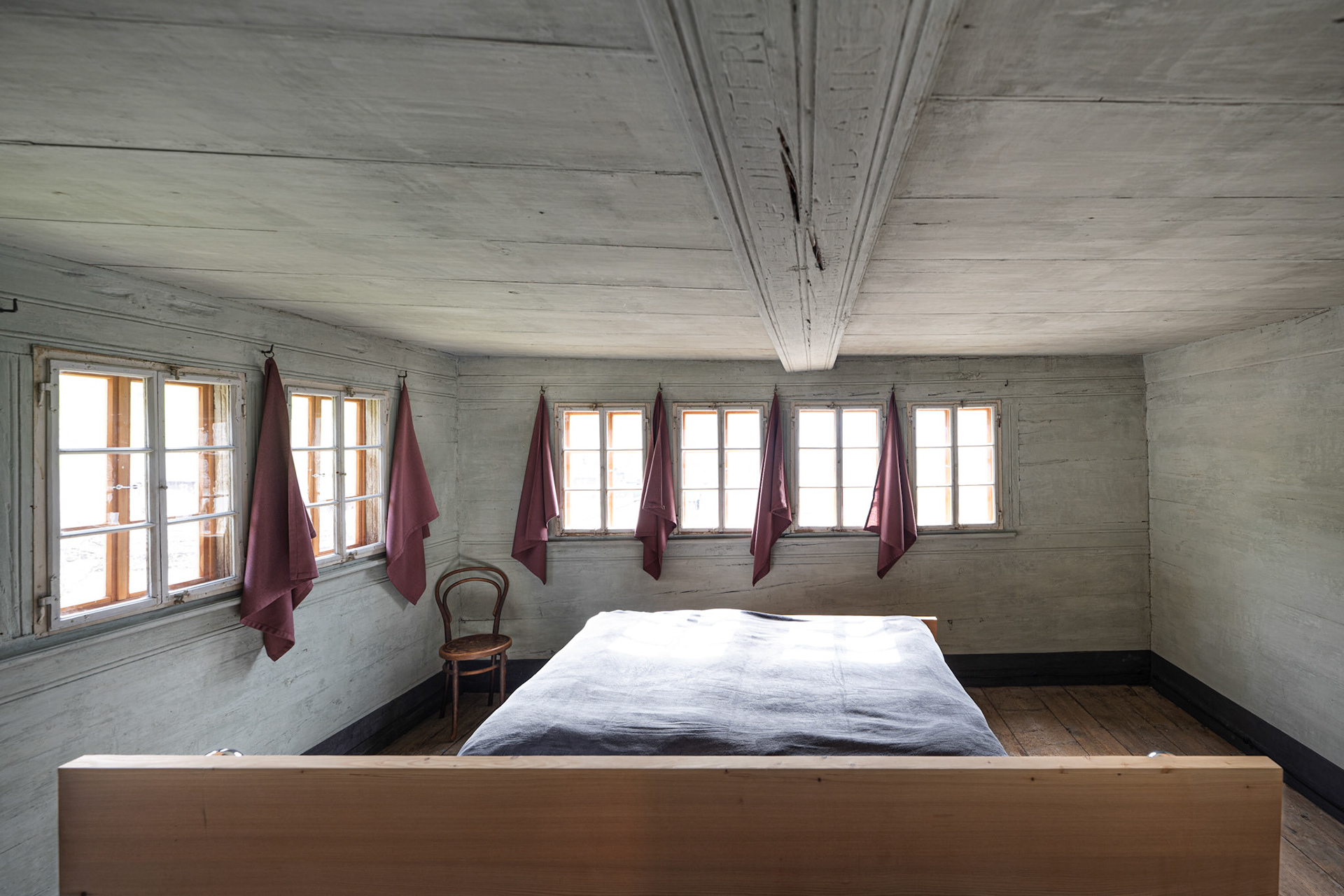
master bedroom

wood-burning stove in the bedroom
In the summer months, the attic offers some additional space. Access to all floors is facilitated by an interior staircase.
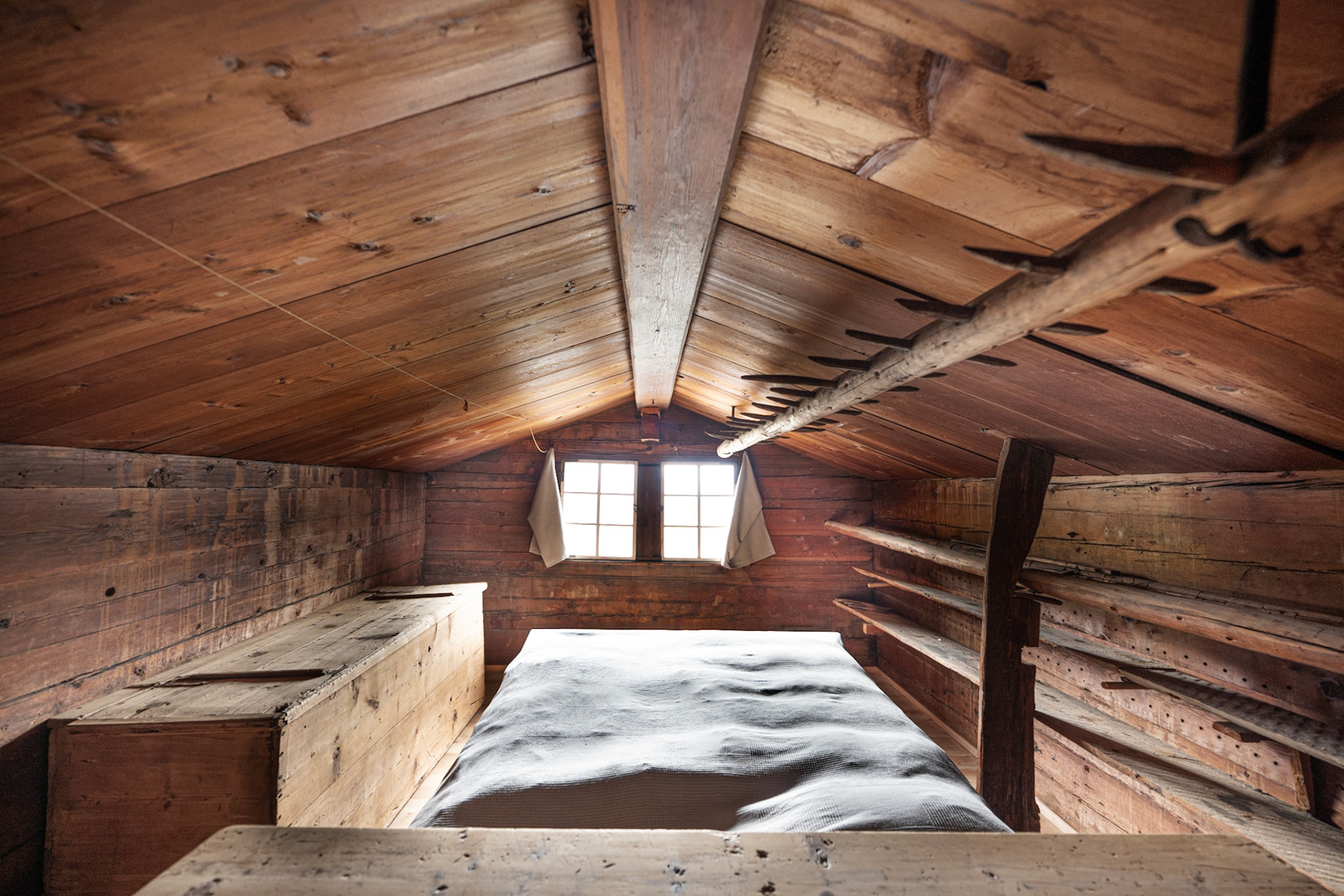
attic bedroom
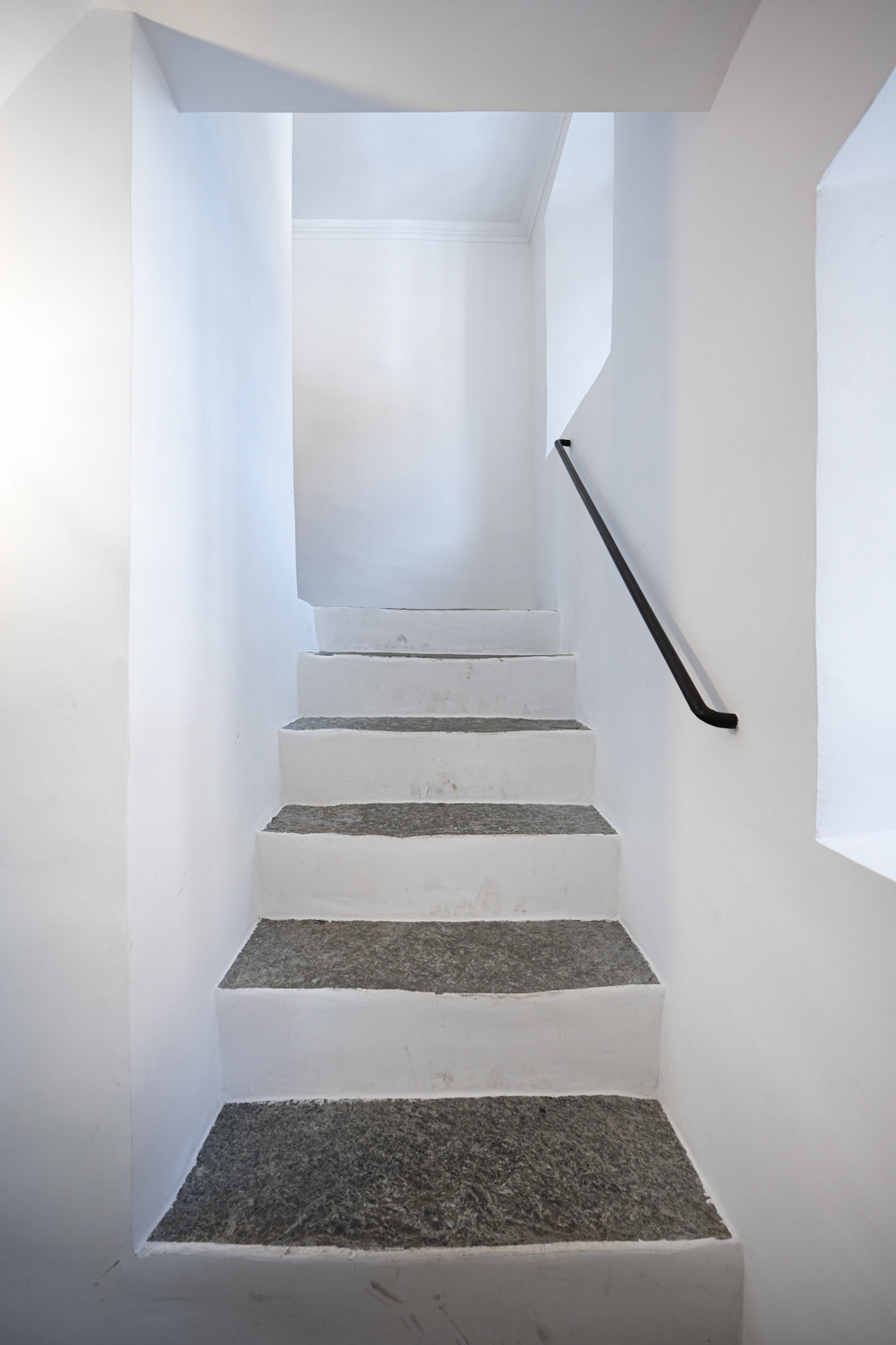
staircase
The basement has undergone significant transformations, now housing contemporary sanitary facilities and a music room with a piano. These thoughtful adaptations marry the historical charm of the Kaplanei with modern comforts, ensuring a delightful holiday.
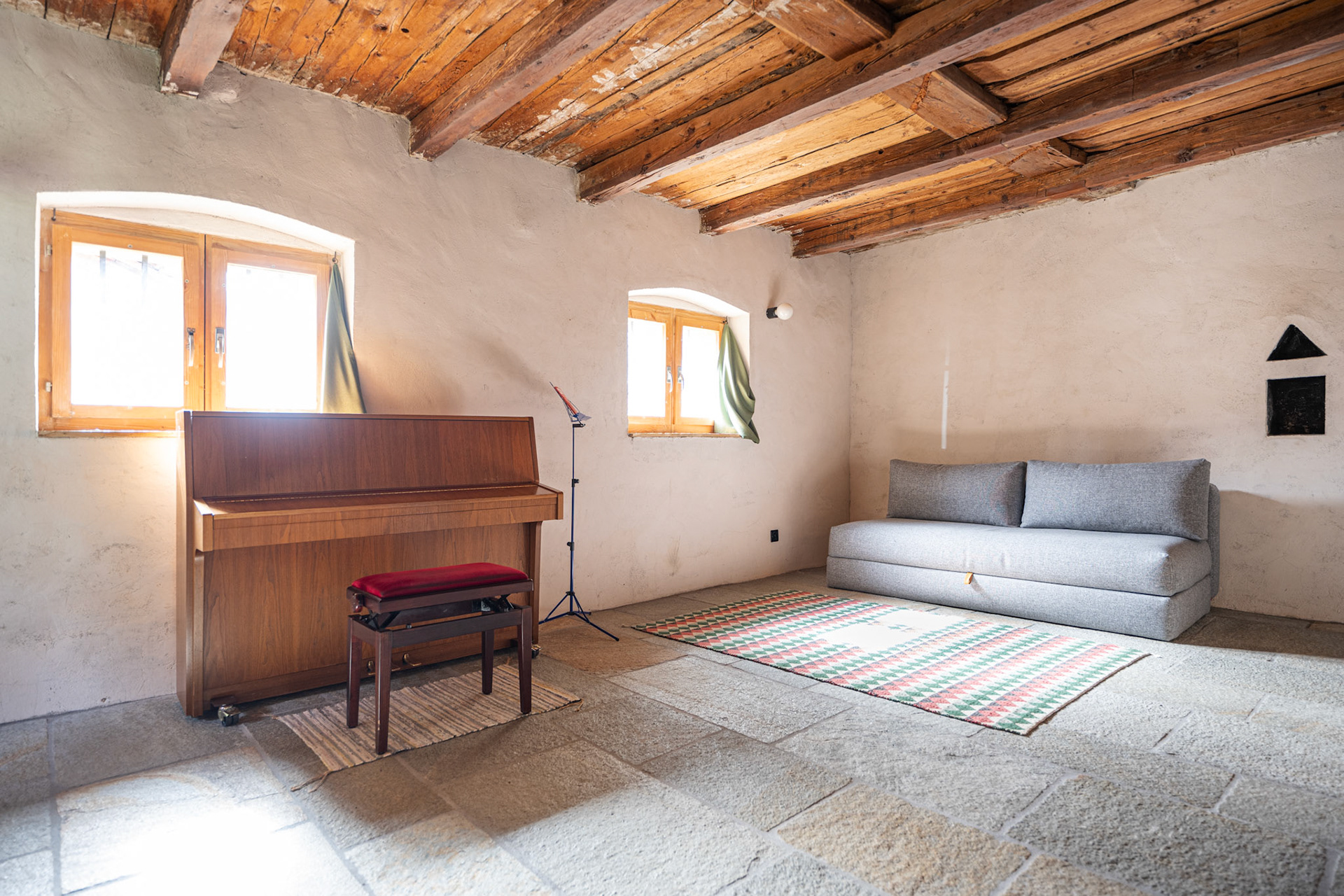
music room
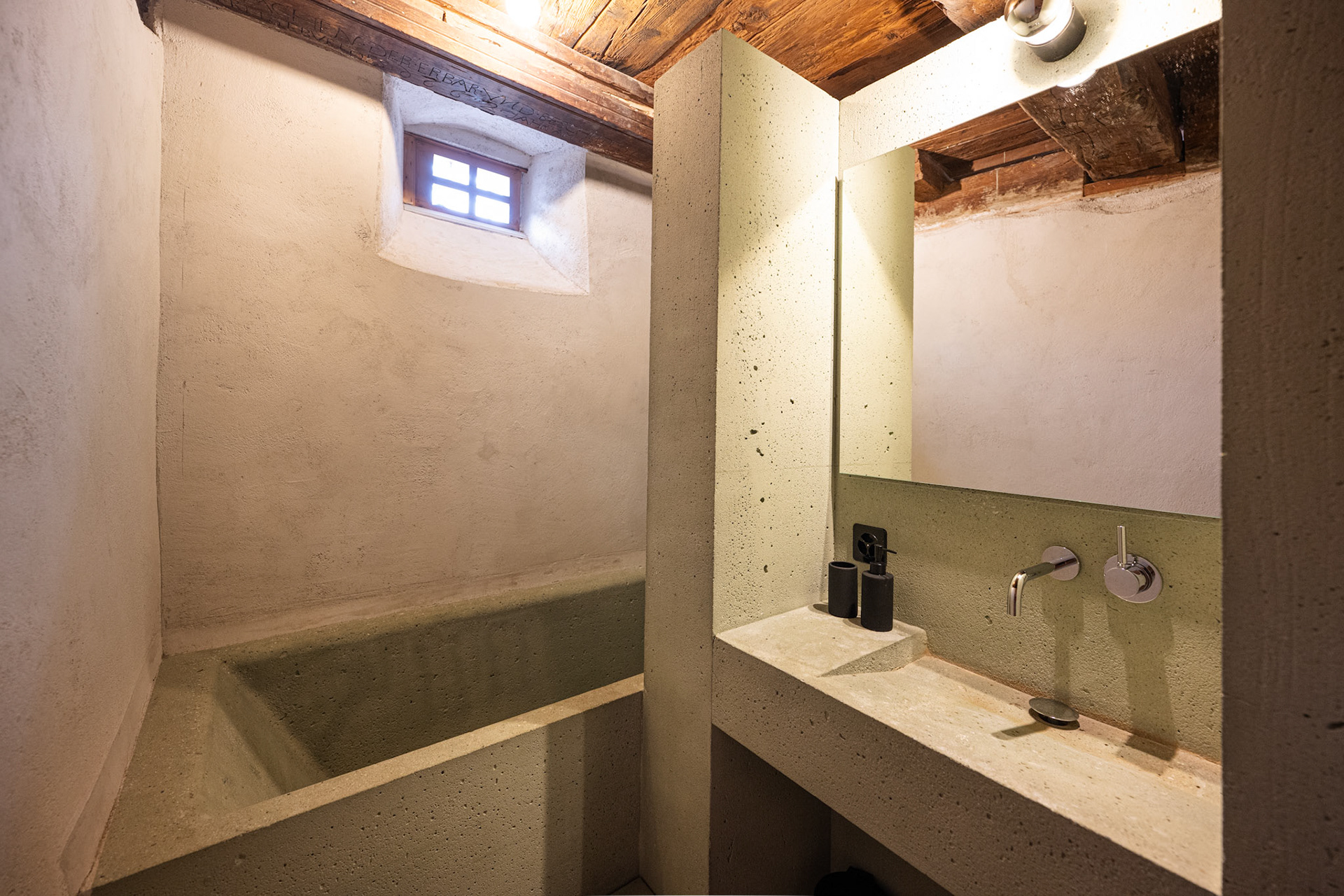
bathroom
After familiarizing ourselves with the house and getting settled in, we went for a quick walk to the local supermarket and were ready for an evening of raclette and a glass of wine. We followed this with card games, all the while tending to the fires crackling in the two stoves. The next morning, we were impressed to find the stoves continuing to heat the rooms and still warm to the touch.
Ernen and Mühlebach
Ernen is located on the left bank of the Rhone and was first mentioned in documents in 1214. Positioned strategically amidst the Albrun, Furka, and Grimsel passes, it flourished for centuries as a pivotal hub for goods transshipment.
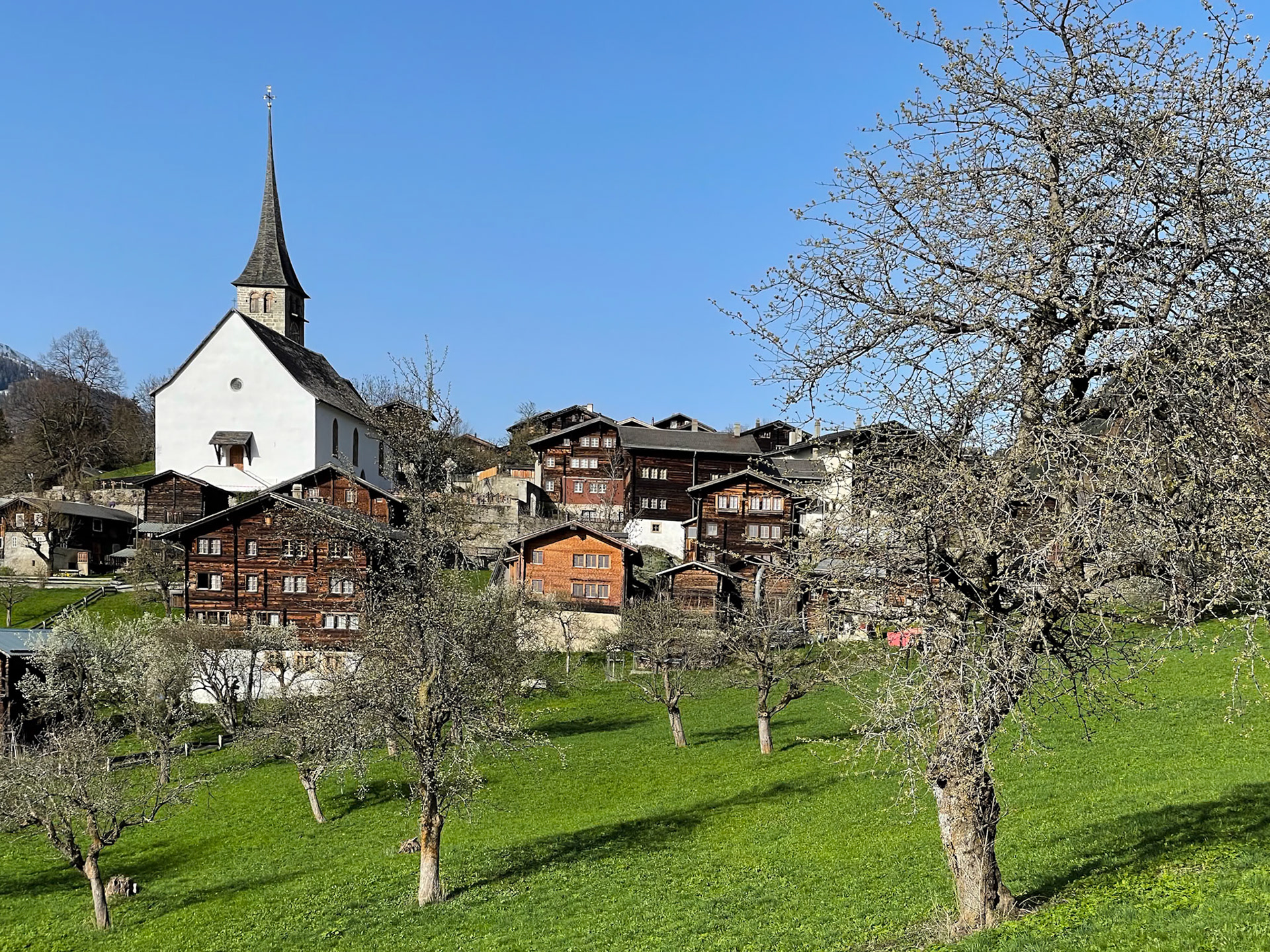
Once the capital of Zenden Goms, it was the hometown of no fewer than five future bishops, a testament to its historical significance and prosperity. The legacy of this wealth is evident in the array of beautiful houses that adorn its streets.
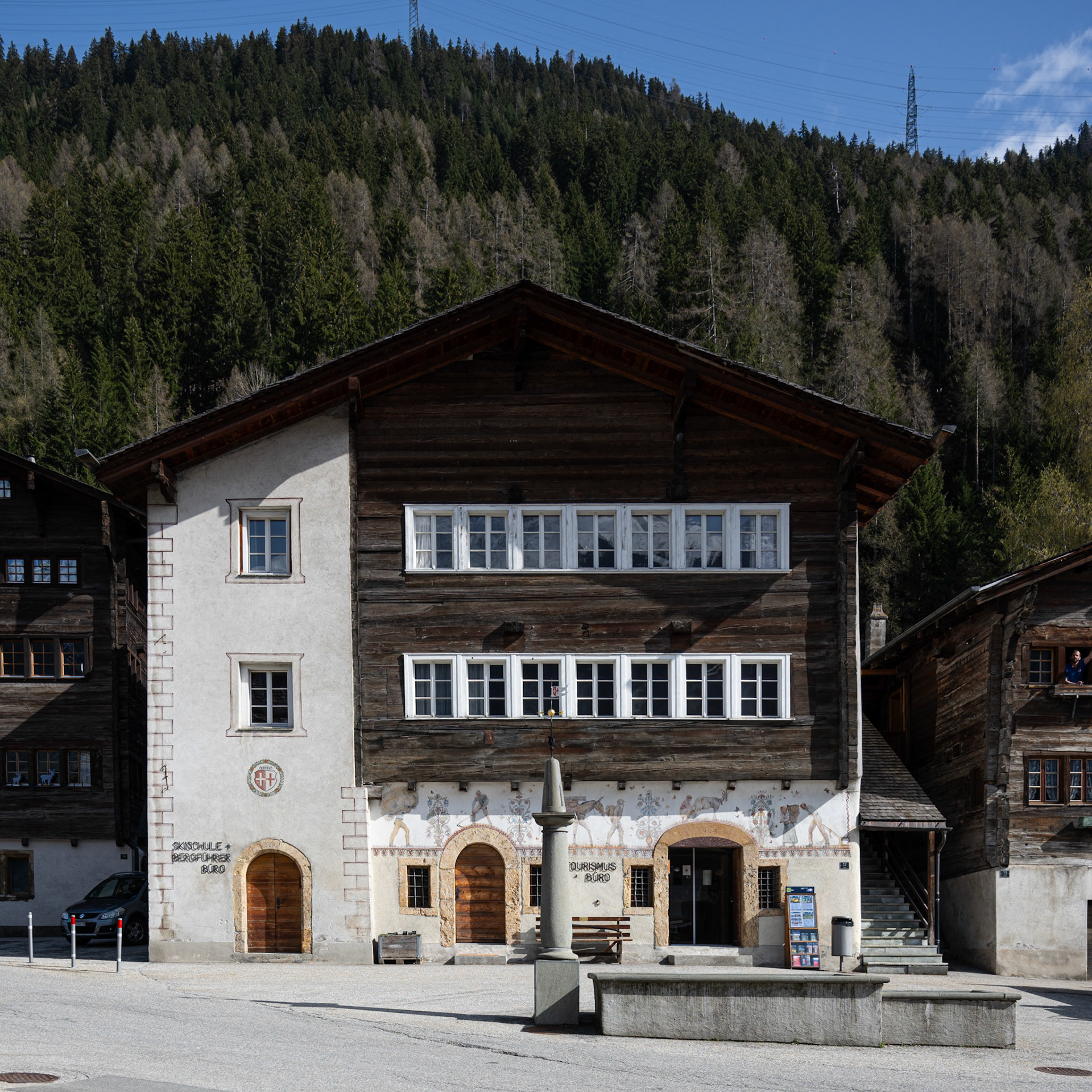
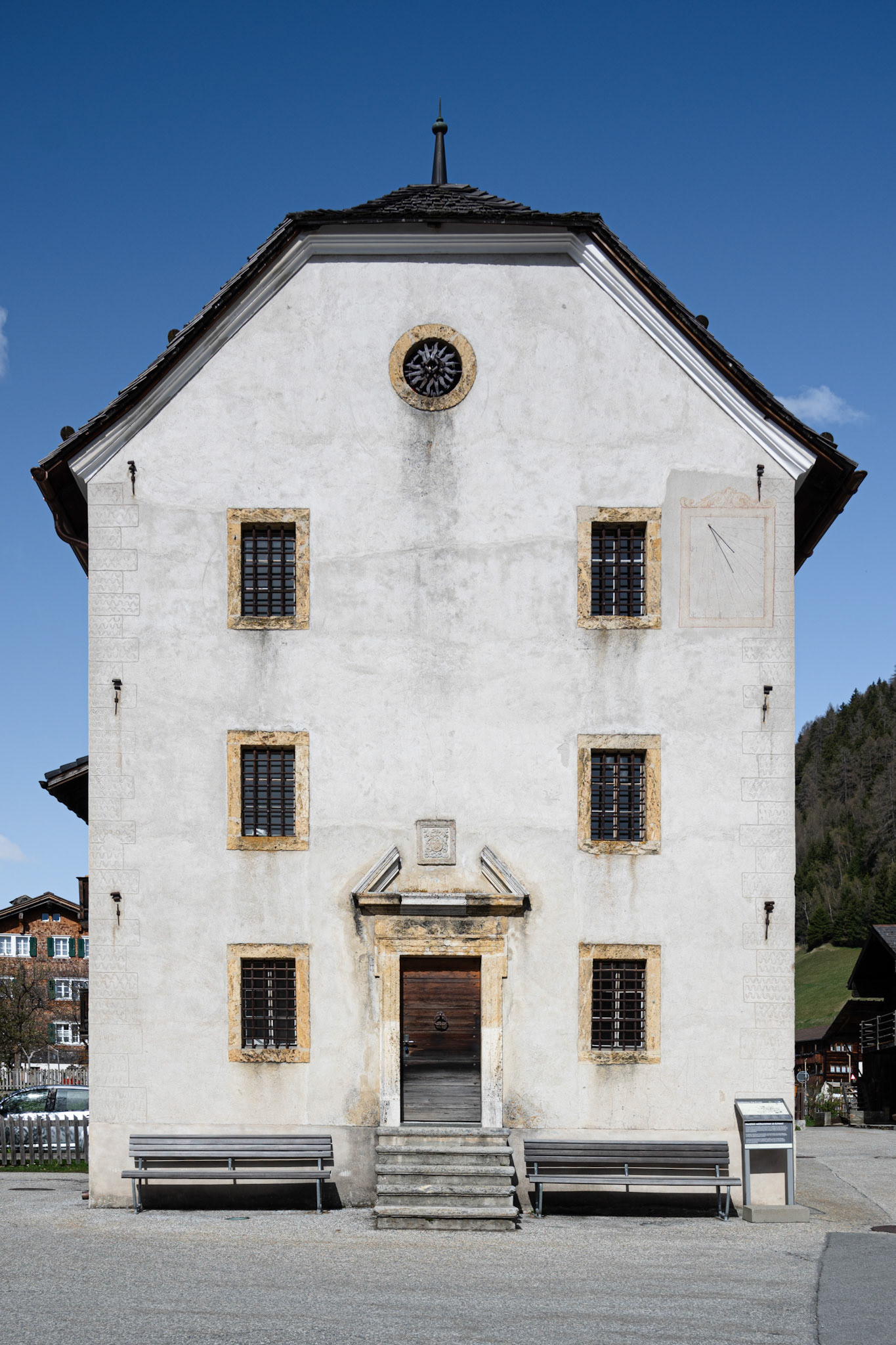
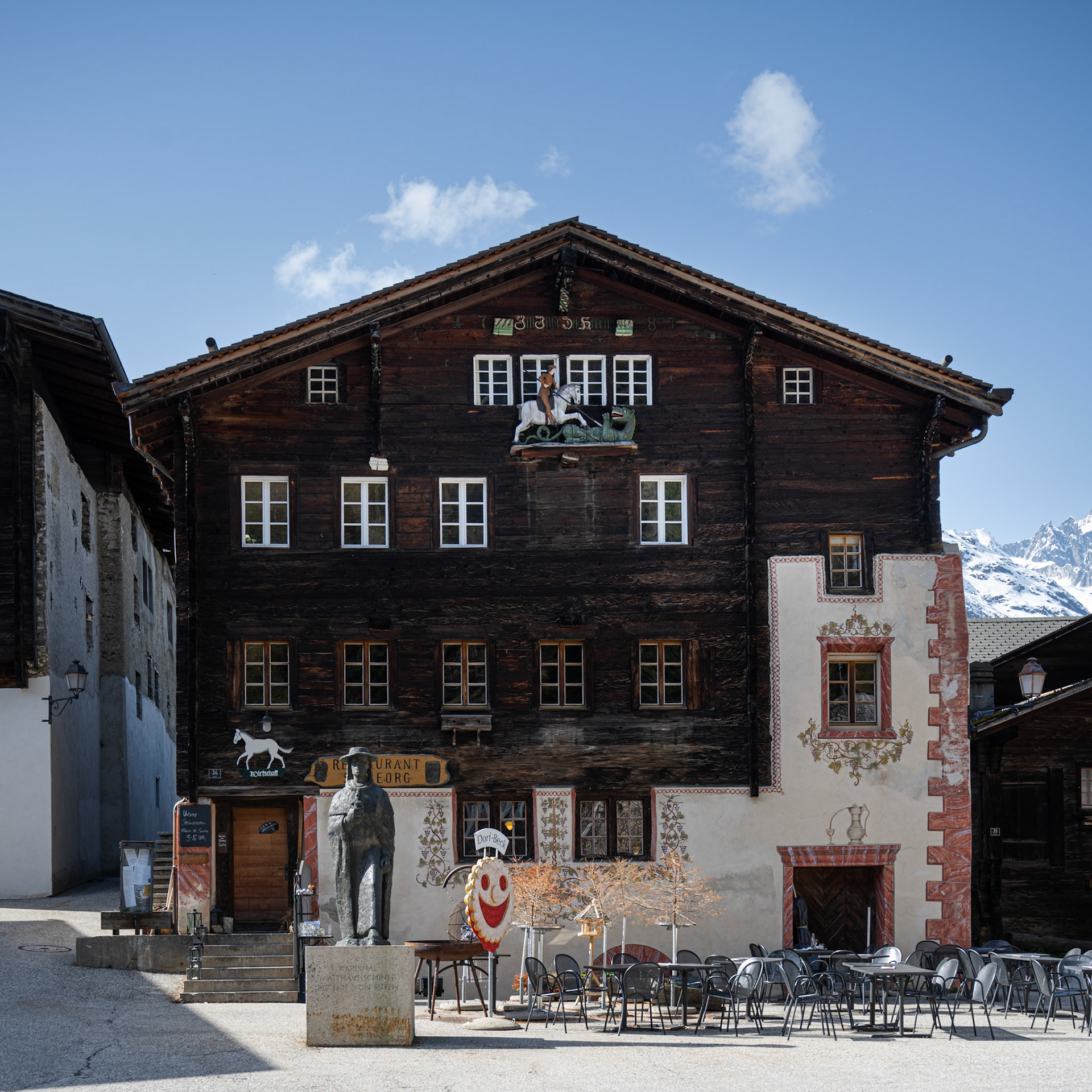
The guided tour of the village organized by the tourism office is an excellent opportunity to learn more about them. The advent of the Furka road in the 1860s and the subsequent construction of the Furka railway line in 1914, on the opposite side of the Rhone valley, ushered in a period of transition for Ernen. While the town was relegated to the periphery of major traffic routes, they paradoxically also lead to the preservation of its architectural heritage. In 1979, Ernen was awarded the Wakker Prize by the Swiss Heritage Society and it is now located inside the Nature Park Binntal.
The most important building in Ernen is certainly the parish church of St. Georg, built between 1510 and 1518 to plans by Ulrich Ruffiner. Intricate vegetal decorative paintings, executed in 1518 by Hans Rischiner, adorn the vault of the choir.
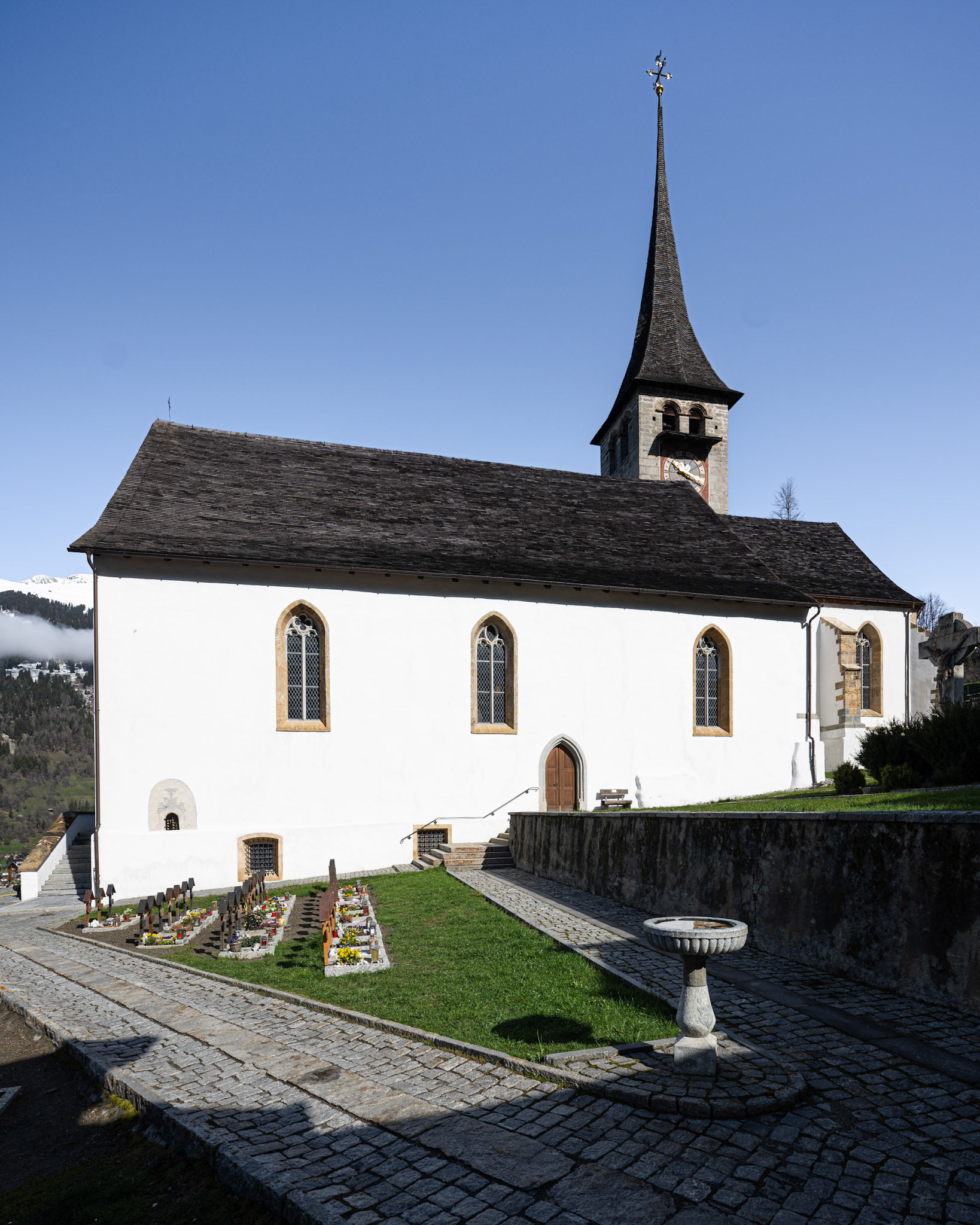
Ernen church
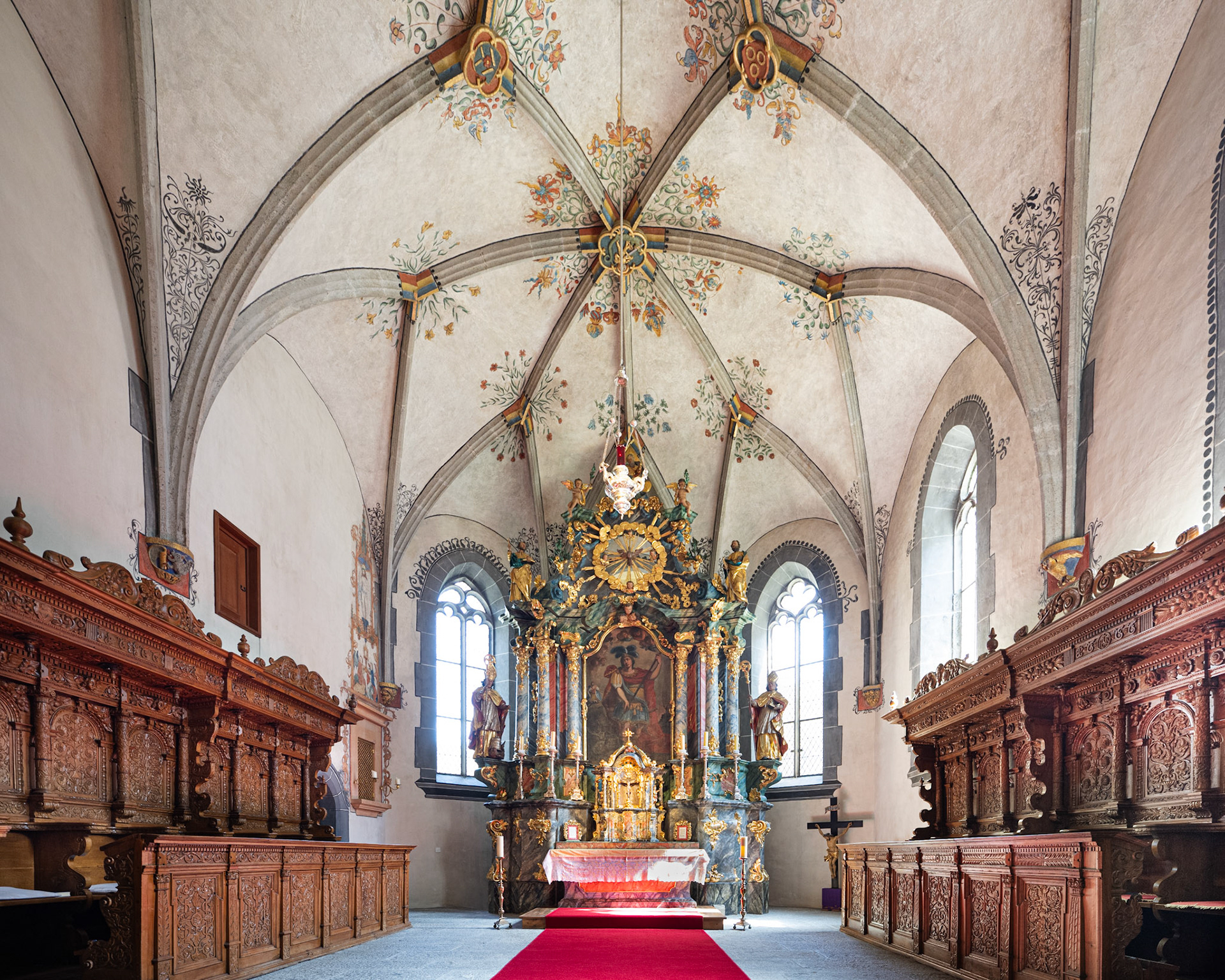
vegetal decorative paintings, created in 1518 by Hans Rischiner
The church is still a witness to the talents of renowned artisans: the choir stalls were carved in 1666 by Georg Mattig and Hans Siegen, the side altars were created around 1720 in the workshop of Anton Sigristen, while the high altar was created between 1758 and 1761 by Placy Schmid from Disentis.

high altar created between 1758 and 1761 by Placy Schmid
The organ was built by Christopher Aebi between 1679 and 1680.
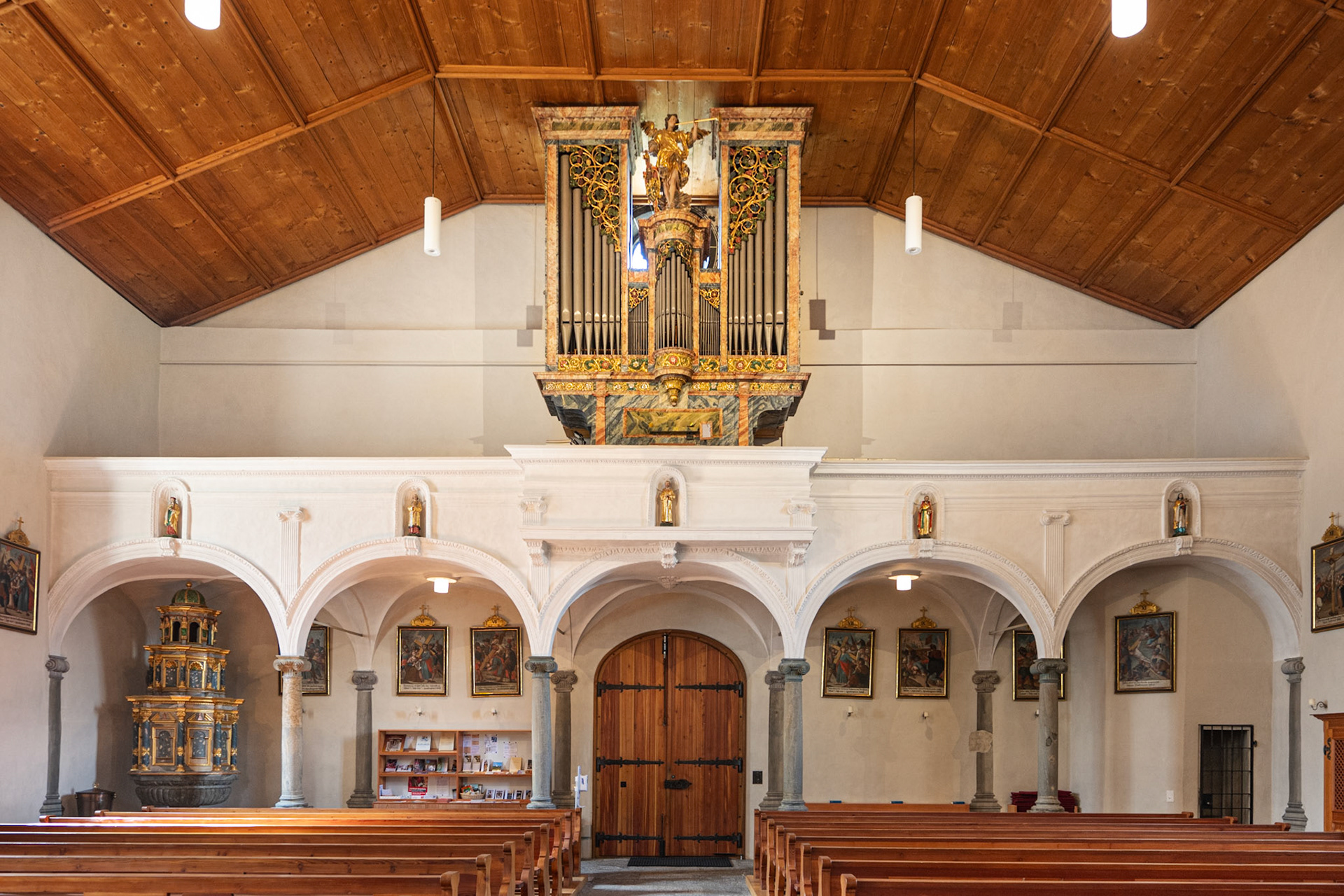
organ built by Christopher Aebi between 1679 and 1680
The sculpture of St. George fighting a dragon is from the first quarter of the 16th century. The Holy Helper Altar is from the last quarter of the 15th century while the baptismal font was created at the end of the 17th century.
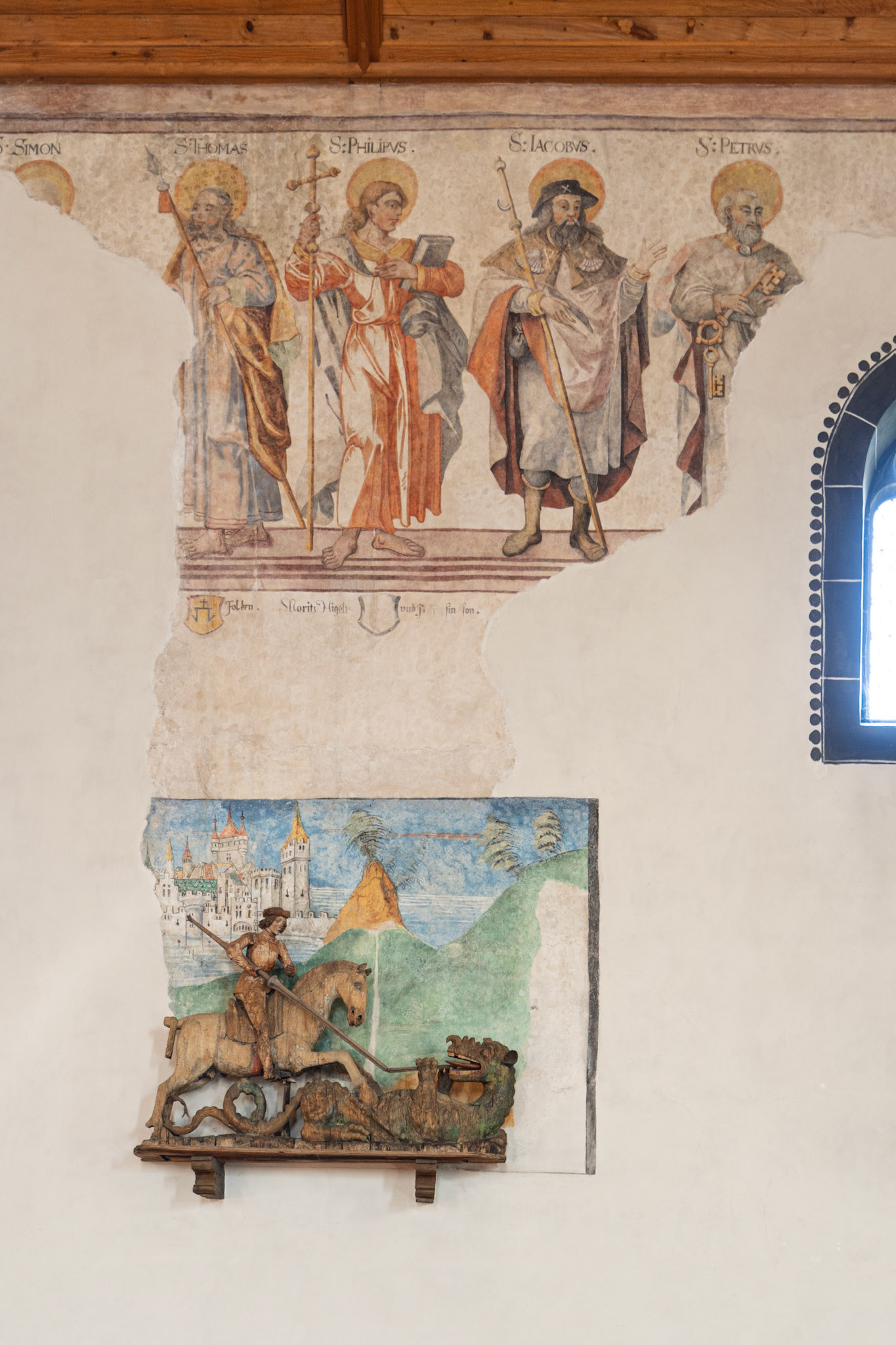
sculpture of St. George fighting a dragon
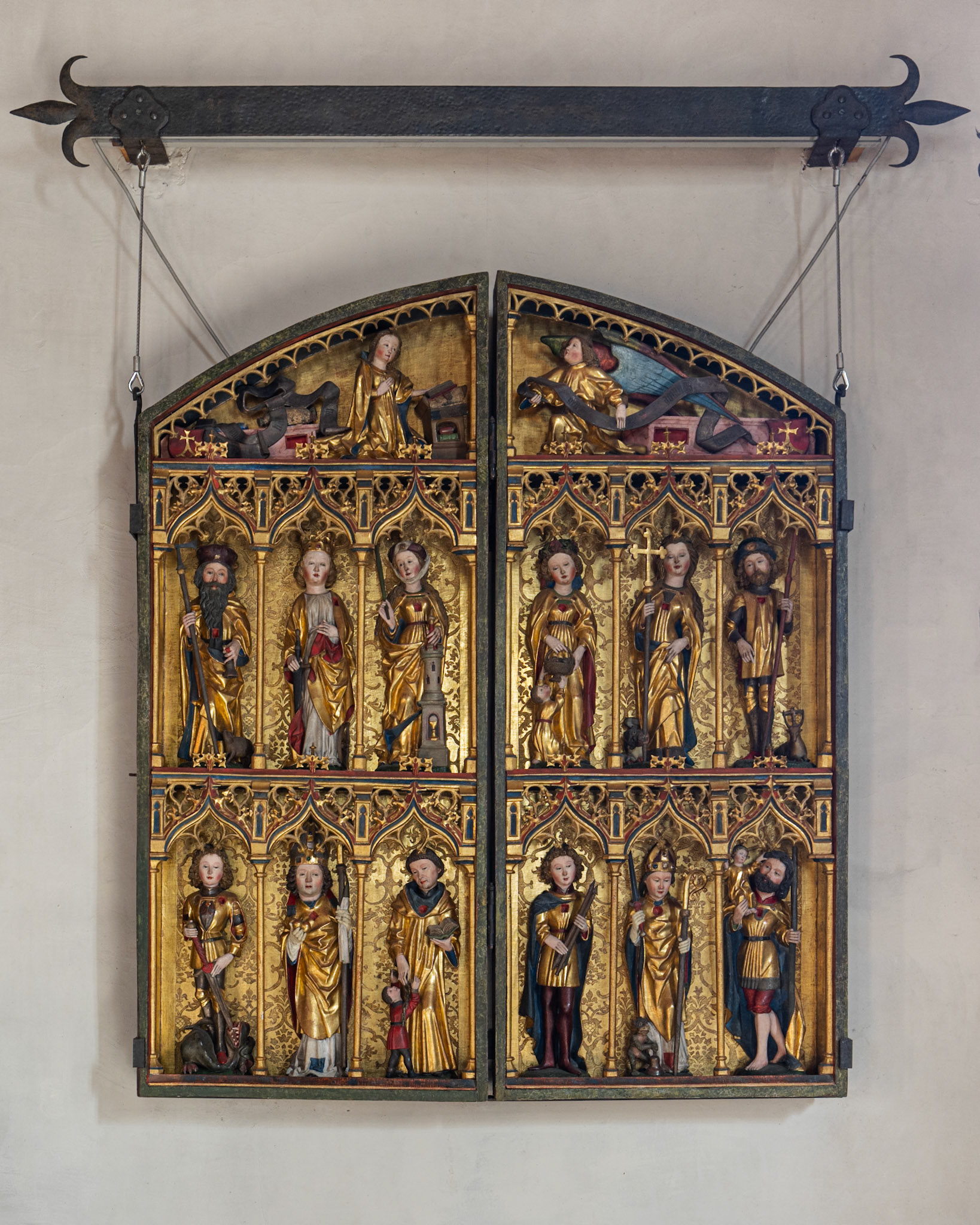
Holy Helper Altar from the last quarter of the 15th century
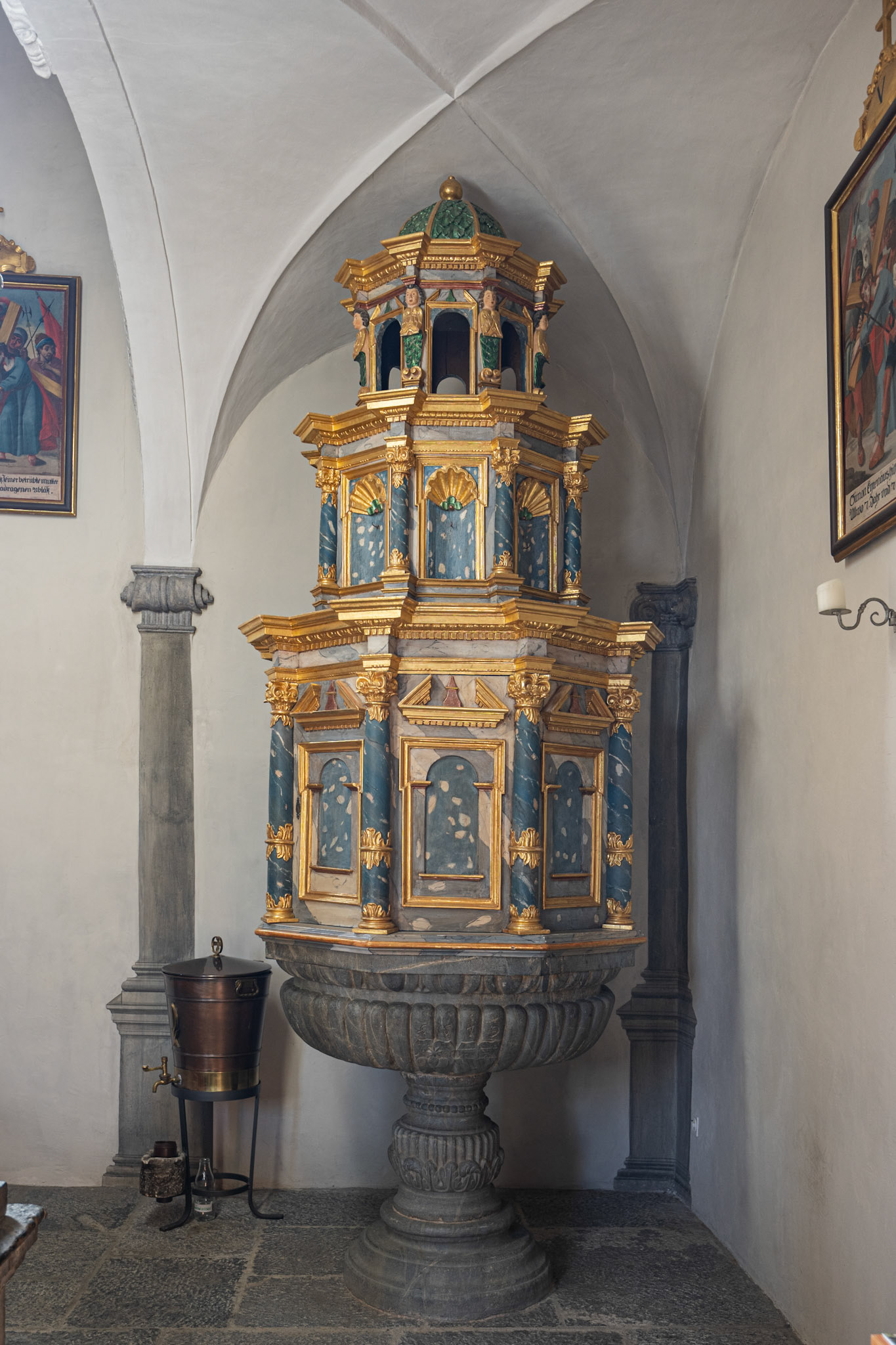
baptismal font
Today, the parish church of St. Georg serves not only as a place of worship but also as a venue for cultural enrichment, hosting concerts as part of the Ernen Music Festival.
Next to the town square, the museum housed within the historic Jost Sigristen House in Ernen opened its doors in 1995, offering visitors a captivating glimpse into the life of Jakob Valentin Sigristen during the late 18th century.
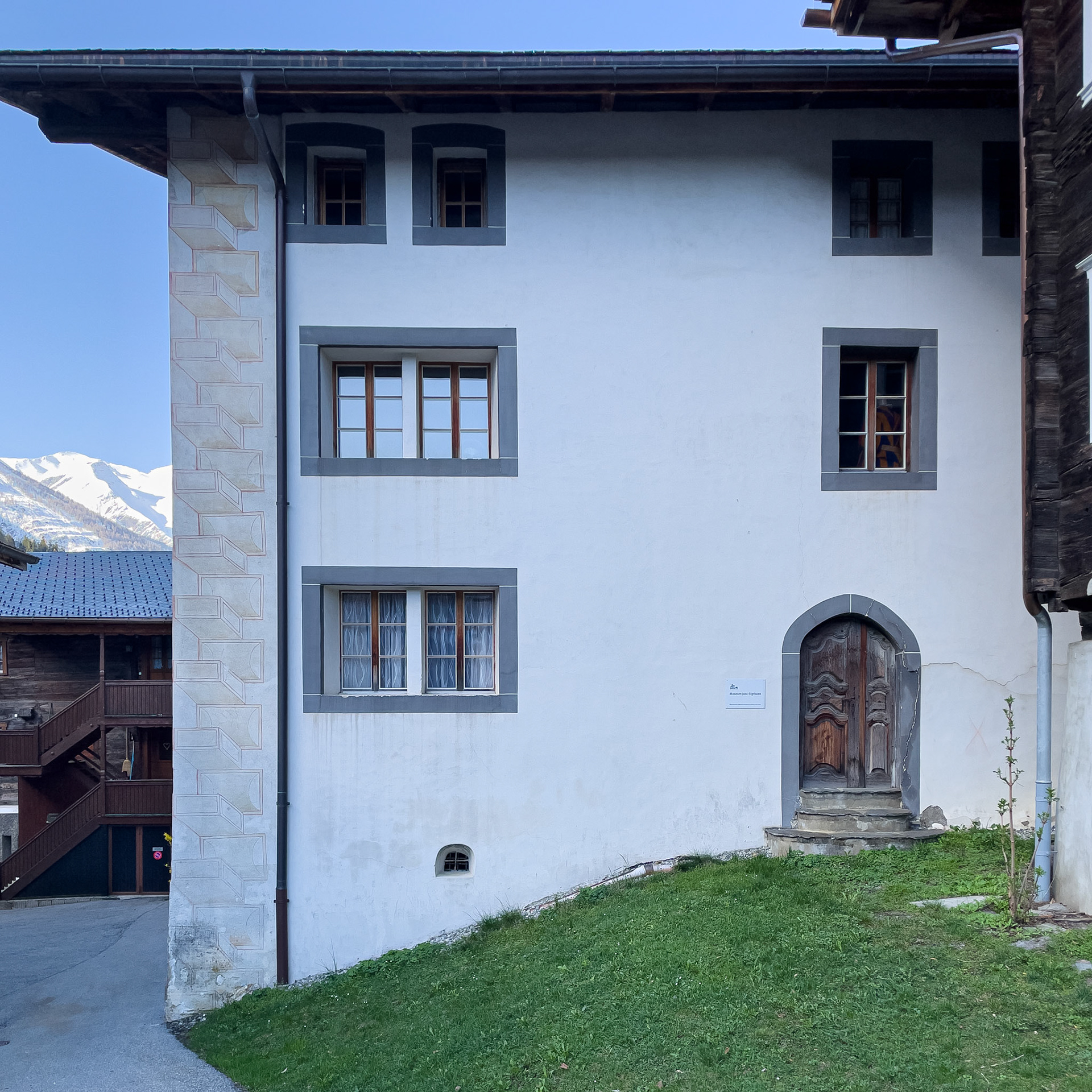
Jost Sigristen House
Jacob Valentin Sigristen lived from 1733 until 1808 and was the last governor of the old Valais before the French invasion. Originally constructed in 1573 by Martin Jost, most of the furnishings date from the late 18th century. One of the most striking features of the Jost Sigristen House is the office with its elaborately decorated ceiling, adorned with exquisite grisaille paintings.
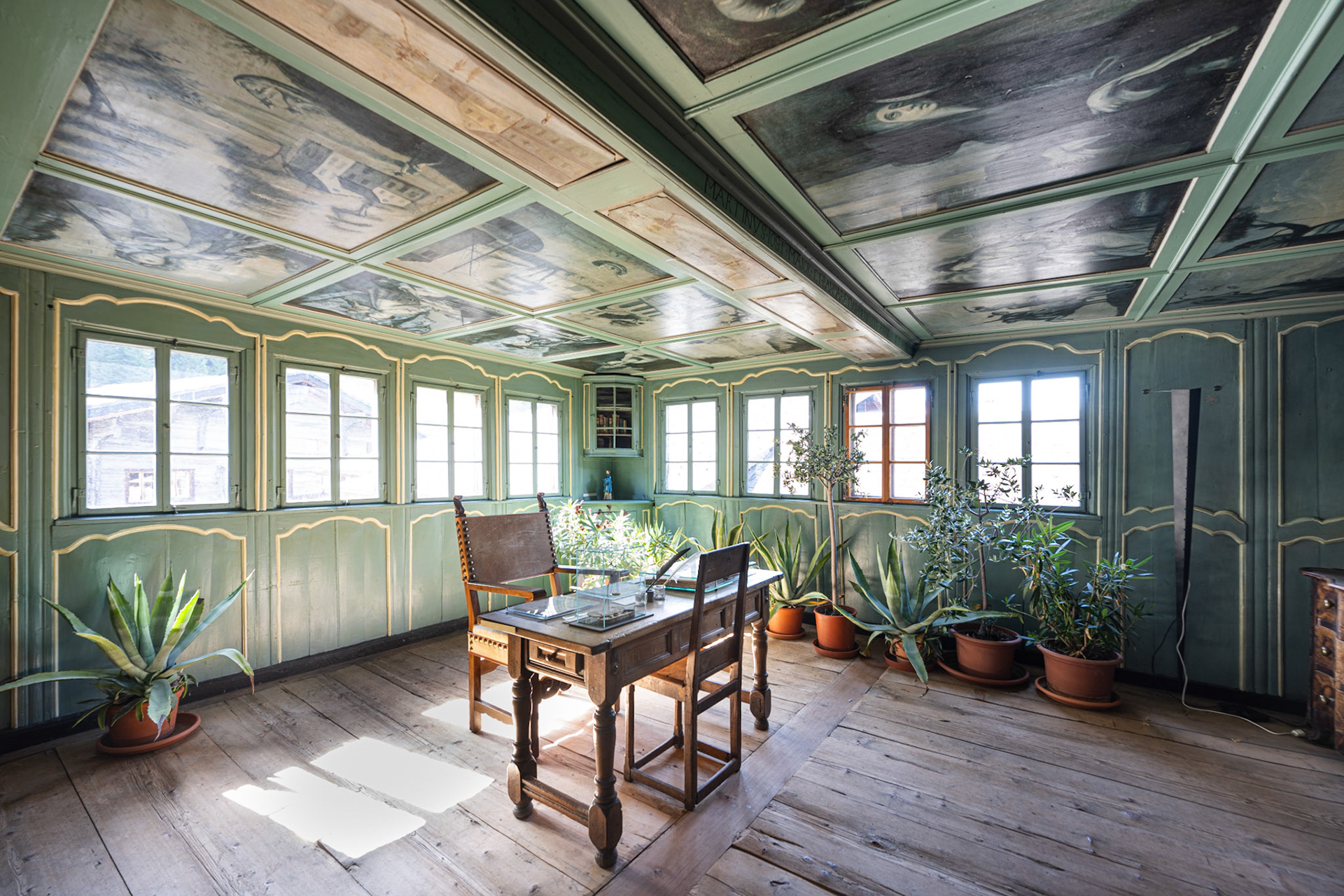
Jost Sigristen museum
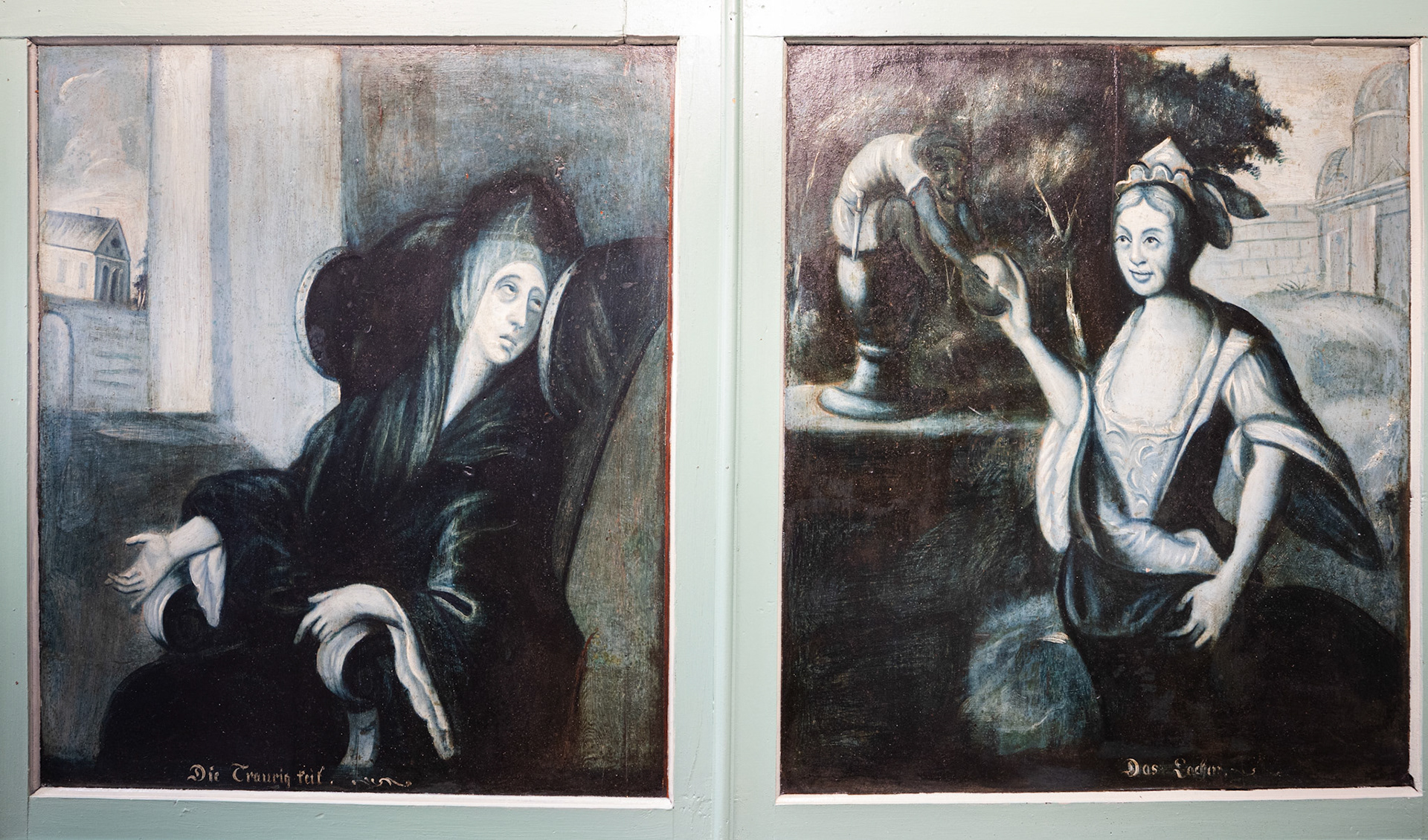
grisaille paintings
A brief stroll of approximately 20 minutes in the Nature Park Binntal leads to the neighboring village of Mühlebach, home to a close-knit community of about 80 residents. Because the village remained safe from fires and other disasters for centuries, twelve buildings in its center could be dated to the period between 1389 and 1501, and Mühlebach now features the oldest compact wooden village center in Switzerland.
Located on a small hill east of Mühlebach, the St. Joseph chapel was built between 1673 and 1676. This chapel provides a panoramic vista that unfolds before the majestic backdrop of the Valais Alps.
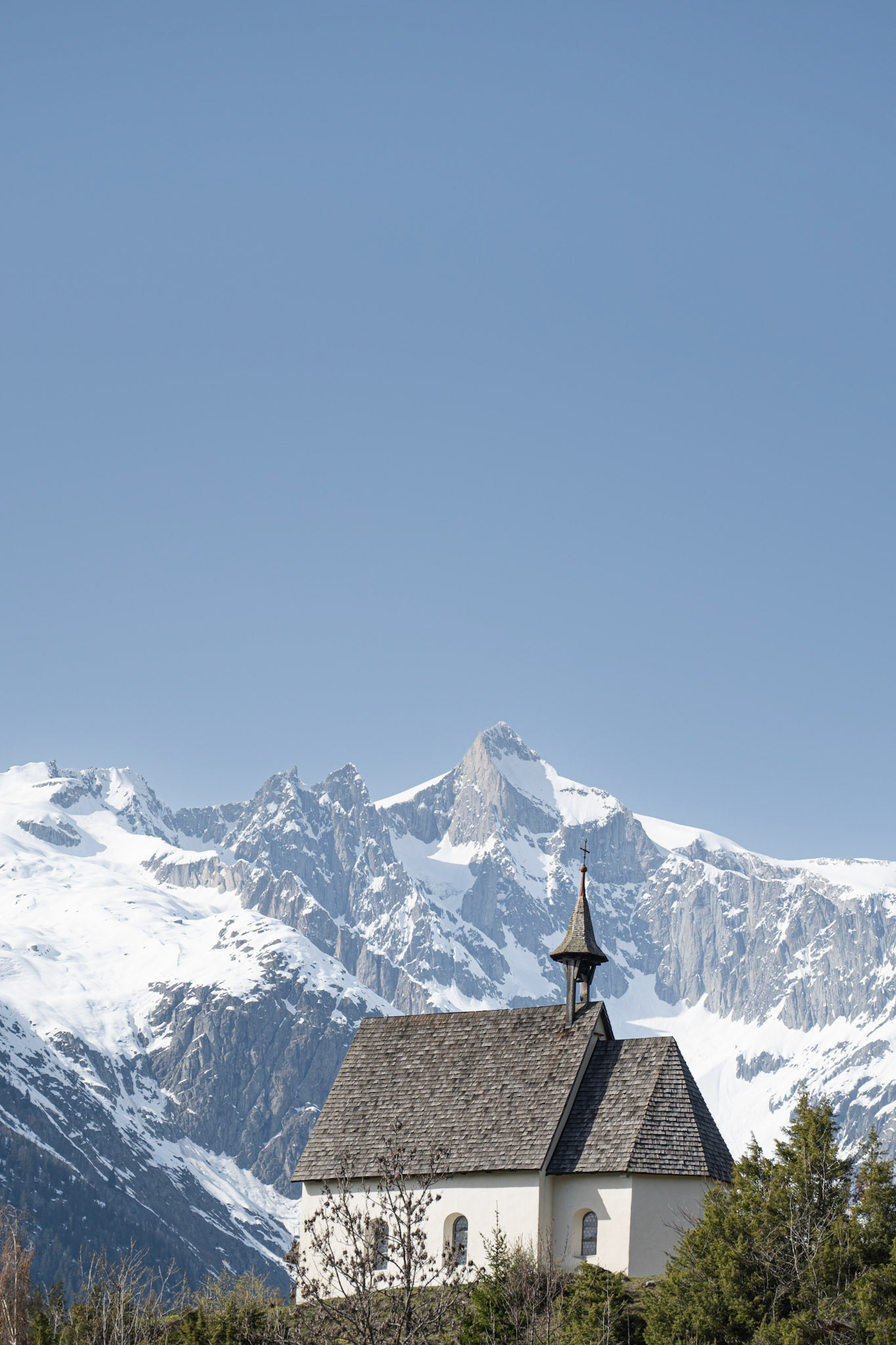
St. Joseph chapel
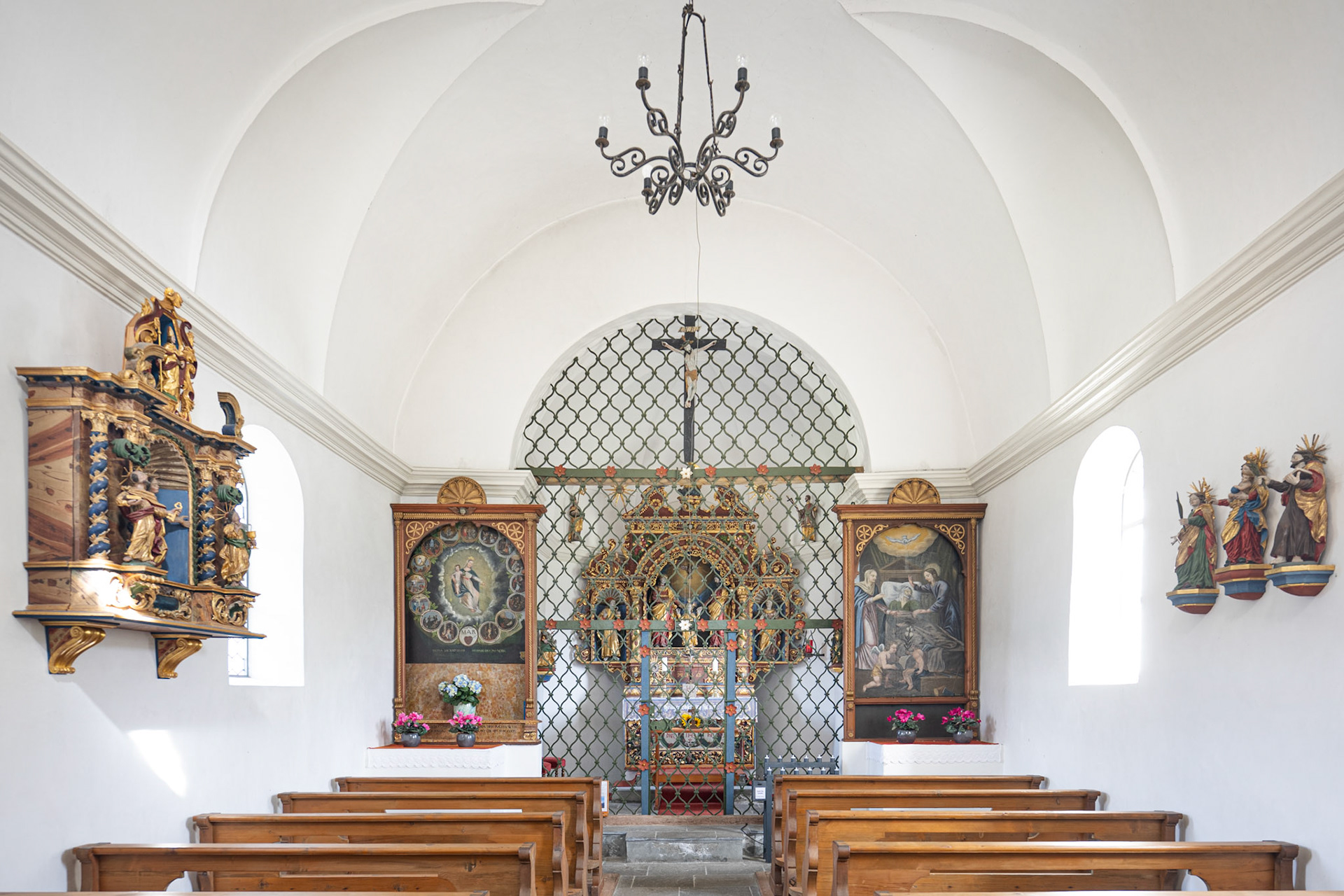
nave
Located right next to the village center, the 92 meter high and 280 meter long Goms Bridge was opened in summer 2015. Since then, it connects the hiking areas of the municipalities of Bellwald and Ernen all year round.
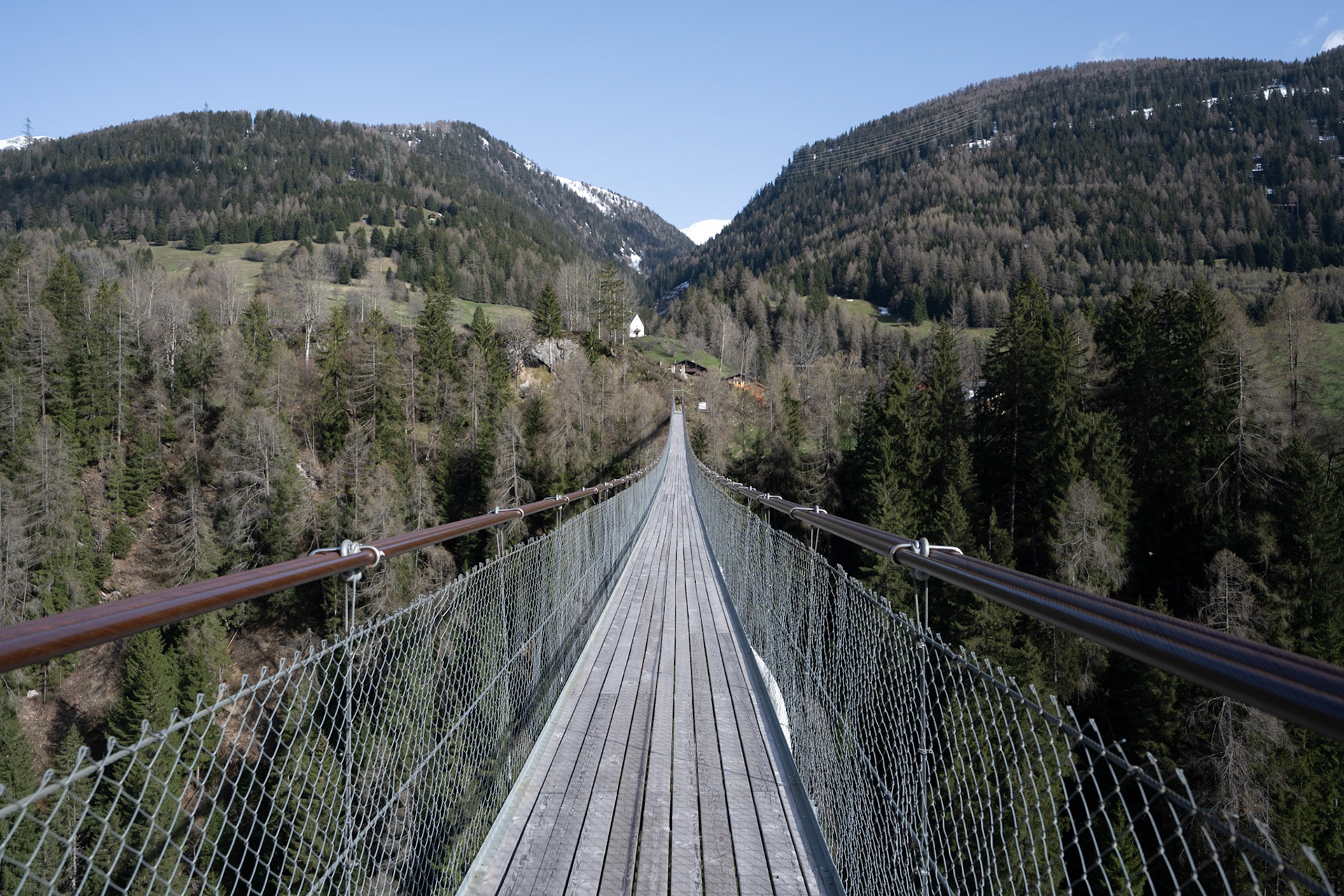
Goms bridge
UNESCO World Heritage Swiss Alps Jungfrau-Aletsch
The UNESCO World Heritage site Swiss Alps Jungfrau-Aletsch spans a surface area of 82,400 hectares. The site provides an outstanding example of the formation of the High Alps, including the largest glacier in Eurasia, the Great Aletsch Glacier. Accessible year-round via a network of cable cars and chair lifts within the Aletsch Arena, visitors are treated to wonderful outdoor opportunities, be it skiing in winter or hiking scenic trails in summer.
As our visit was in early spring, after the end of the skiing season, we were delighted to see that special spring trips were available in order to reach the Hohfluh viewpoint situated at an elevation of 2,227 meters above sea level.
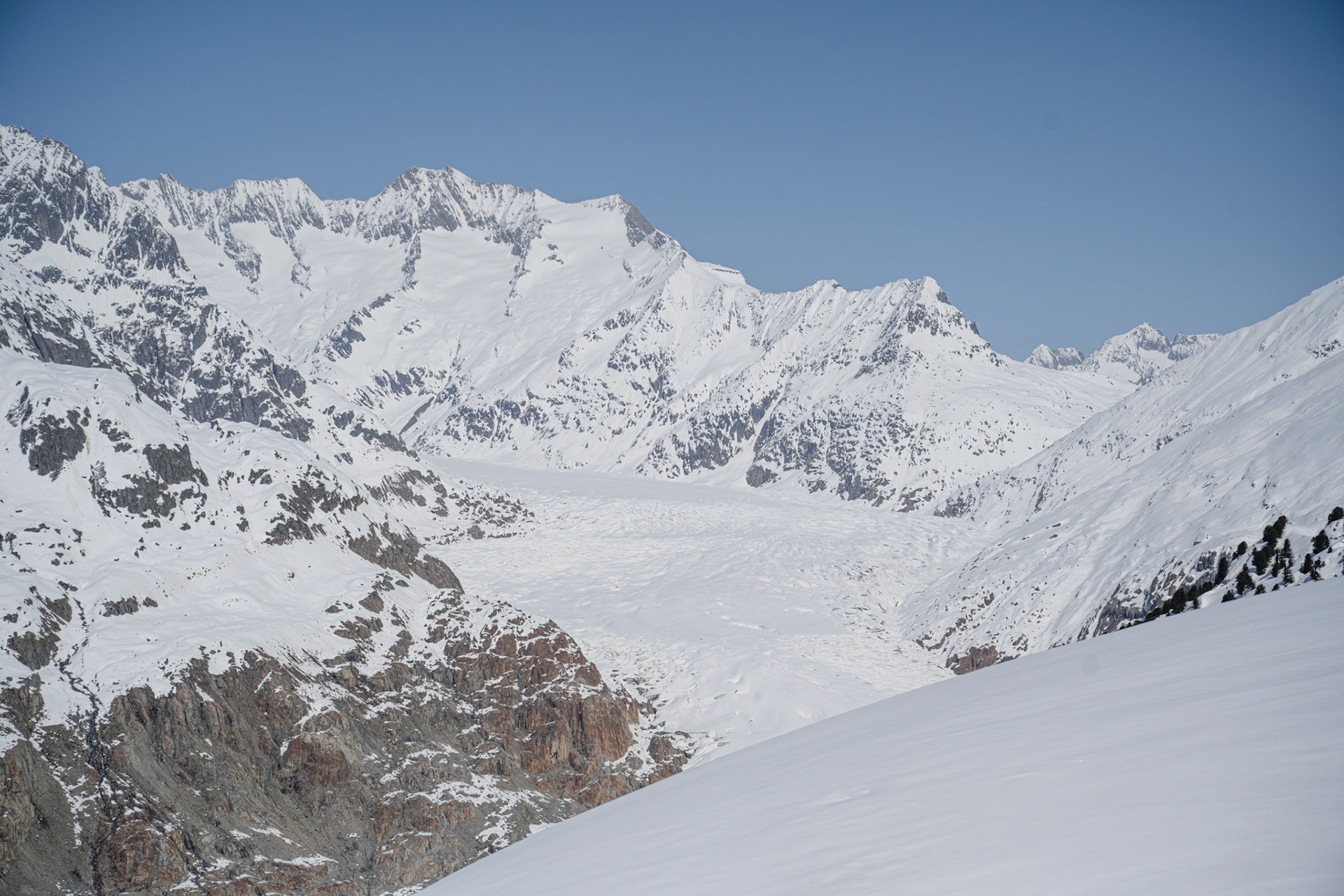
Great Aletsch Glacier
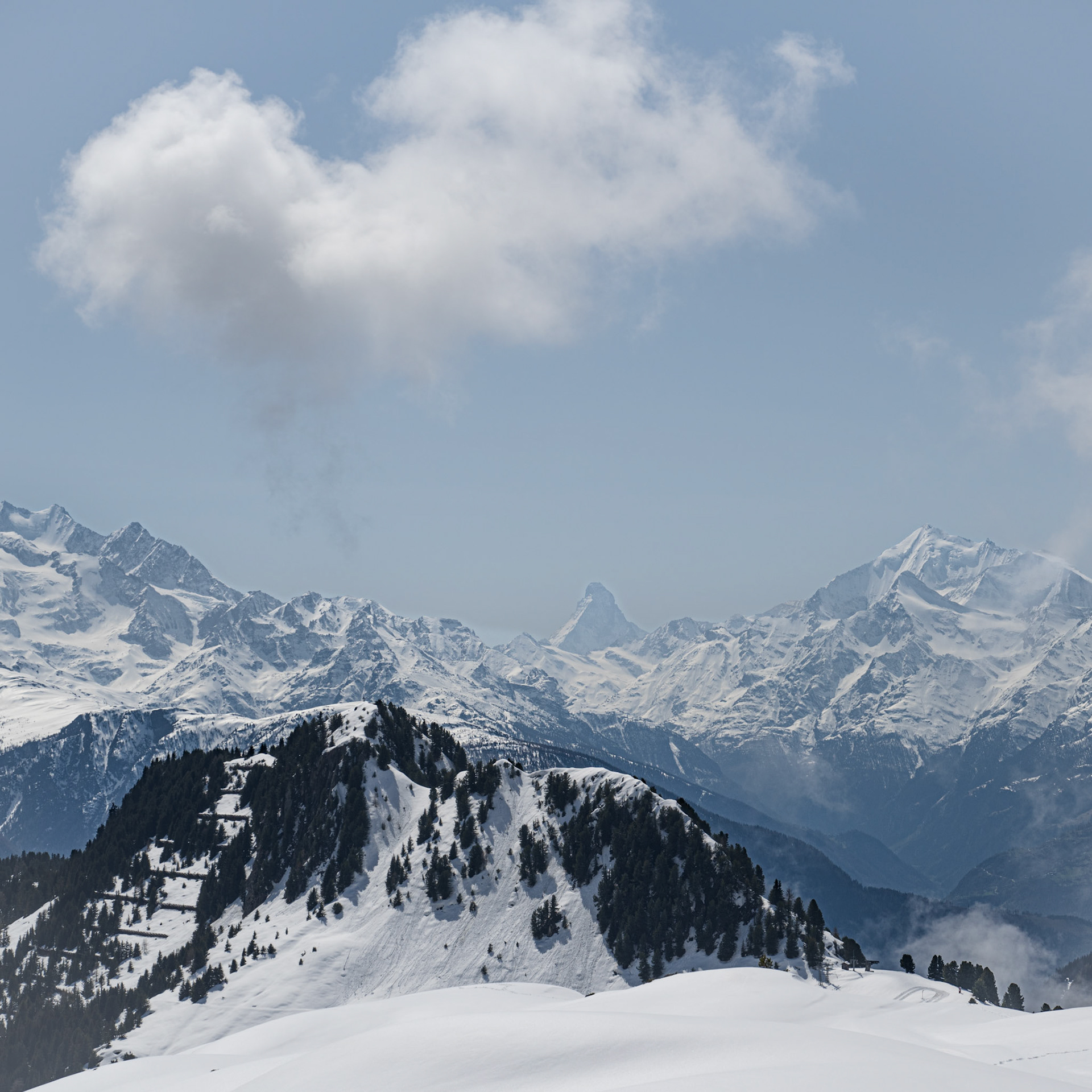
Matterhorn view from Riederalp
From this panoramic vantage point, we marveled at the size of the glacier, although smaller than when we first saw it three decades ago. Looking in the opposite direction, the iconic silhouette of the Matterhorn added to the landscape’s beauty.
The spring temperature allowed us to fully take in the sun - in T-shirts! - while our feet were still in the snow.
Down in the valley, in Naters, just outside Brig, stands the World Nature Forum that opened its doors in 2016.
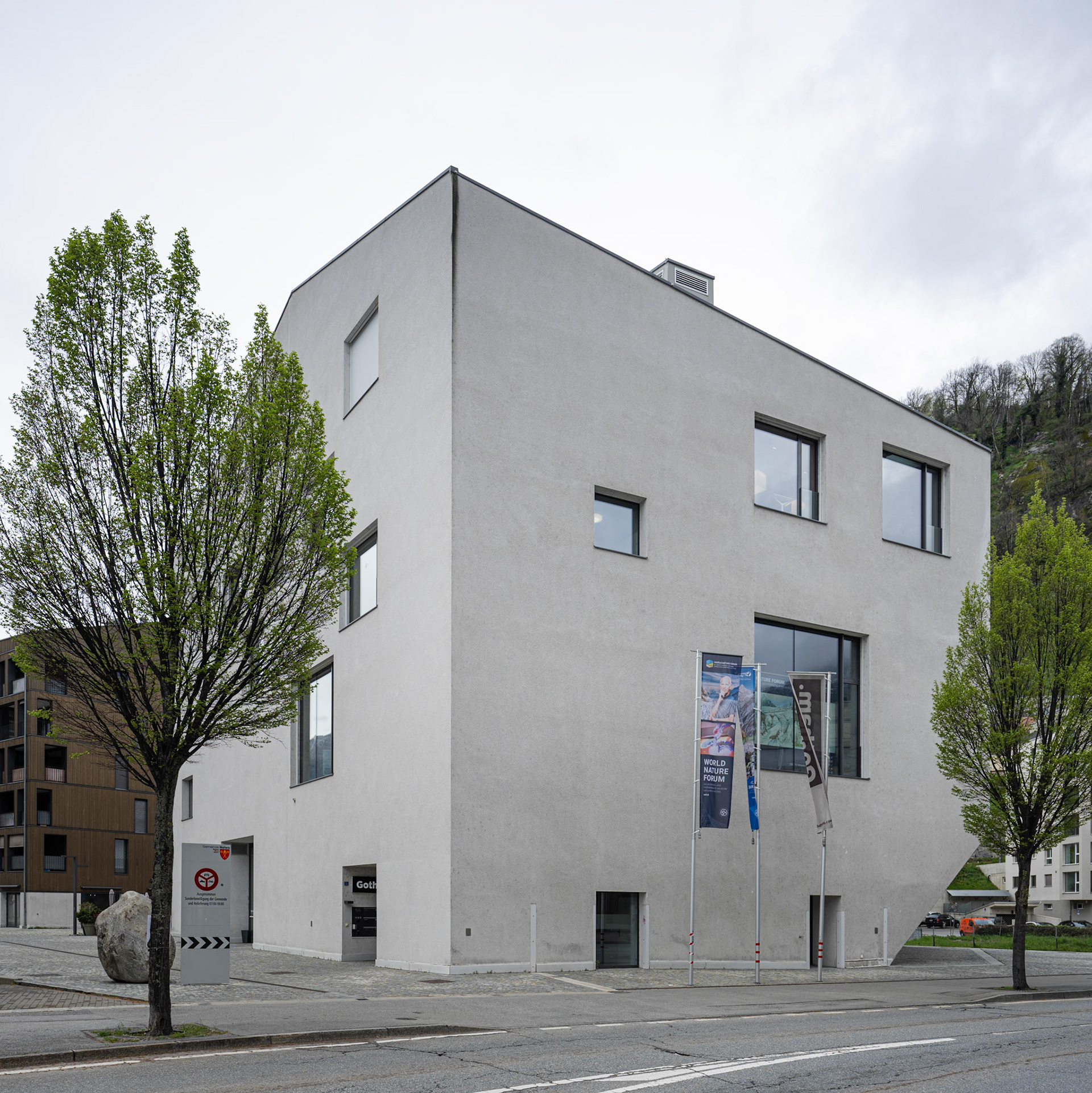
World Nature Forum
Designed to illuminate the wonders of the UNESCO World Heritage Swiss Alps Jungfrau-Aletsch, this very interactive museum offers visitors a journey through the wilderness and rich cultural heritage of the region. Among the many treasures awaiting discovery, an original Jungfrau railway car is a true gem. Having embarked on its maiden voyage to the legendary Jungfraujoch in 1912, this historic railway car invites visitors to step back in time. Adding to the immersive experience is the Panoramic Cinema with its 100-square-meter screen.
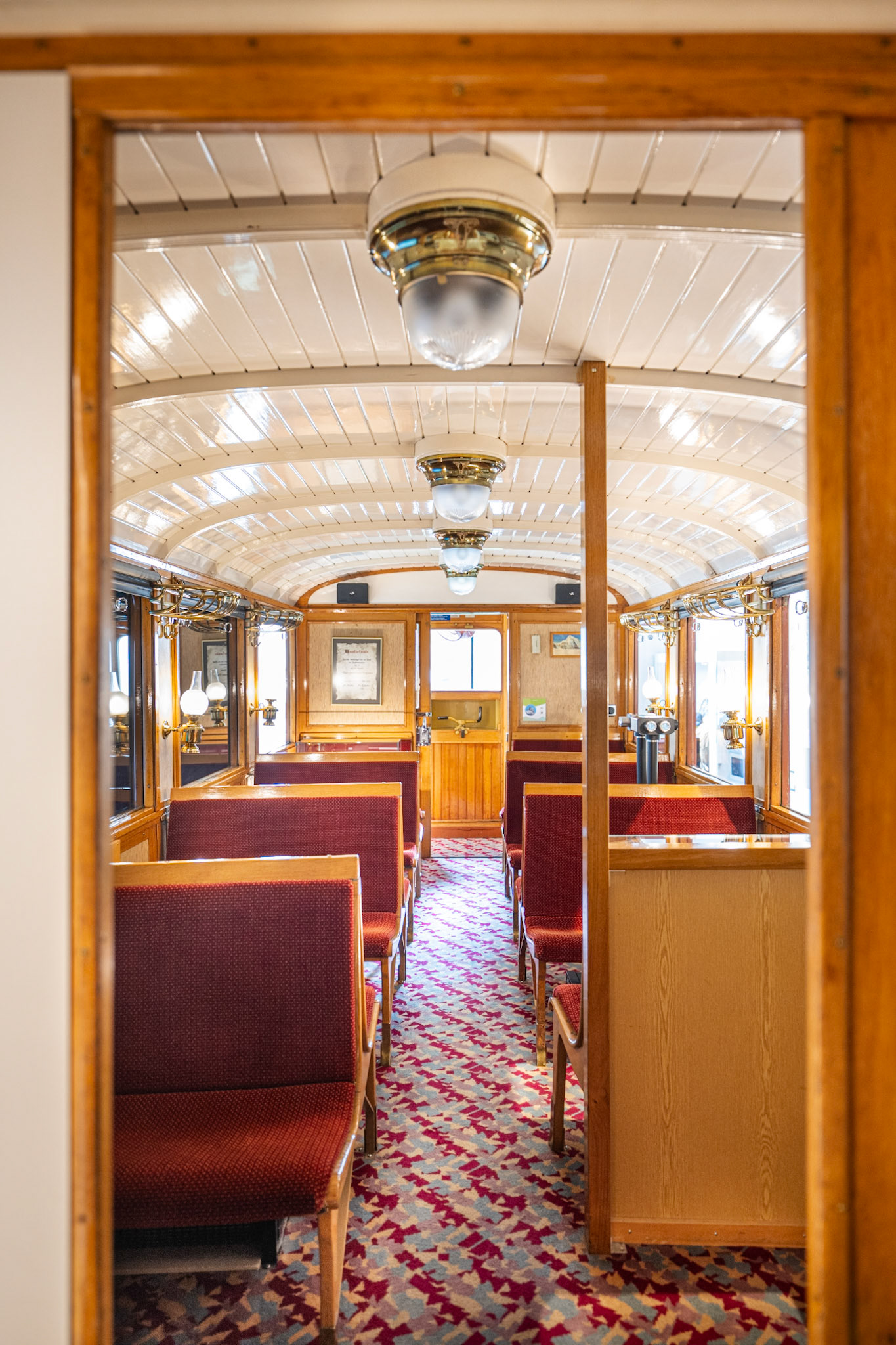
Jungfrau railway car
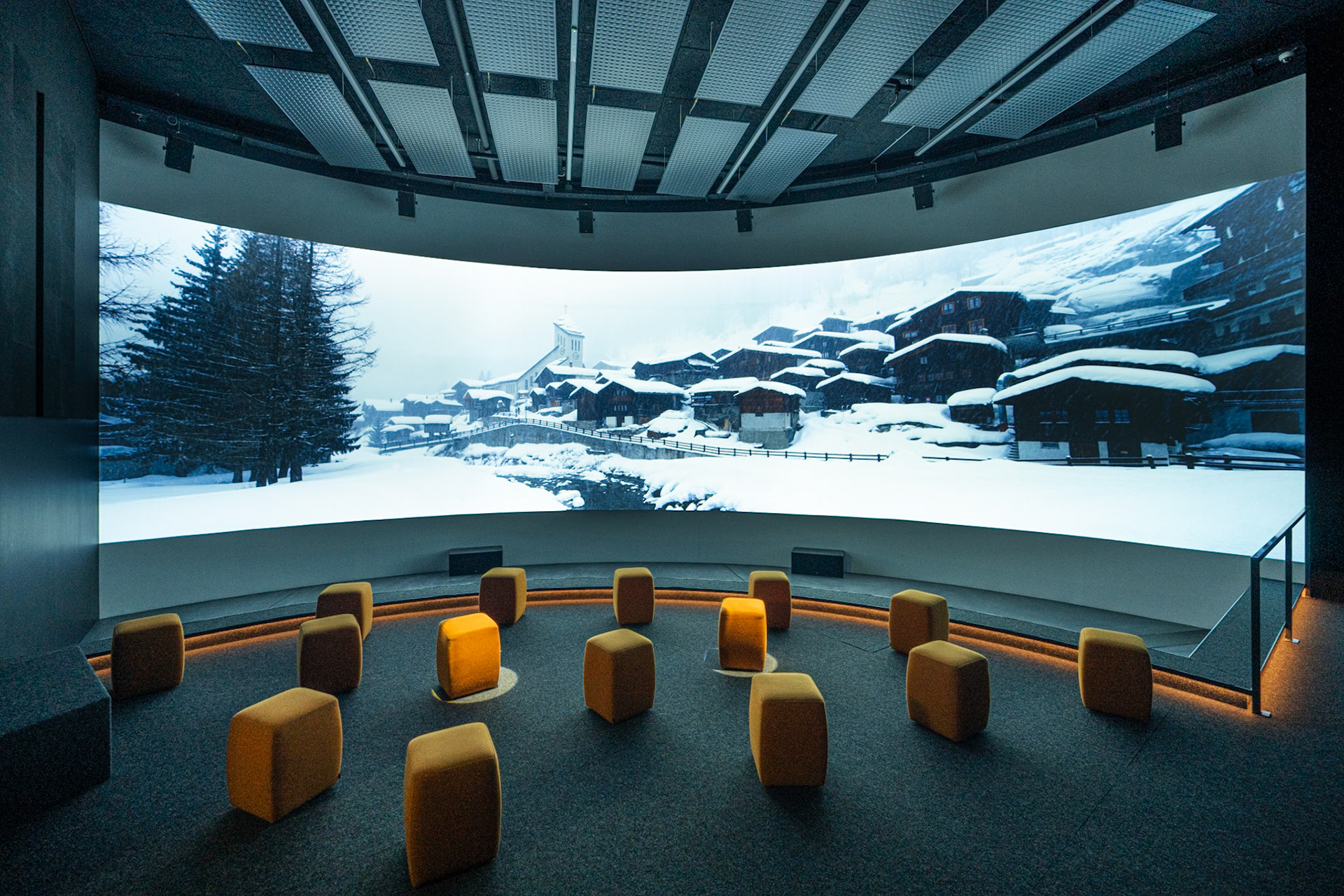
panoramic cinema
A castle and hotels
The Stockalperschloss in Brig was built for Kaspar Stockalper, a prominent silk merchant, between 1658 and 1678. The plans were created by the Bodmer brothers Christian, Peter and Balthasar. The rectangular building features three towers, crowned with distinctive onion-shaped roofs, named after the biblical Three Kings: Kaspar, Melchior and Balthazar.
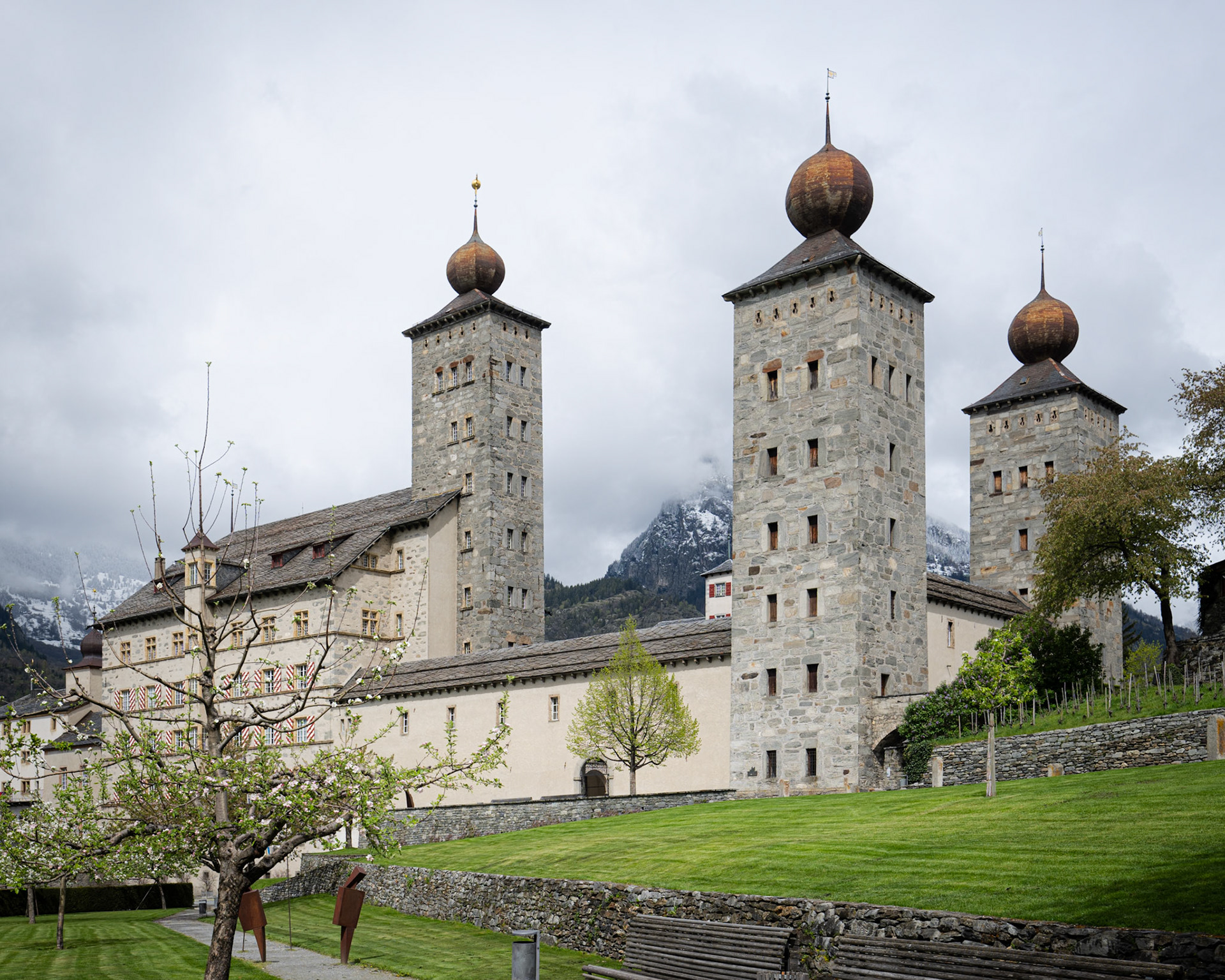
Stockalperschloss
The large courtyard, spanning 40 meters by 32 meters, features elegant arcades, reminiscent of the Italian Renaissance style. An arcade bridge leads to the older Stockalper house and its chapel.
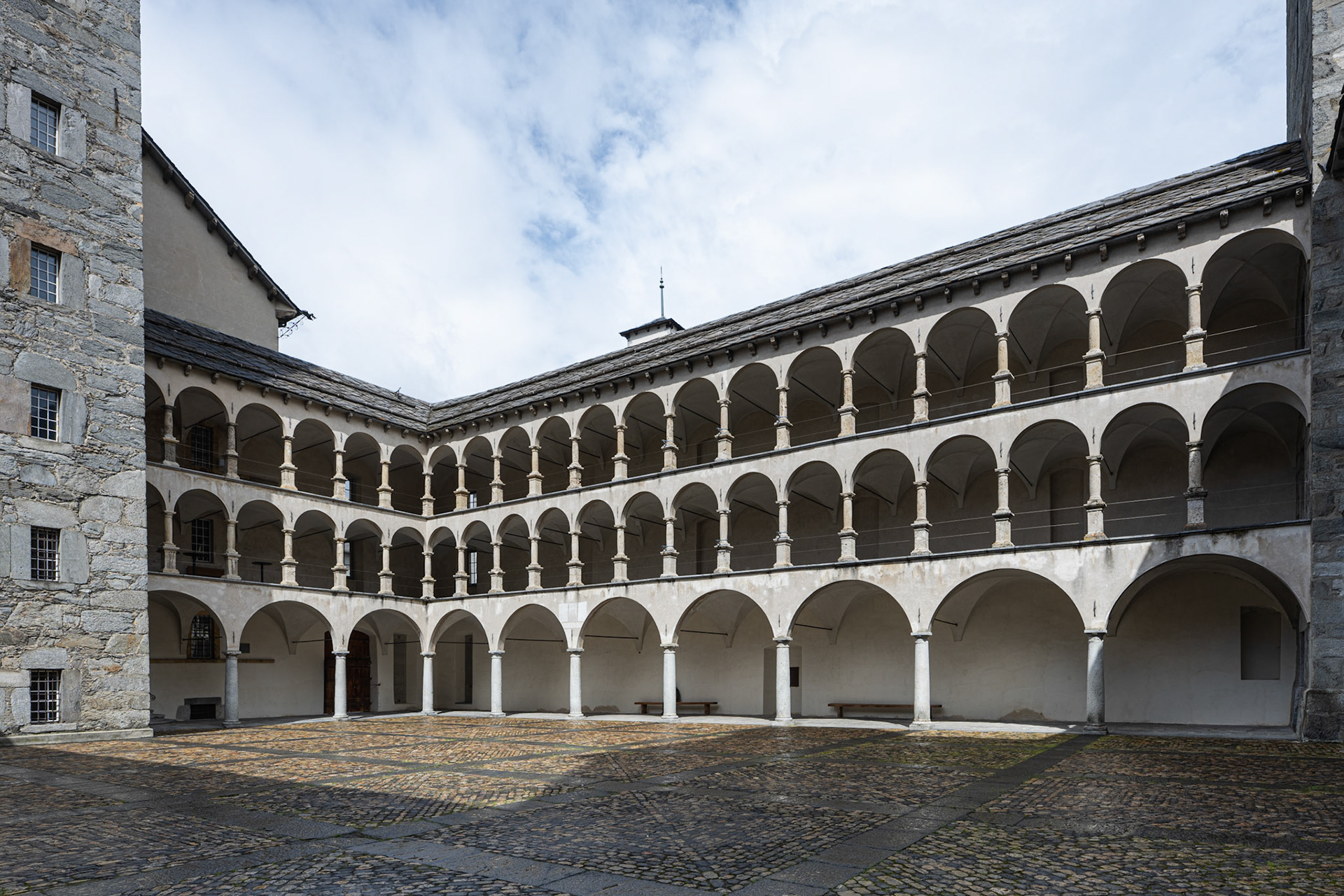
courtyard and arcades
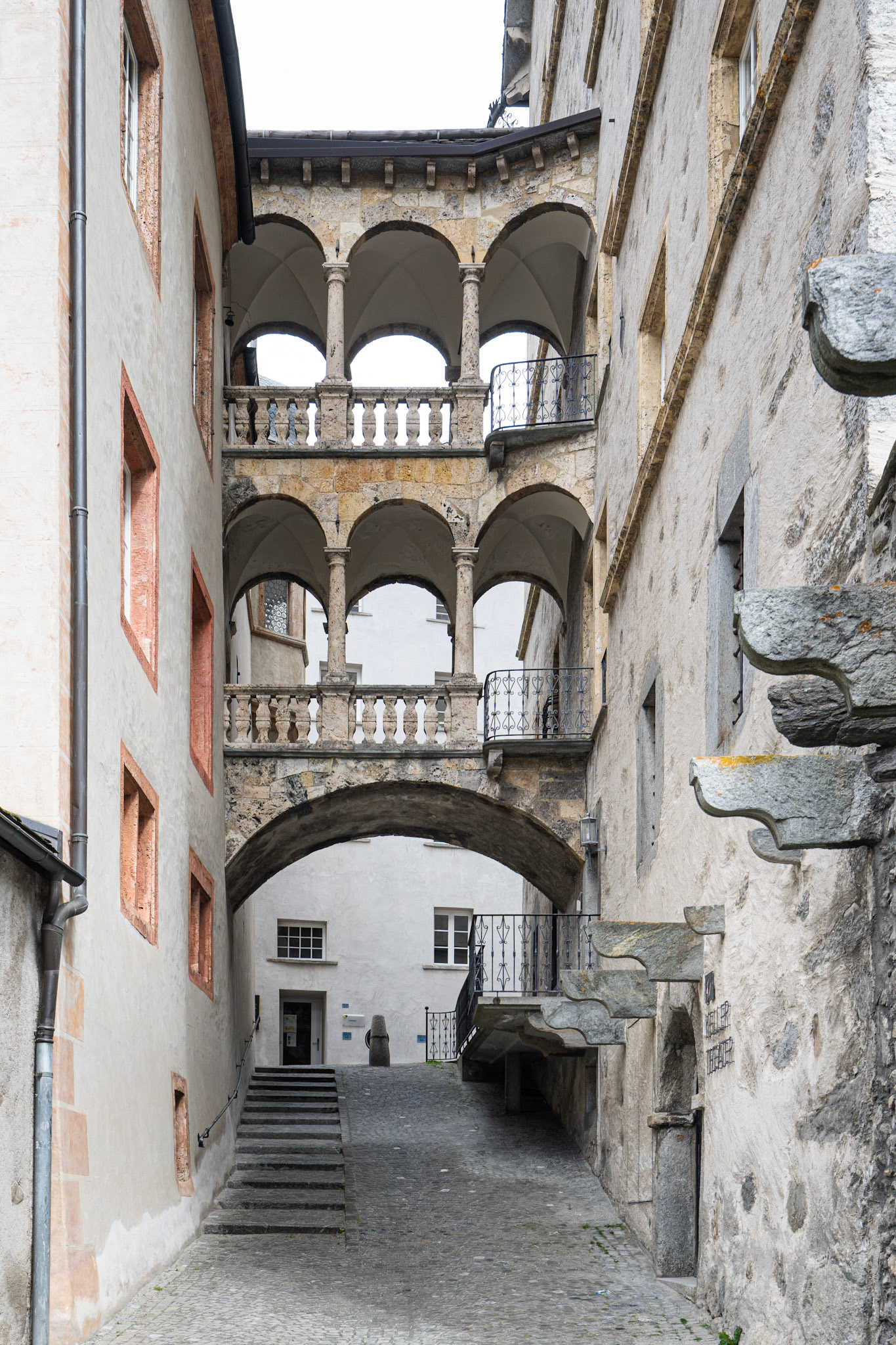
arcade bridge
Station Ritz in Niederwald is a charming tribute to the legacy of César Ritz, nestled within the historic Niederwald train station. This quaint museum offers visitors a glimpse into the life and achievements of the renowned hotelier who was born there in 1850.
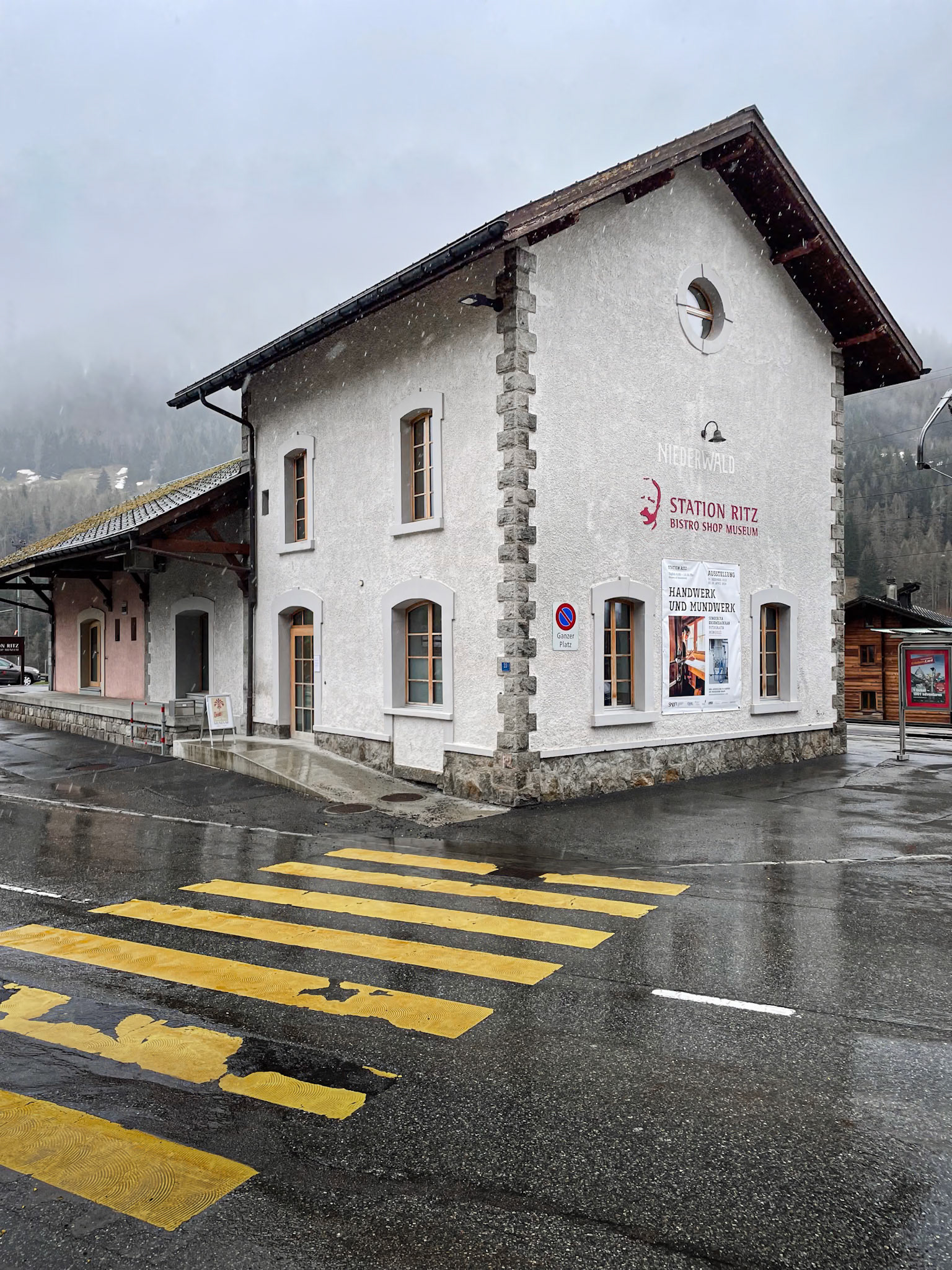
Station Ritz
Among its highlights is Suite M, a meticulously crafted reconstruction of a former room from the Ritz Hotel at Place de Vendôme in Paris, opened in 1898.
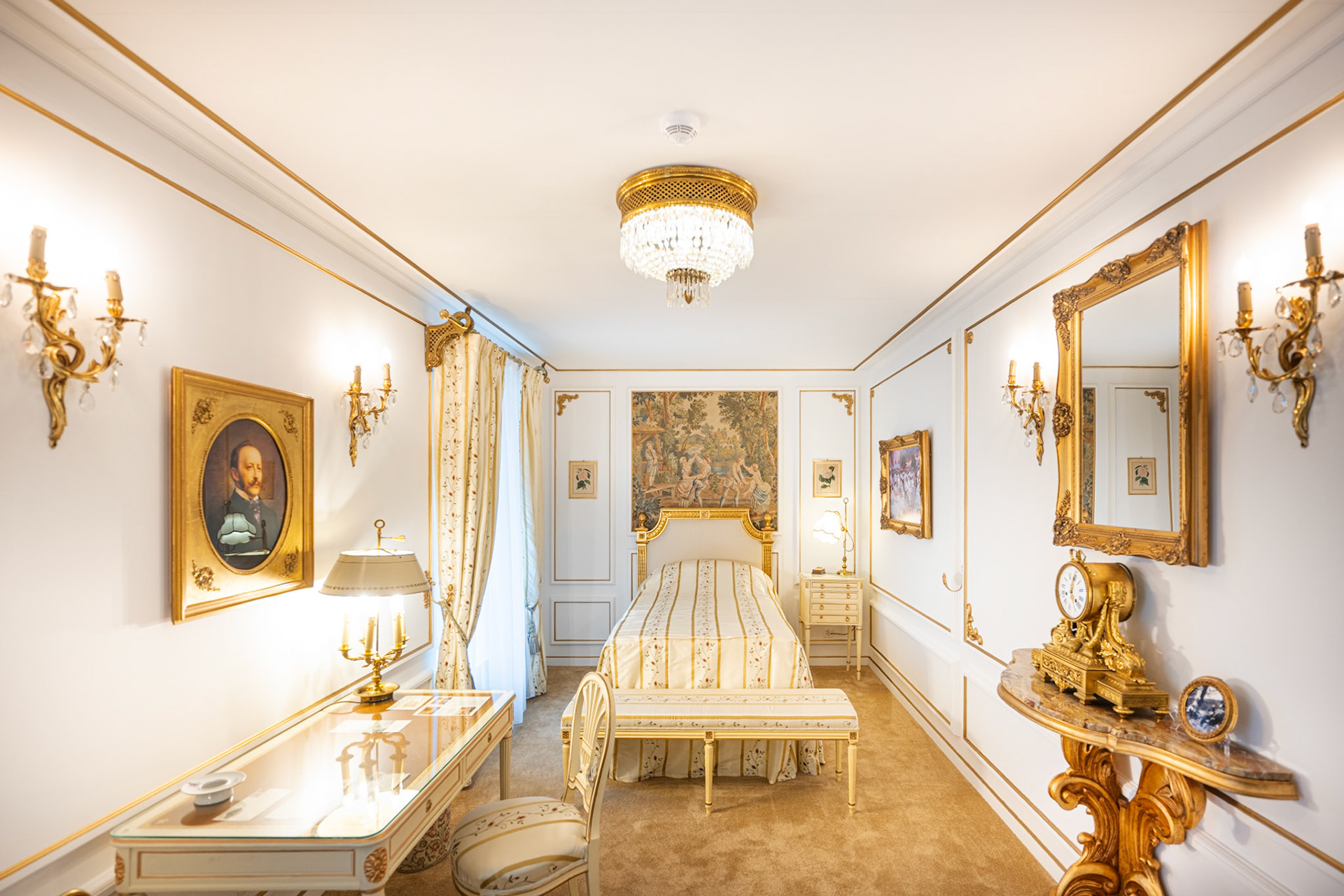
Suite M
The museum also showcases interesting exhibits on how other brands tried to use the famous Ritz name, be it crackers, cars or perfume.
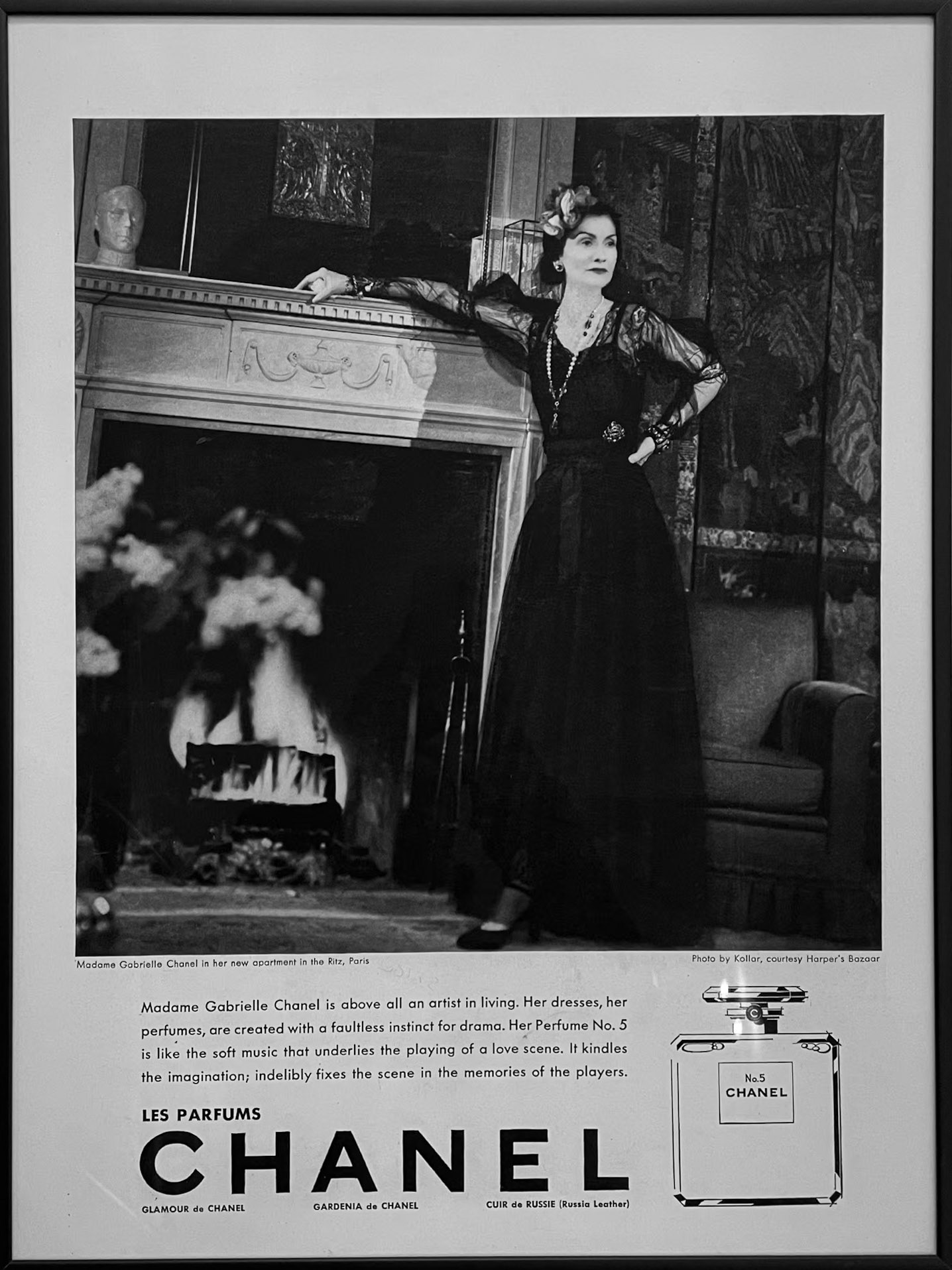
marketing - Chanel
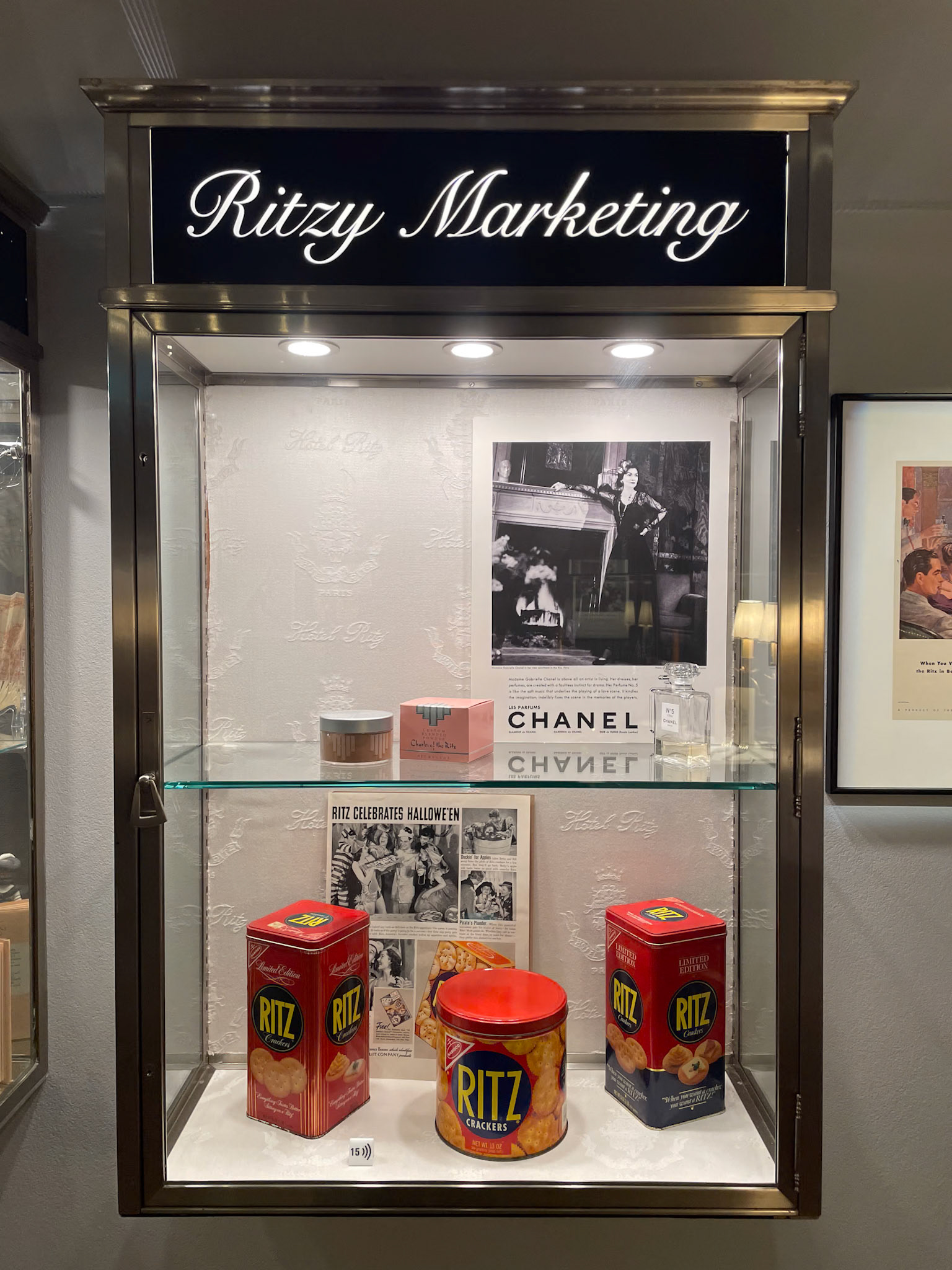
marketing - Ritz crackers
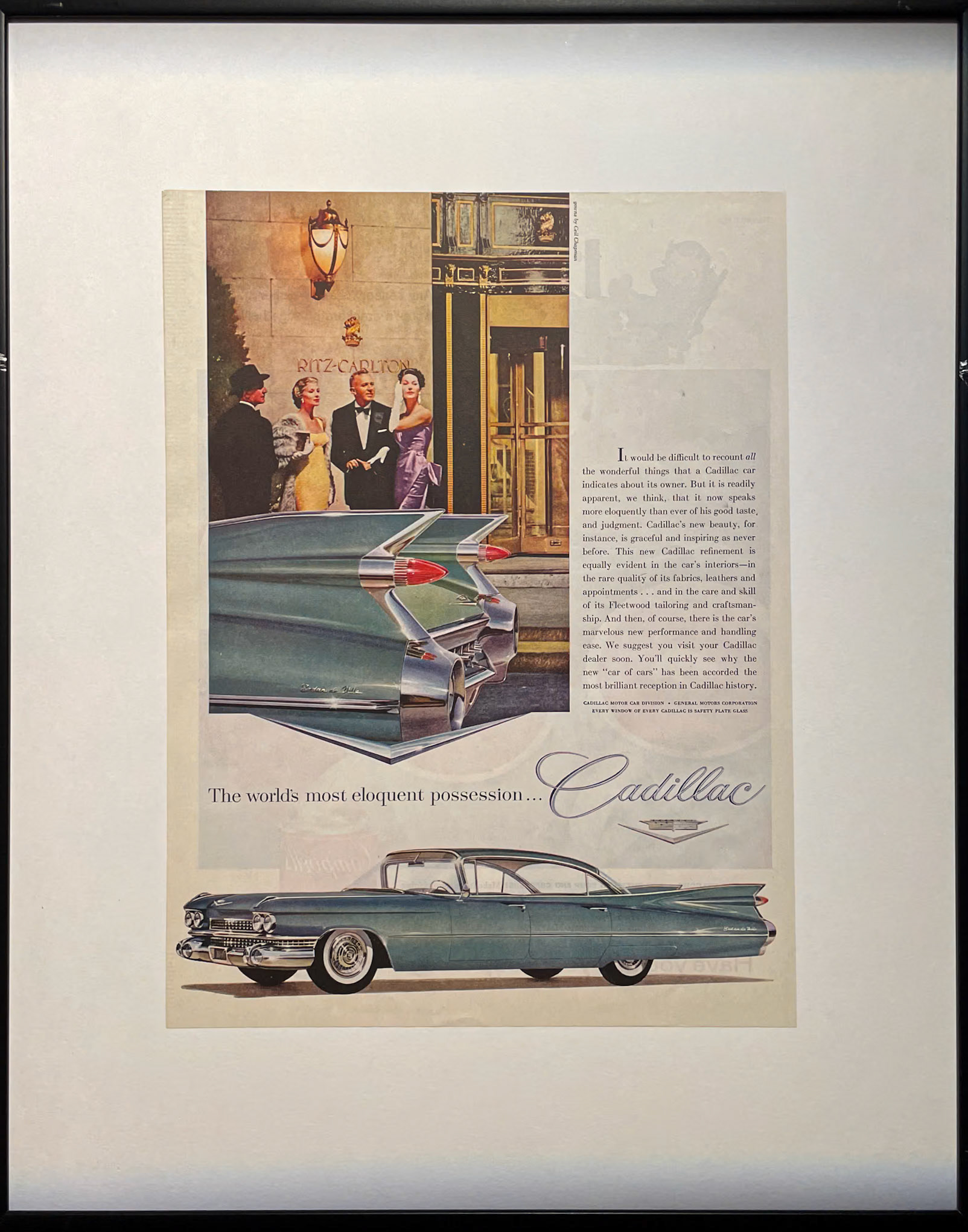
marketing - Cadillac
Built in 1882 in a hairpin turn of Furka Pass road, Hôtel Belvédère in Gletsch now stands as a picturesque relic of bygone days. Originally conceived as a modest retreat, the hotel underwent two expansions, first in 1890 and then again in 1903, eventually boasting a total of 90 beds.
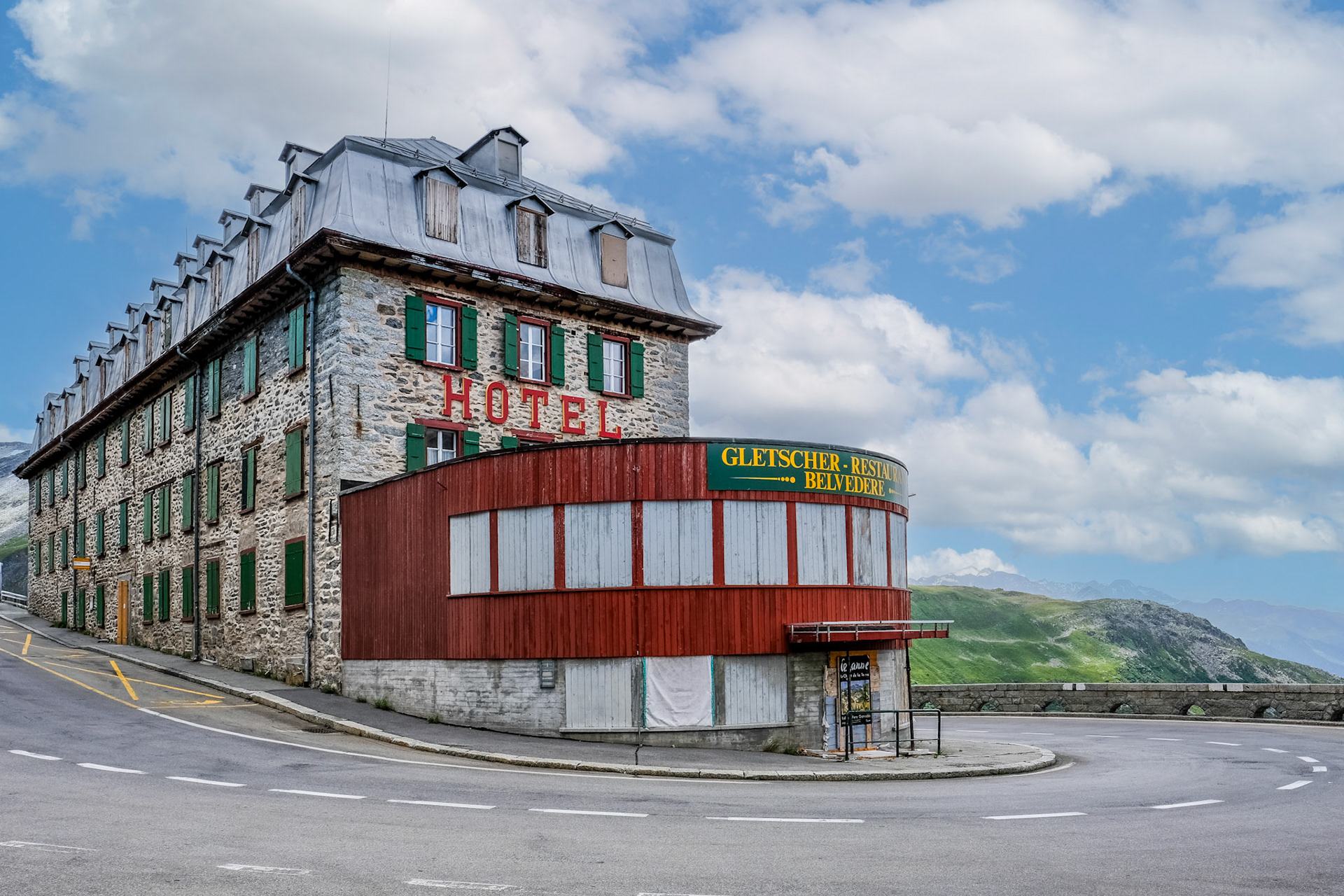
Hôtel Belvédère in Gletsch
Its windows overlooked the Rhône glacier and visitors could easily walk to the grotto carved inside the ice. It appeared in the 1964 James Bond film "Goldfinger" where Sean Connery drives over the Furka Pass. More recently, the hotel's timeless façade has earned it the distinction of being featured as the cover photo of the "Accidentally Wes Anderson" book. As climate change has melted the Rhône glacier, leading it to be further and further away from the road, tourism has diminished and despite its illustrious past, Hôtel Belvédère has been closed since 2015.
On our way back to Lausanne, we made a few more stops in the French speaking Valais.
Concrete and Lakes
Église Sainte-Croix in Sierre was designed by Jean-Marie Ellenberger and built between 1959 and 1962 in exposed concrete.
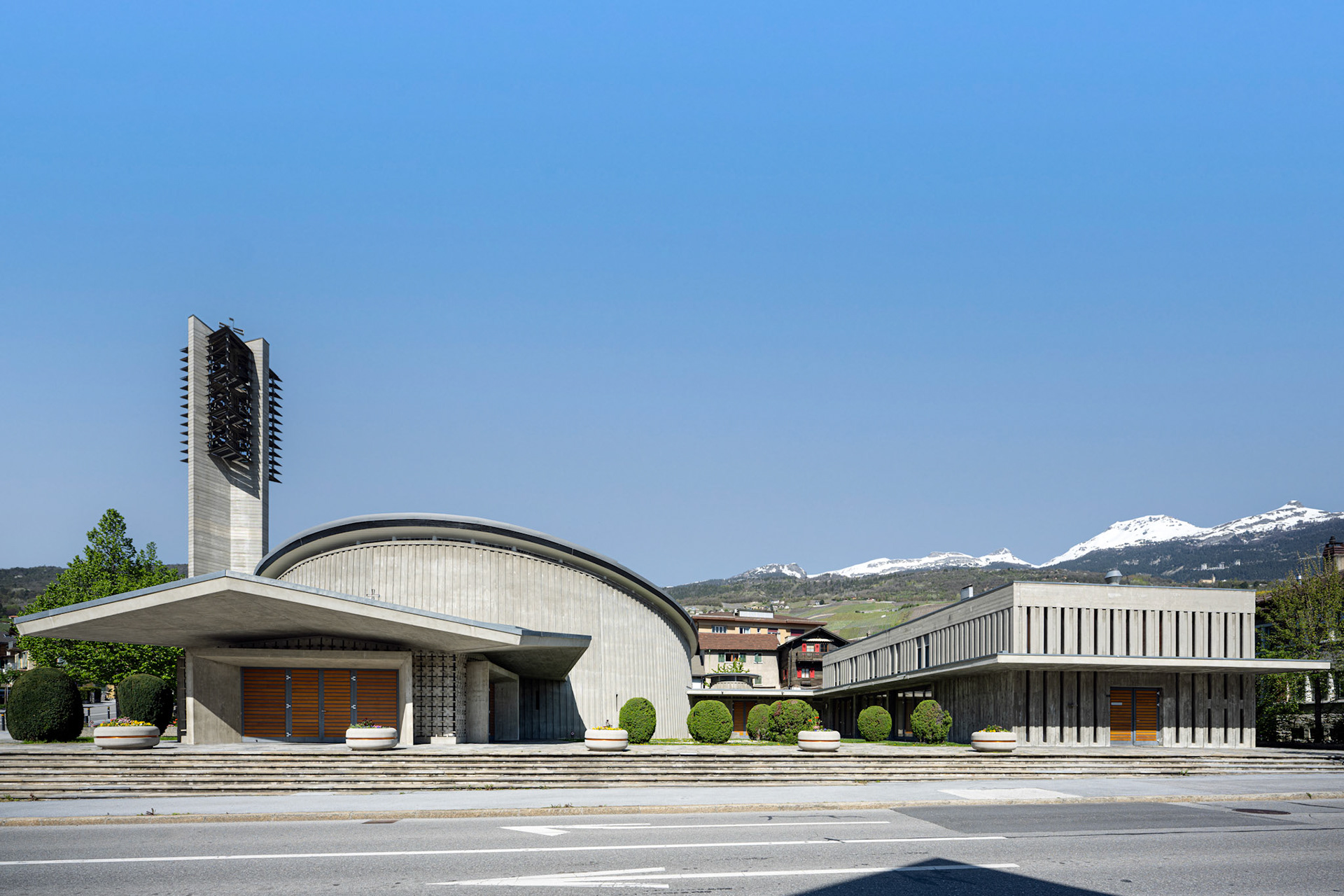
Église Sainte-Croix
The church's distinctive oval shape serves as more than just a structural feature, it also shows the profound shift towards community engagement in anticipation of the Second Vatican Council. The Christ of the Great Cross was created by Genevan sculptor Albert Rouiller. The stained glass windows were created by Albert Chavaz.
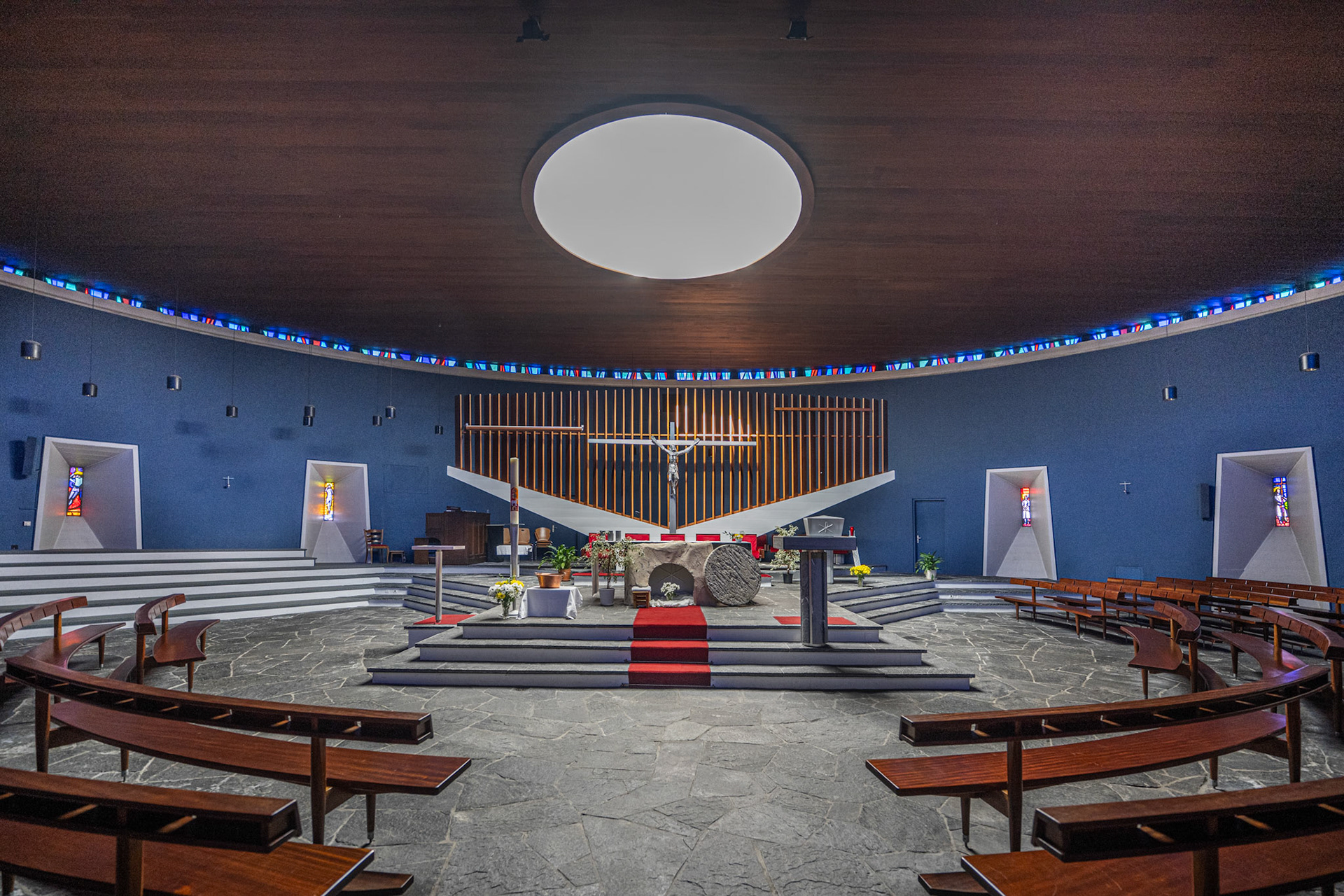
oval nave
Nearby is located the underground lake of St Leonard. Stretching over 300 meters in length and reaching a width of up to 20 meters, the underground lake is the largest subterranean lake in Europe. It was discovered in 1943, but only after an earthquake opened additional fissures in 1946, the water level became low enough to be easily navigable. The guided visits by boat take about 30 minutes.
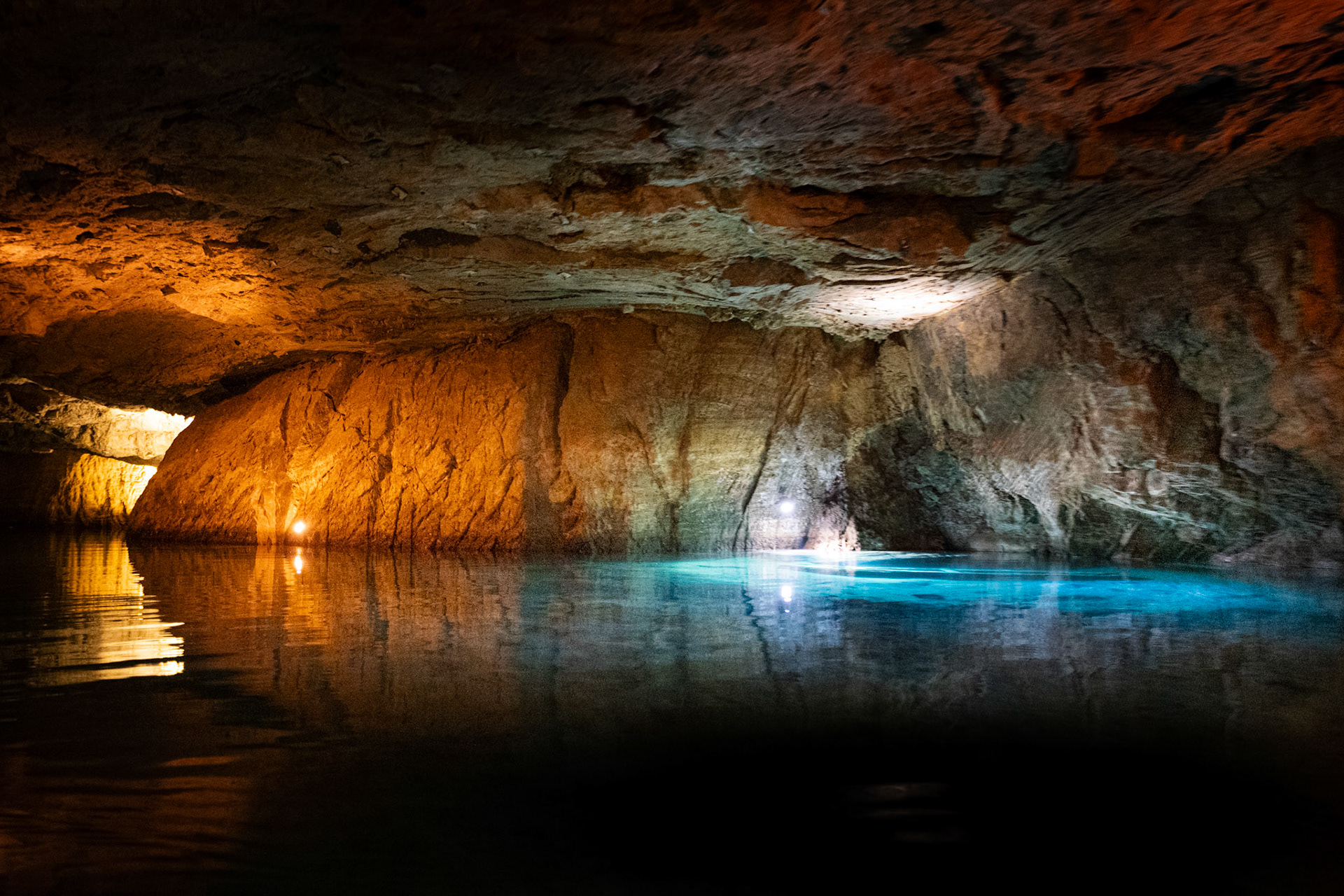
St Leonard underground lake
A short drive into the Hérémence valley brought us to the Saint-Nicolas d'Hérémence church, a striking example of brutalist architecture. It was designed by Walter Maria Förderer as a replacement for an 18th century church damaged during an earthquake in 1946.
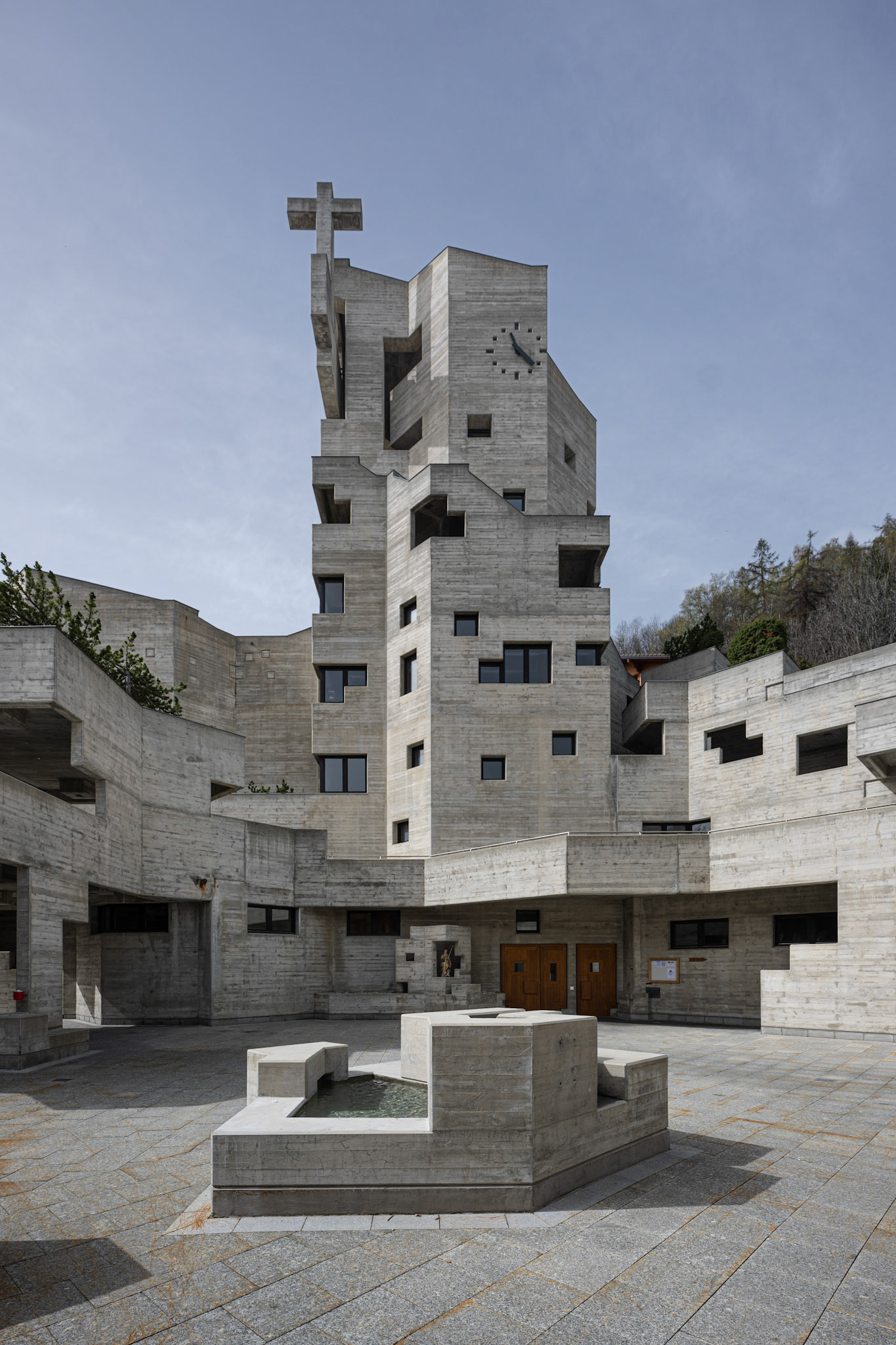
Saint-Nicolas d'Hérémence - facade and tower
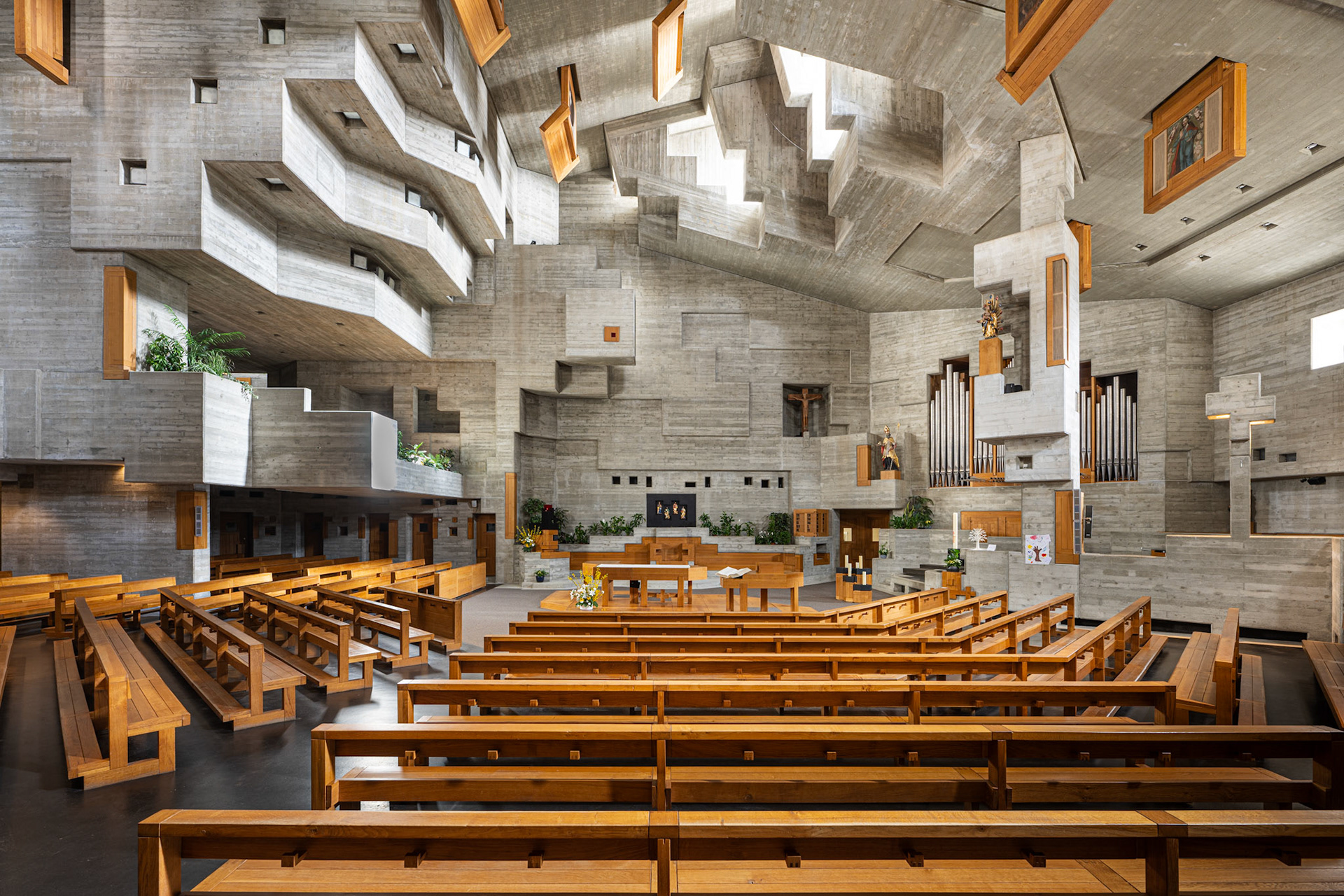
Saint-Nicolas d'Hérémence - nave
Constructed between 1968 and 1971, the church is situated on steep terrain, boasting a height difference of over 15 meters and shares a common material lineage with the Grande Dixence dam. Stairs gracefully connect the various levels of the building which also comprises a public library and rooms for local associations.
In summer, we recommend driving further into the valley to the Grande Dixence dam. The dam was built between 1950 and 1961. Rising to an impressive height of 285 meters, it claims the title of Switzerland's tallest structure and holds the distinction of being the tallest gravity dam globally.
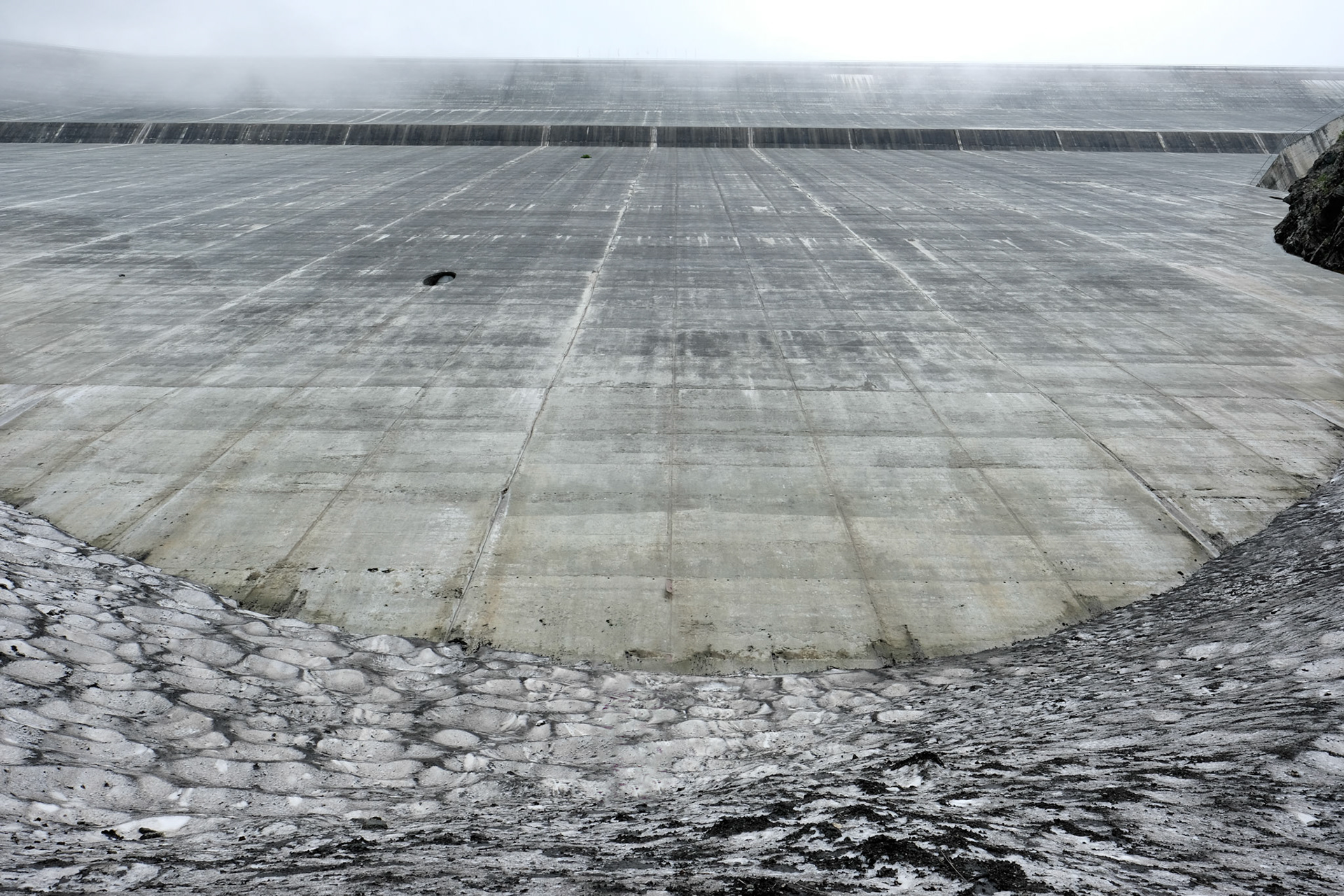
Grande Dixence
The dam's water fuels four power stations that collectively produce enough electricity to sustain approximately 400,000 households. The dam's proportions are colossal, stretching 200 meters wide at its base and tapering to 15 meters at its summit. Its structure comprises an astounding 6,000,000 cubic meters of concrete, a testament to the meticulous planning required for its construction. Nestled within the embrace of the dam lies the expansive Lac des Dix reservoir, spanning a surface area of 4 square kilometers, making it the largest lake in the Alps situated above 2000 meters. Access to the top of the dam is possible using a small cable car.
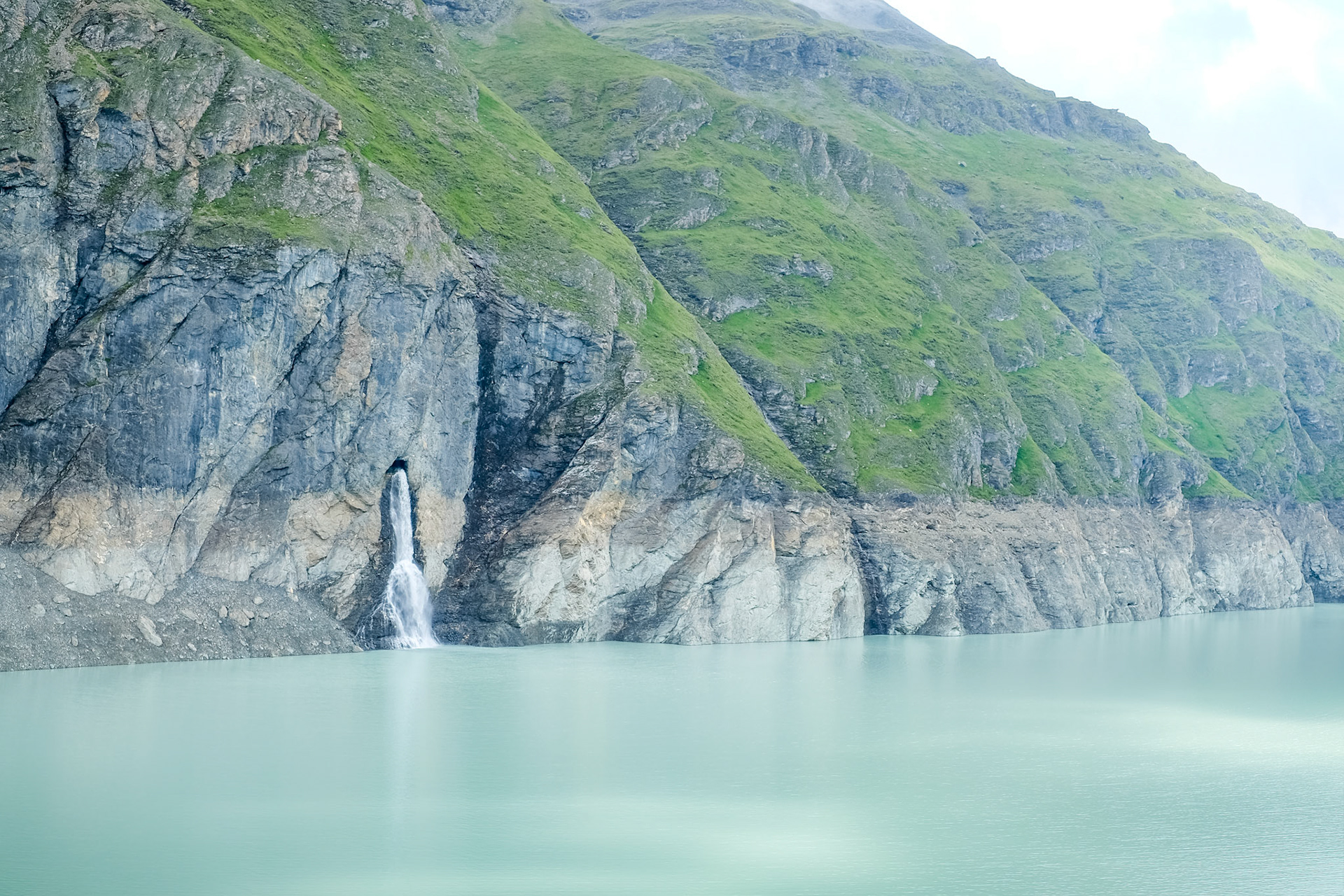
Lac des Dix
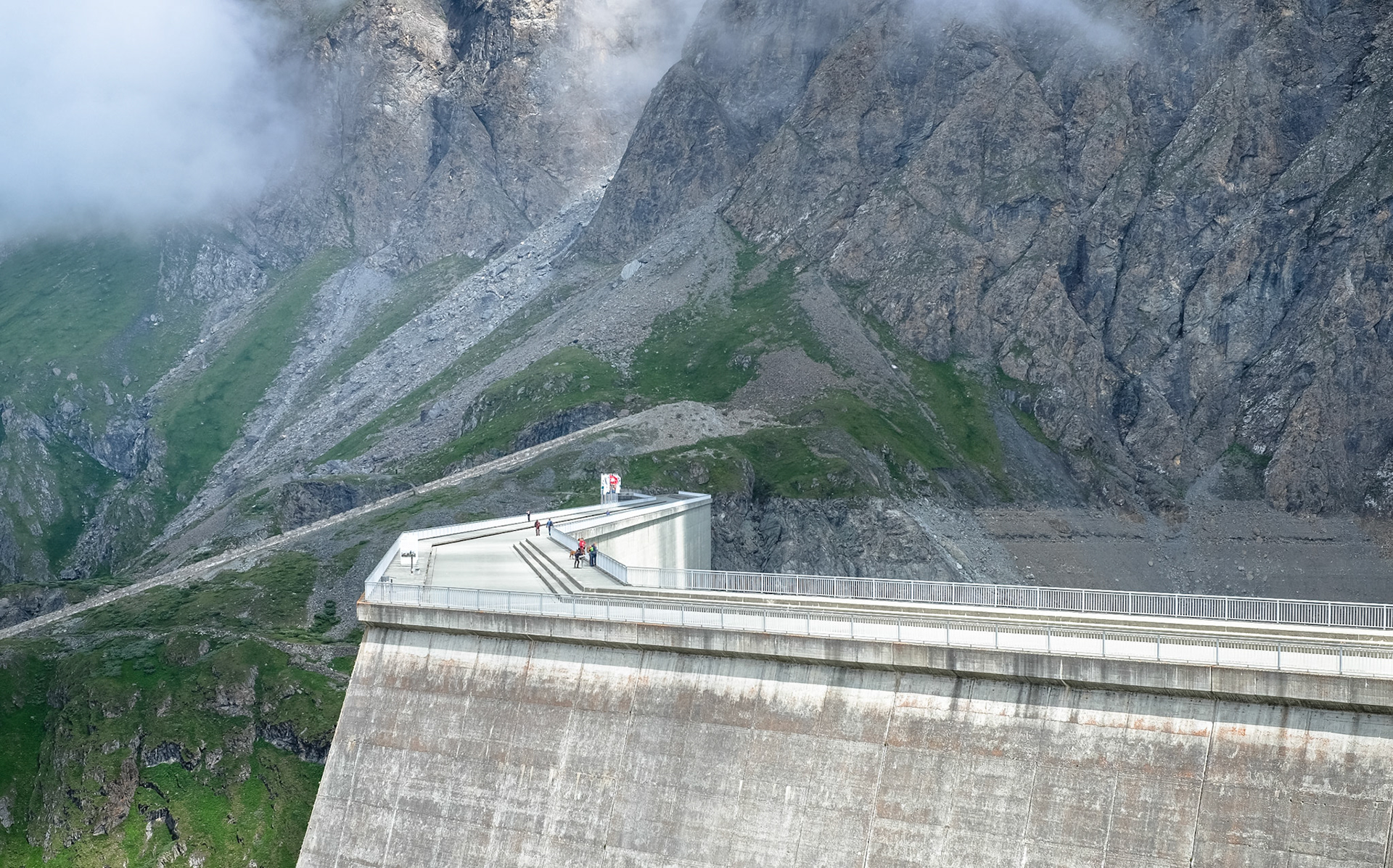
Grande Dixence - footpath on the top of the dam
Despite the spring weather, where we enjoyed sun, snow and everything in between, we had very relaxing days discovering the beauties - both natural and man-made - of Valais.
